We recently embarked on a journey focused on celebrating the retirement of our brother-in-law, visiting our youngest daughter in Sweden (twice), hunting for trolls in Denmark, visiting our Danish exchange student and his family, and looking for ancestral clues on my side of the family. What follows is a brief summary of our trip.
Portugal
We began our journey with a couple of days in the seaside city of Porto. Porto is described on Wikipedia as follows: “Porto, also known as Oporto, is the second-largest city in Portugal, after Lisbon. It is the capital of the Porto District and one of the Iberian Peninsula’s major urban areas. Porto city proper, which is the entire municipality of Porto, is small compared to its metropolitan area, with an estimated population of just 248,769 people in a municipality with only 41.42 km2 (16 sq mi). Porto’s metropolitan area has around 1.8 million people (2023) in an area of 2,395 km2 (925 sq mi), making it the second-largest urban area in Portugal.”
Upon our arrival, we were transported to the InterContinental Porto Palácio das Cardosas, a former 18th-century palace located in the old city. Our two full days in Porto were spent walking around the Ribeira District, discovering Vila Nova de Gaia on the opposite side of the Douro River, testing various pastry shops that we happened upon, and generally looking for good food. A few pictures from this portion of our trip are provided below.
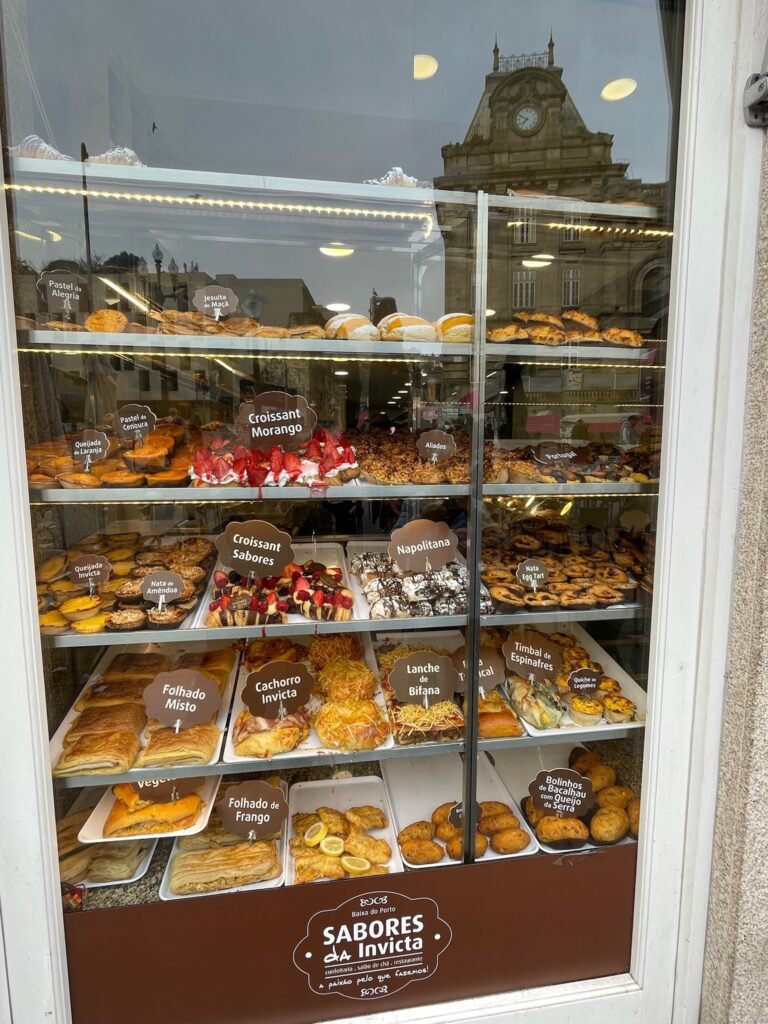
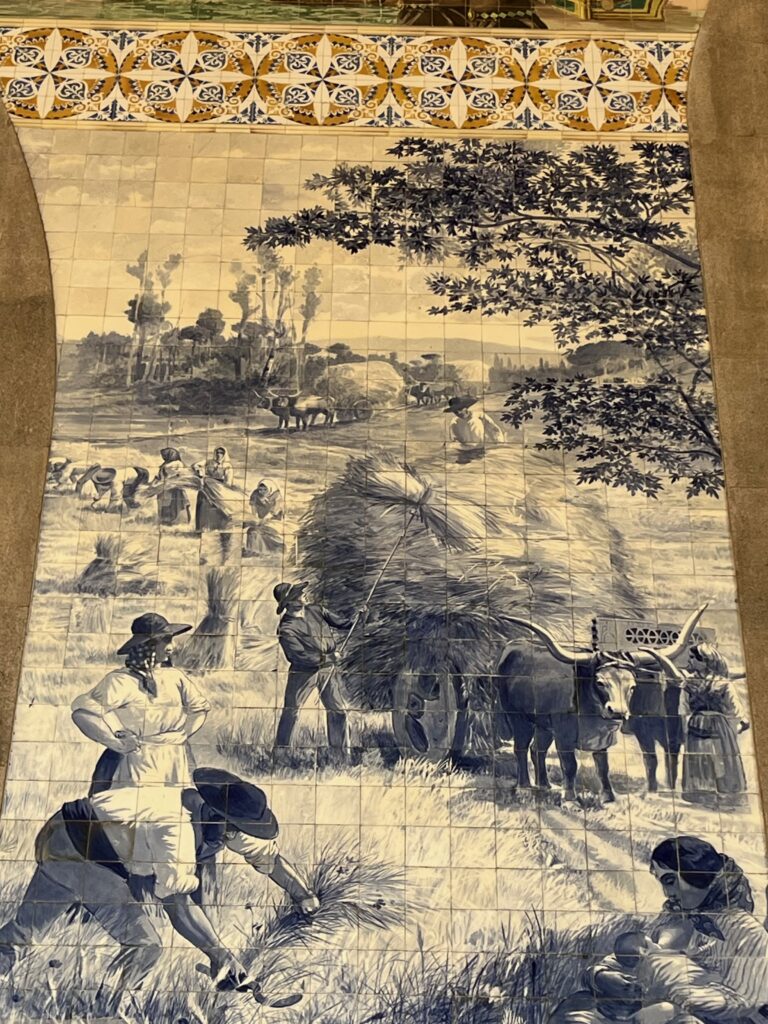
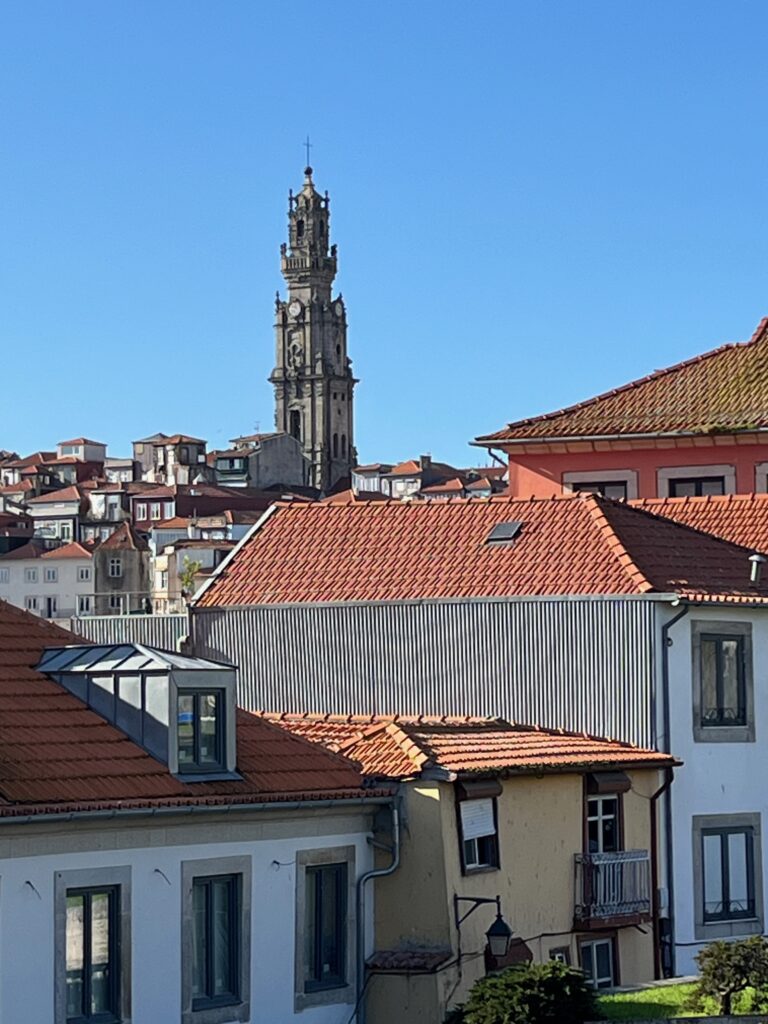
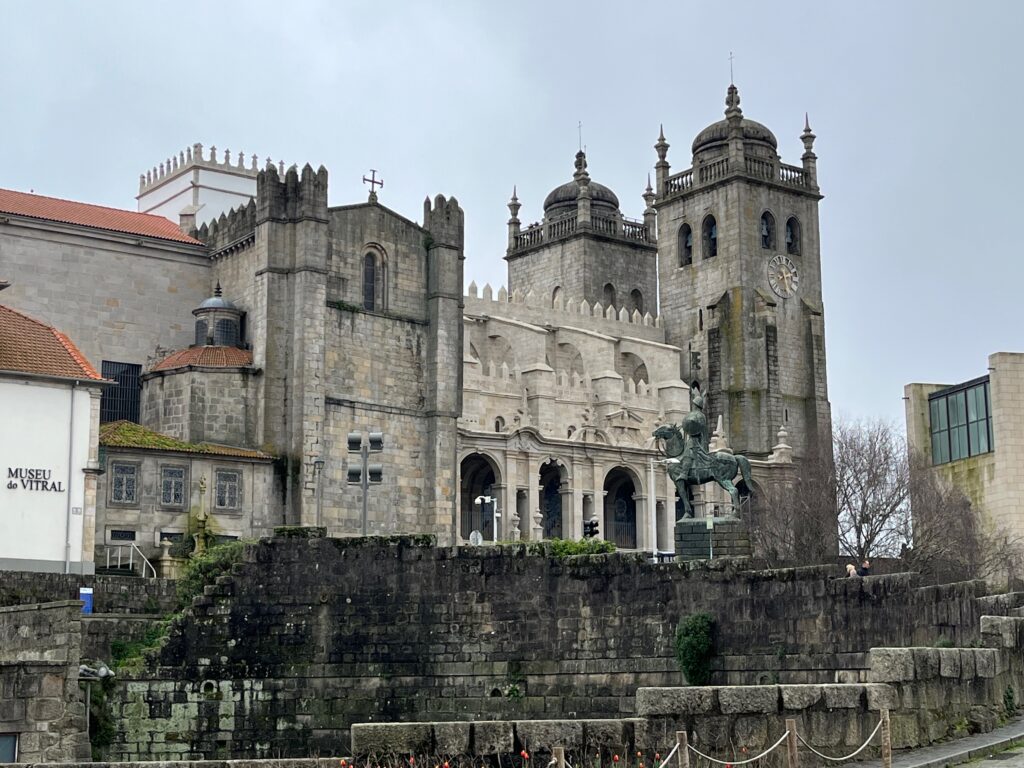
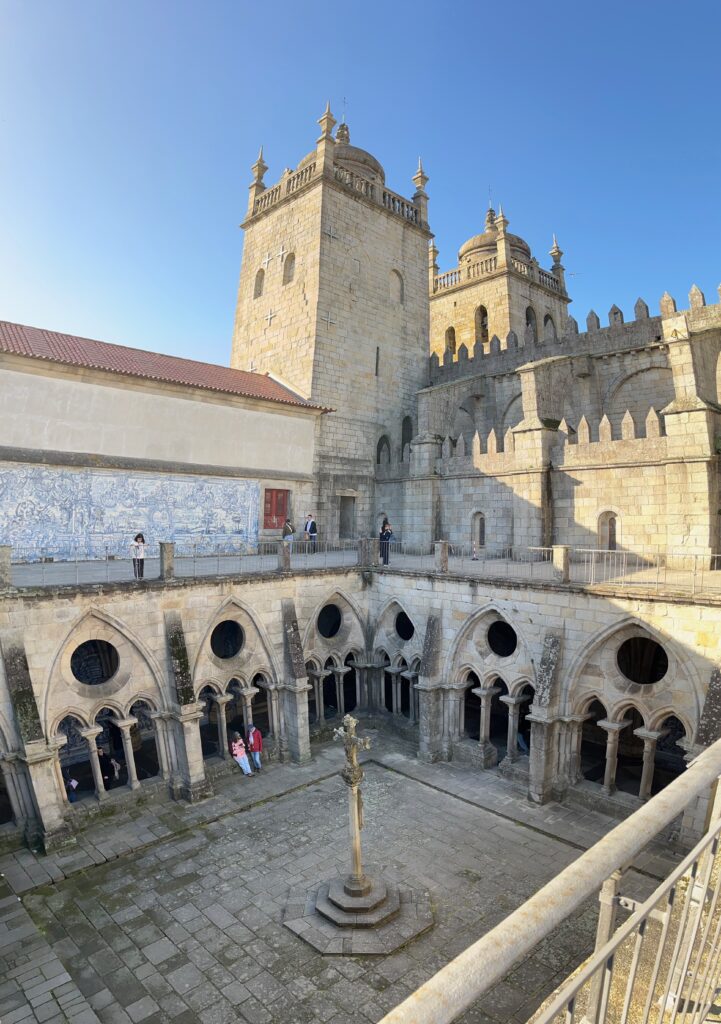
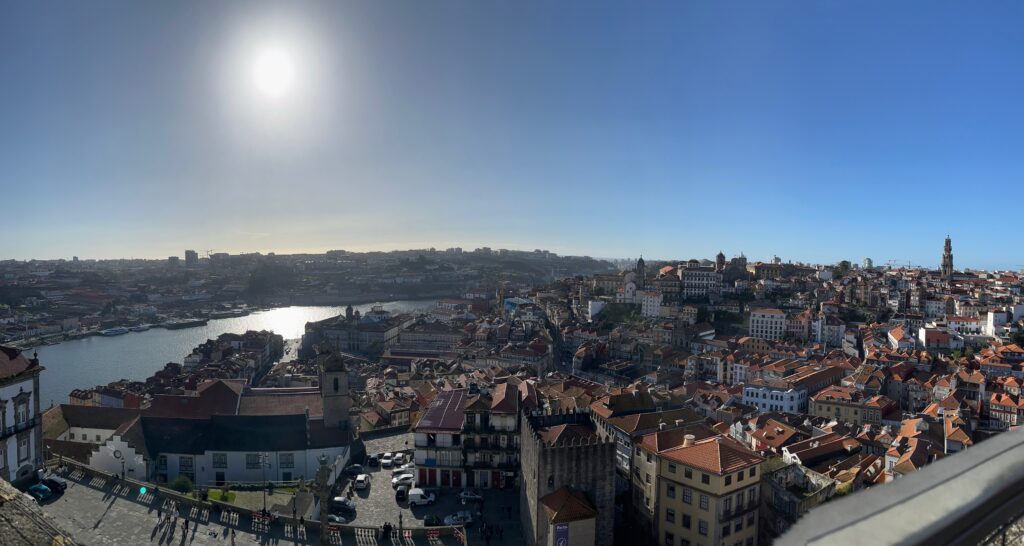
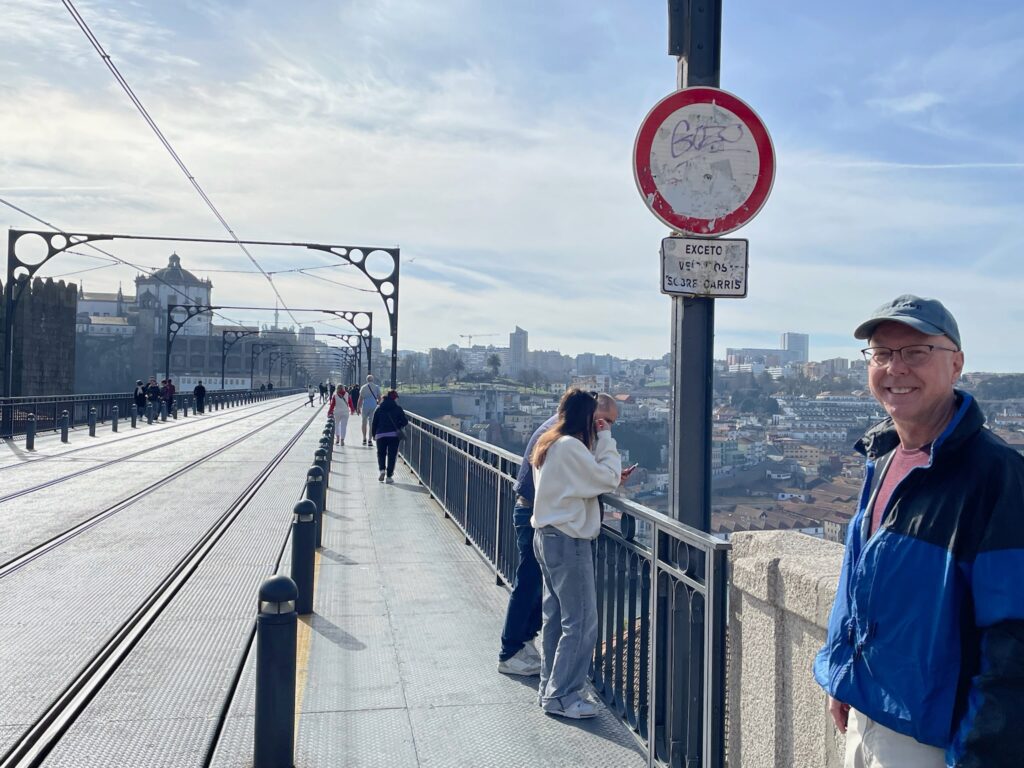
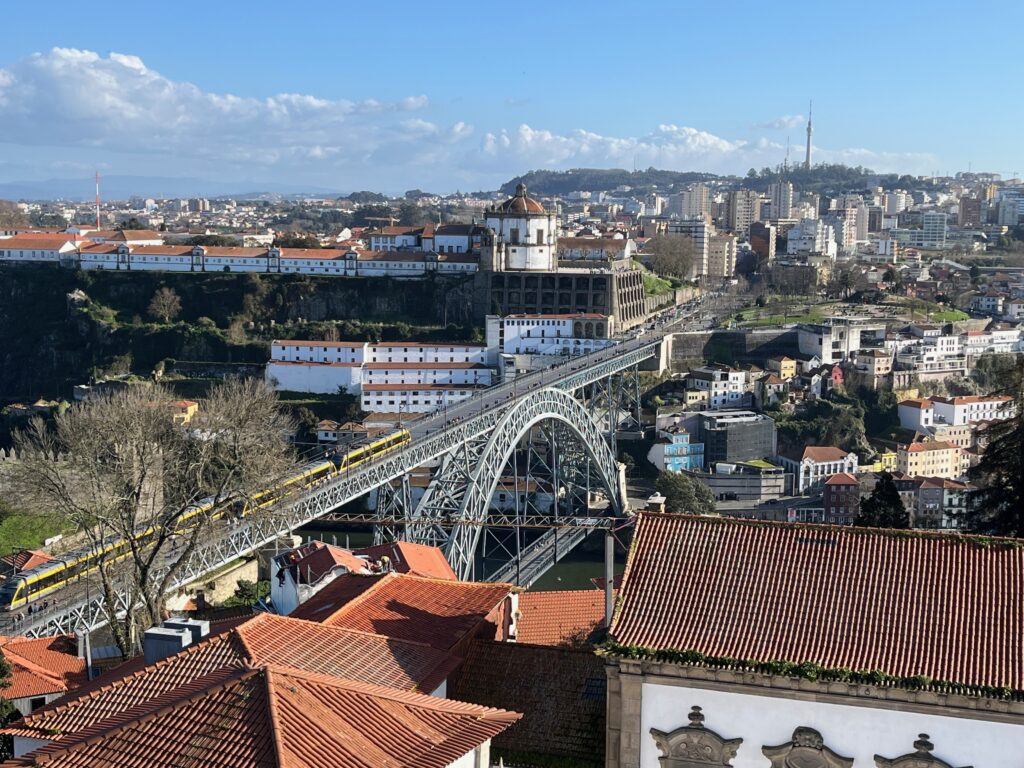
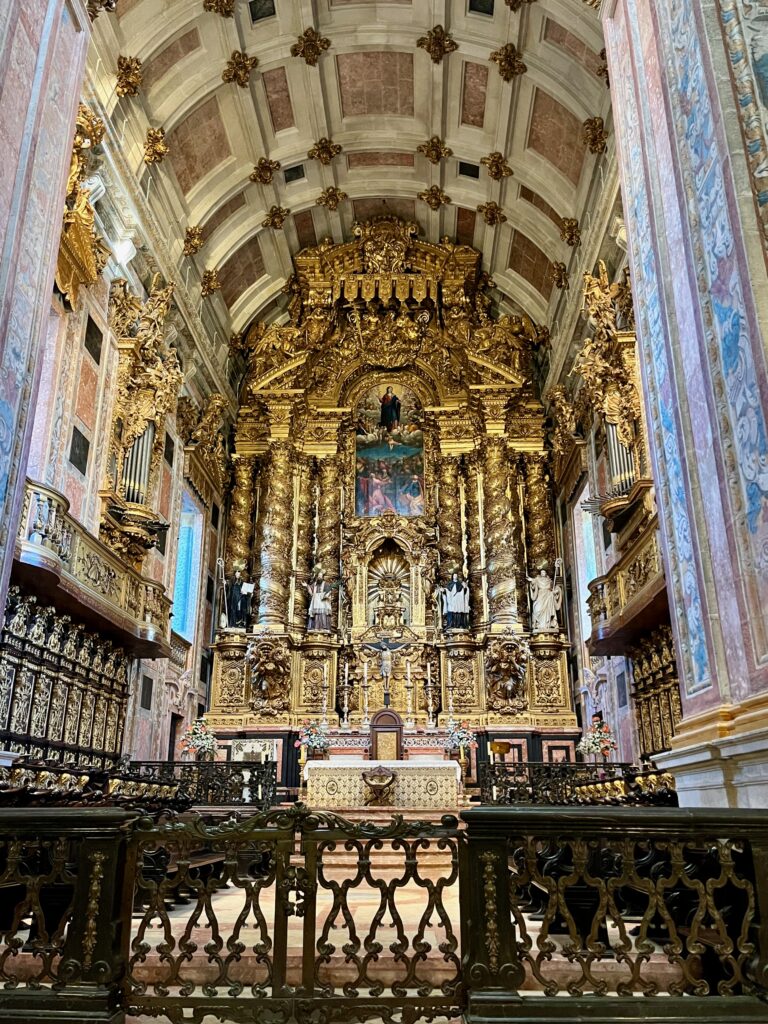
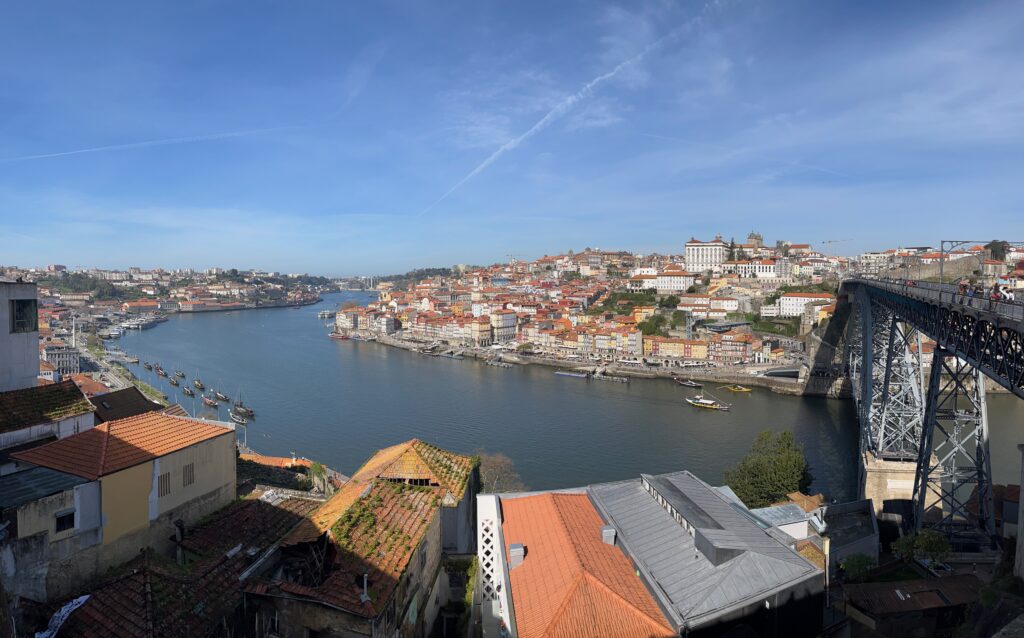
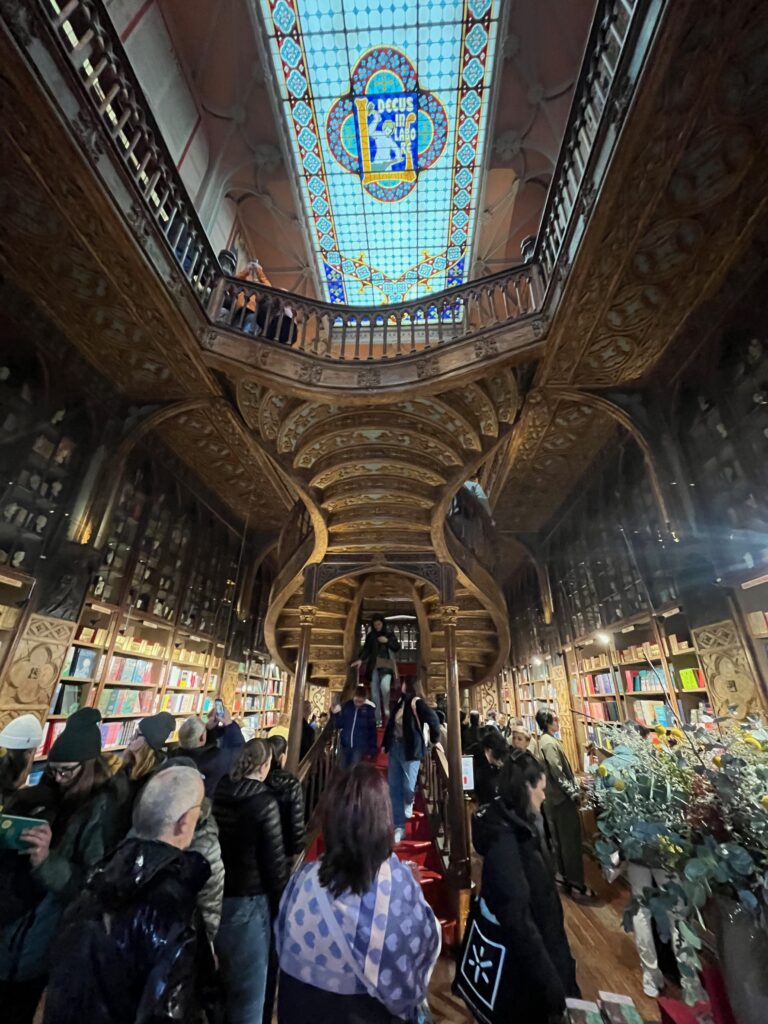
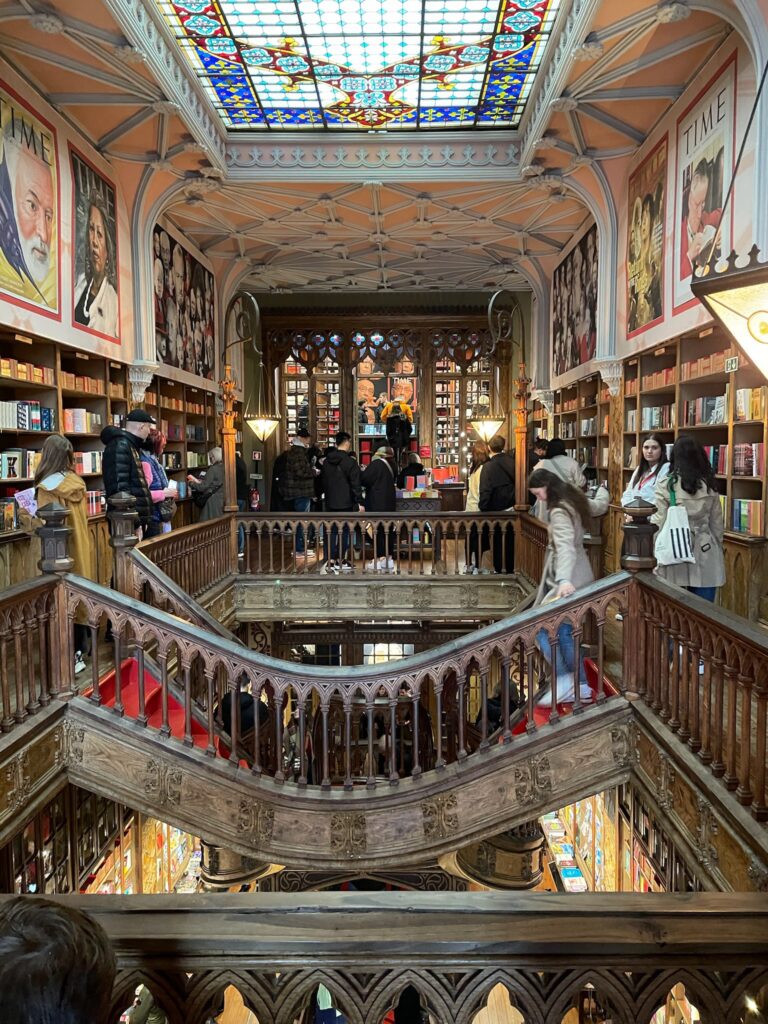
We then picked up our rental car at the Porto airport and headed east into the Douro Valley. For lodging, our in-laws had been able to procure a house owned by a couple they know for us to stay in while touring the Douro Valley. The house was located in the town of Valença do Douro, a small village with a population of only 254 residents (as of 2021). Valença do Douro is located near Pinhão, known as the “Gateway to the Douro Valley” because of its location within Cima Corgo, the largest wine-producing subregion with 19,000 hectares (47,000 acres) of vineyards and the home to the majority of the famous Quintas (from Wikipedia: “A quinta [in this context] is … an appellation for agricultural estates, such as wineries, vineyards, and olive groves).
The drive from Porto to Valença do Douro was uneventful enough, and gave me an opportunity to get accustomed to a manual transmission and to the frequent switchbacks encountered while driving through the hills and deep valleys surrounding the Douro River. It is, of course, these hills and valleys that make the Douro Valley the prime place that it is for the growing of grapes for wine and Port.
We spent four days wandering the Douro Valley, particularly the villages previously mentioned. Highlights included walks through the small villages, the scenery overlooking the valley, an excellent lunch at Quinta de Seixo (located at the Sandeman winery just minutes from our house), a boat ride with wine and Port tasting on the Douro River, and watching the Carnival parade in Pinhão. A few pictures from this segment of the trip are provided below.
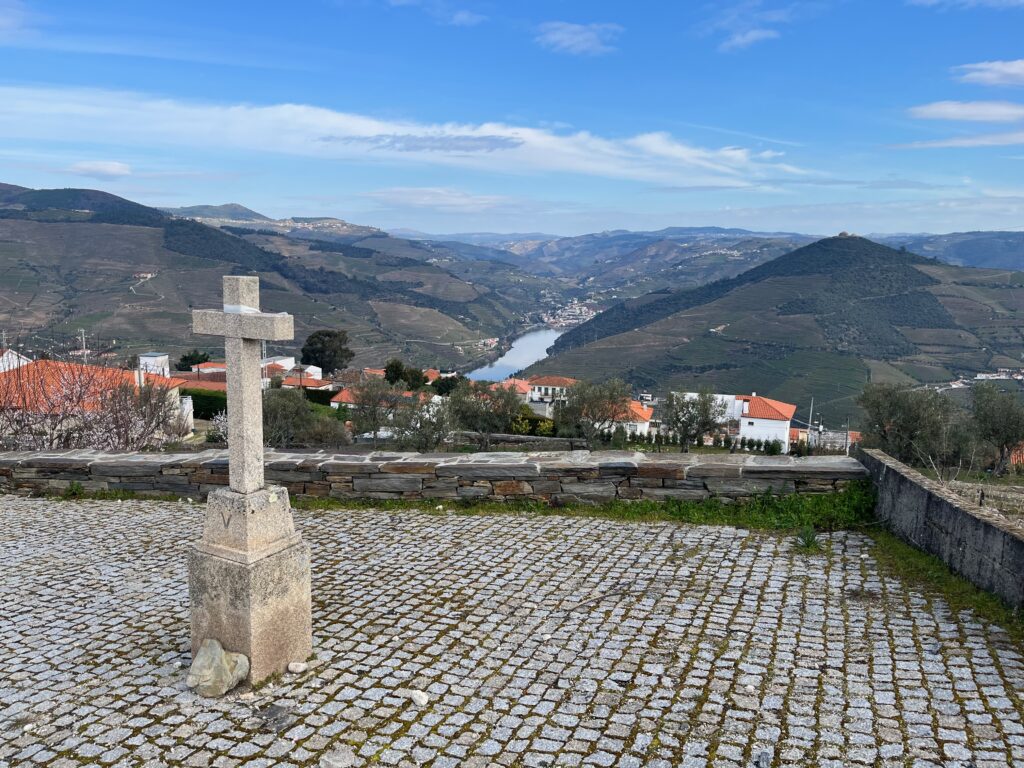
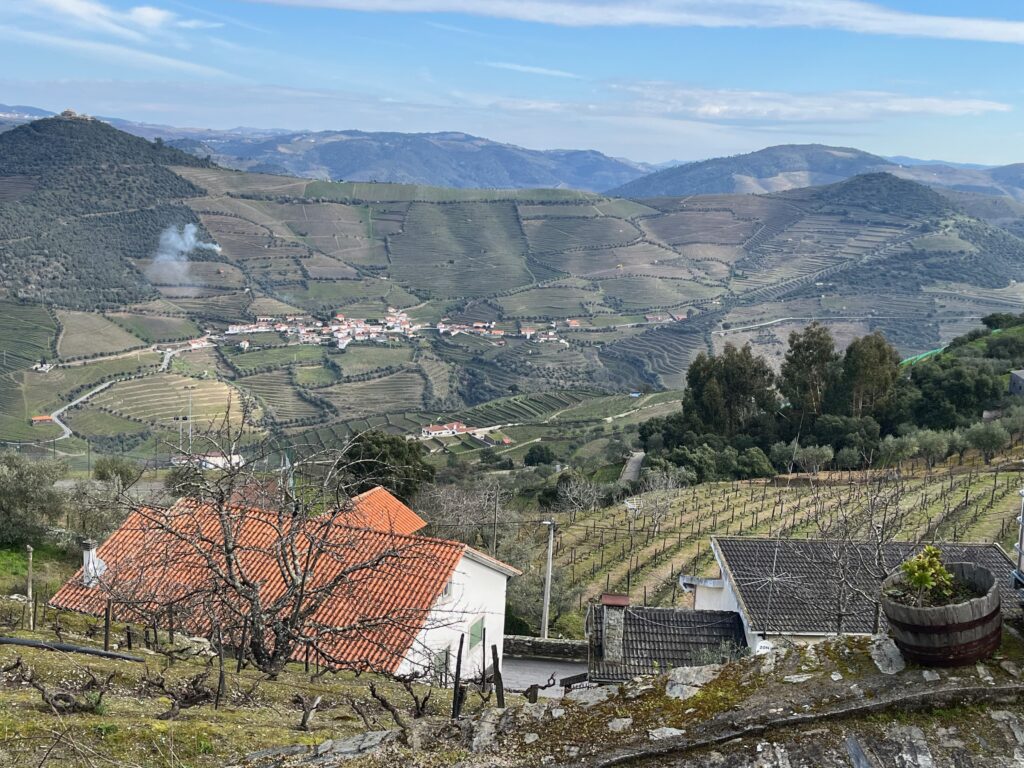
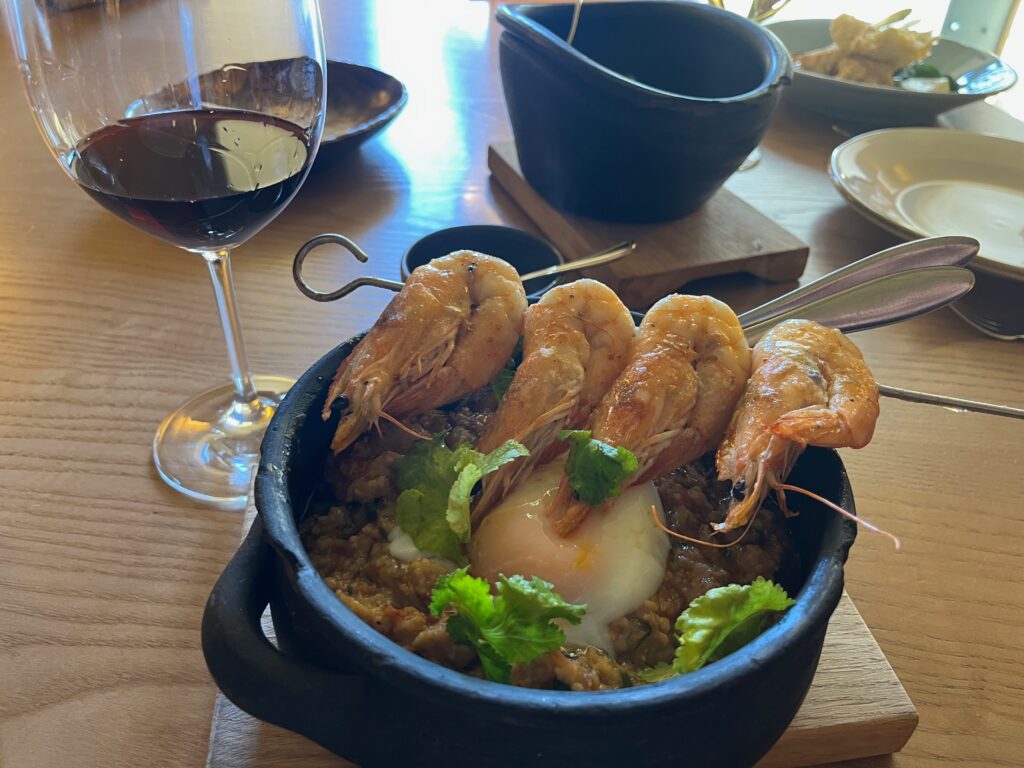
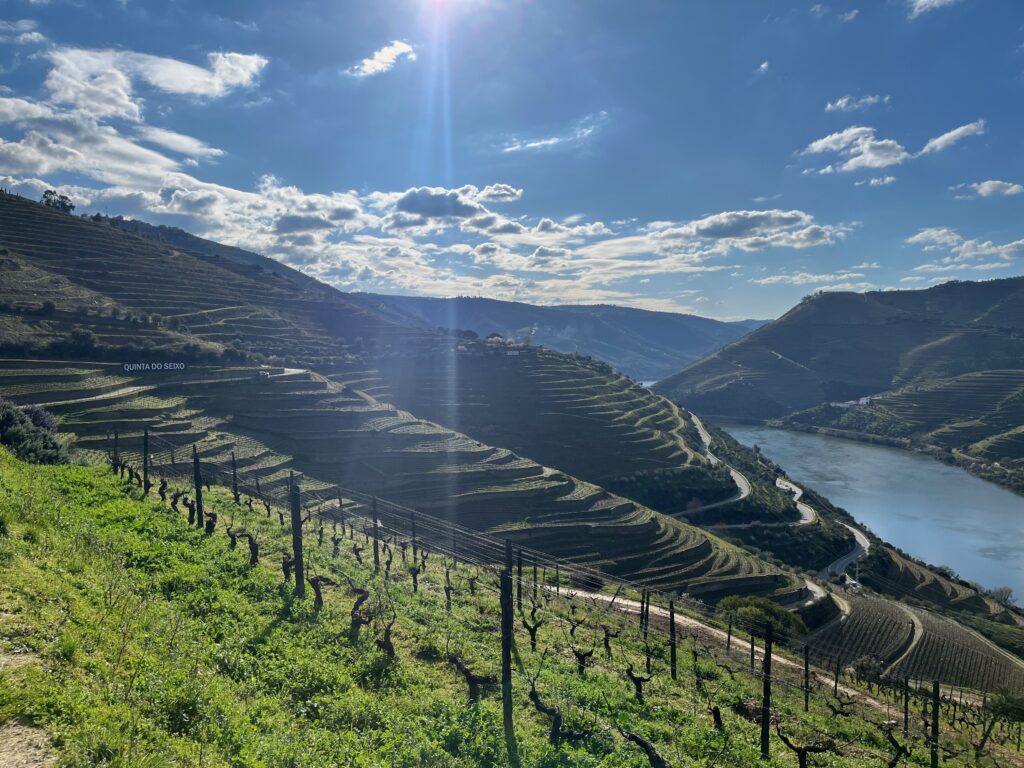
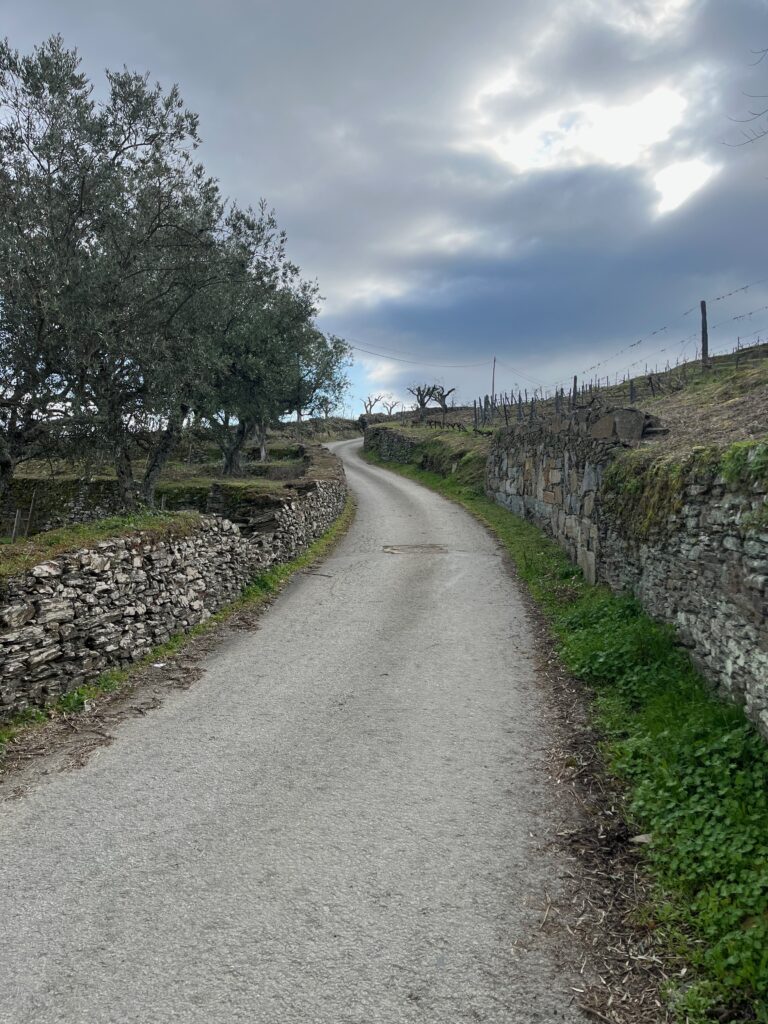
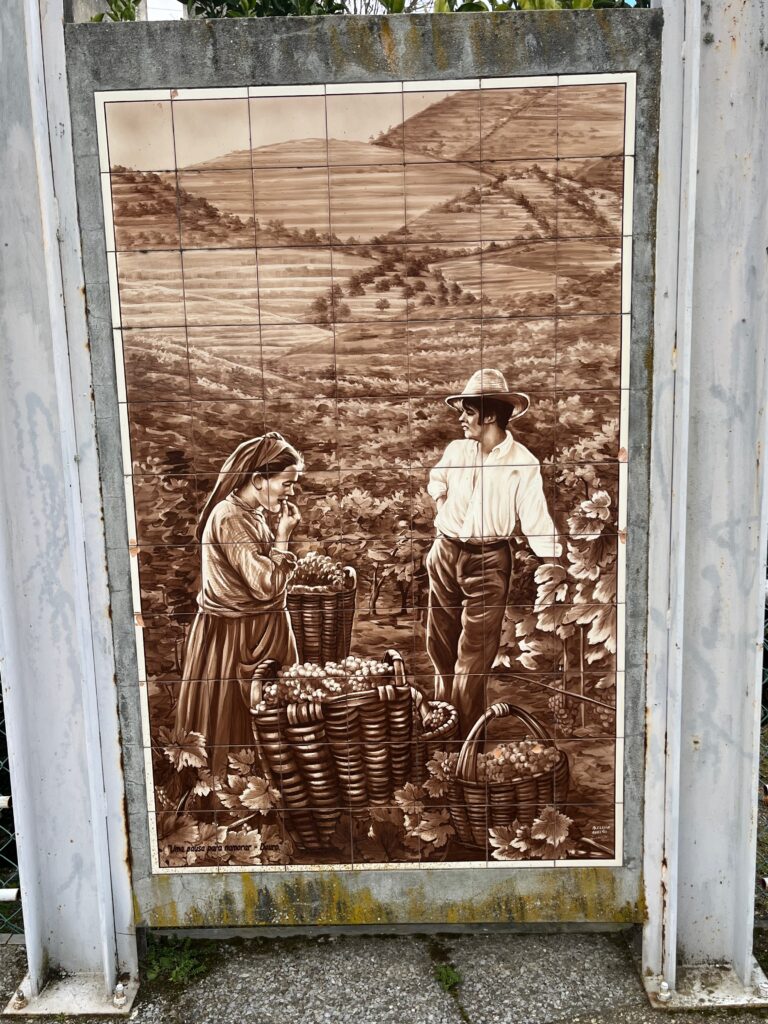
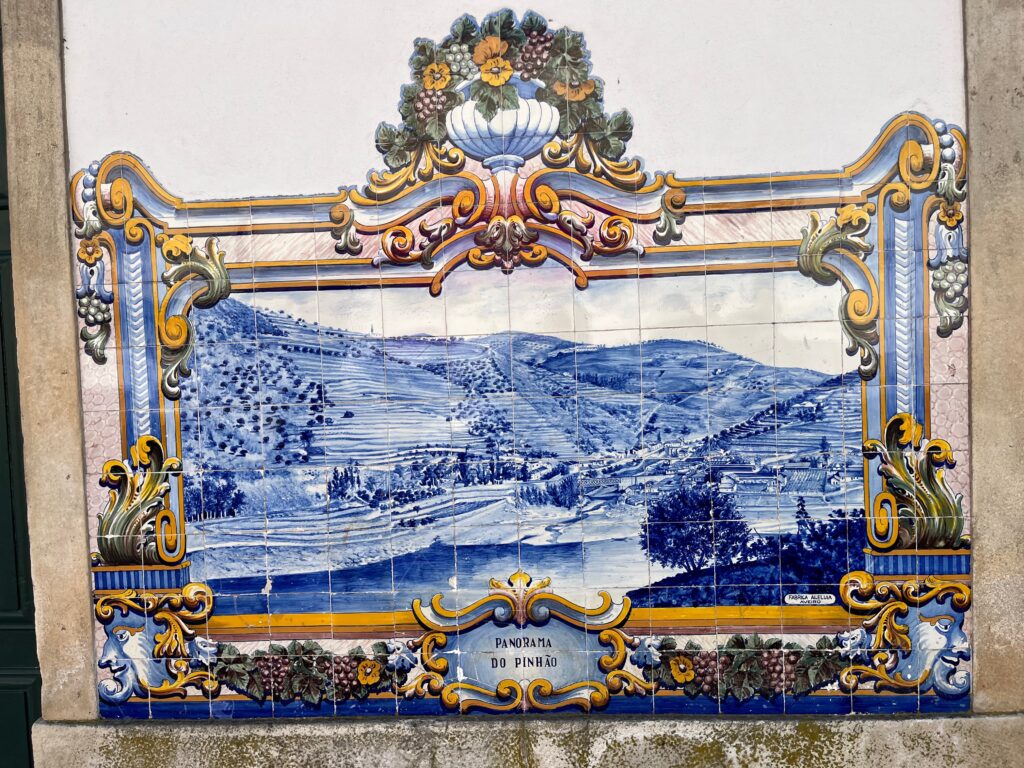
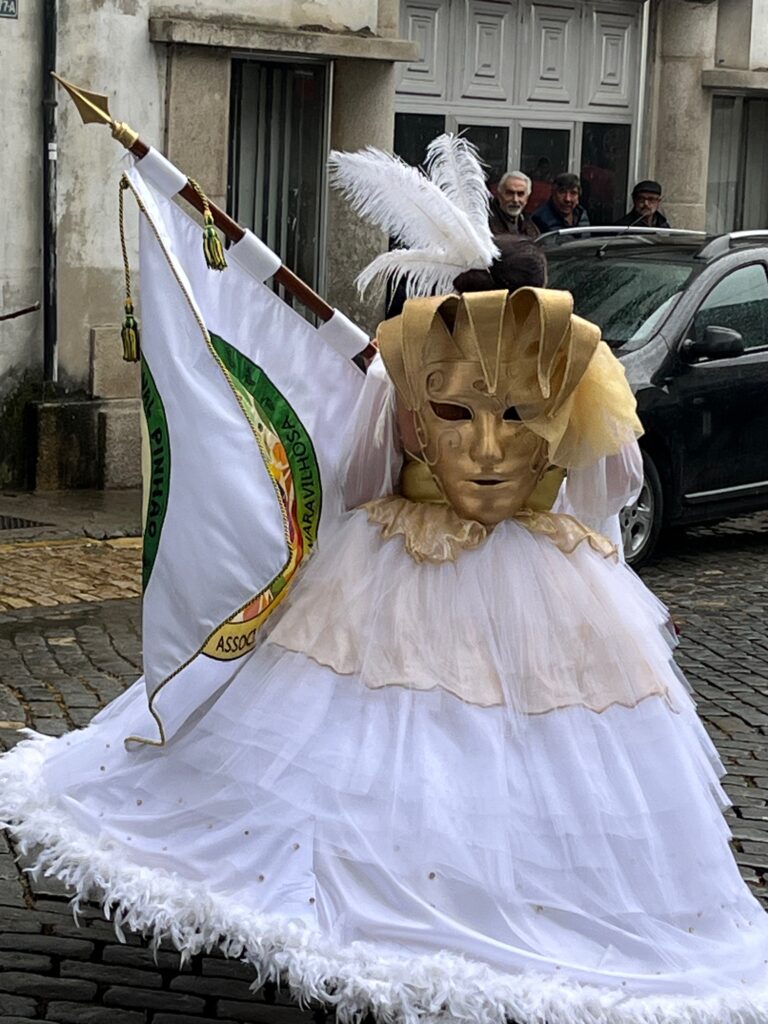

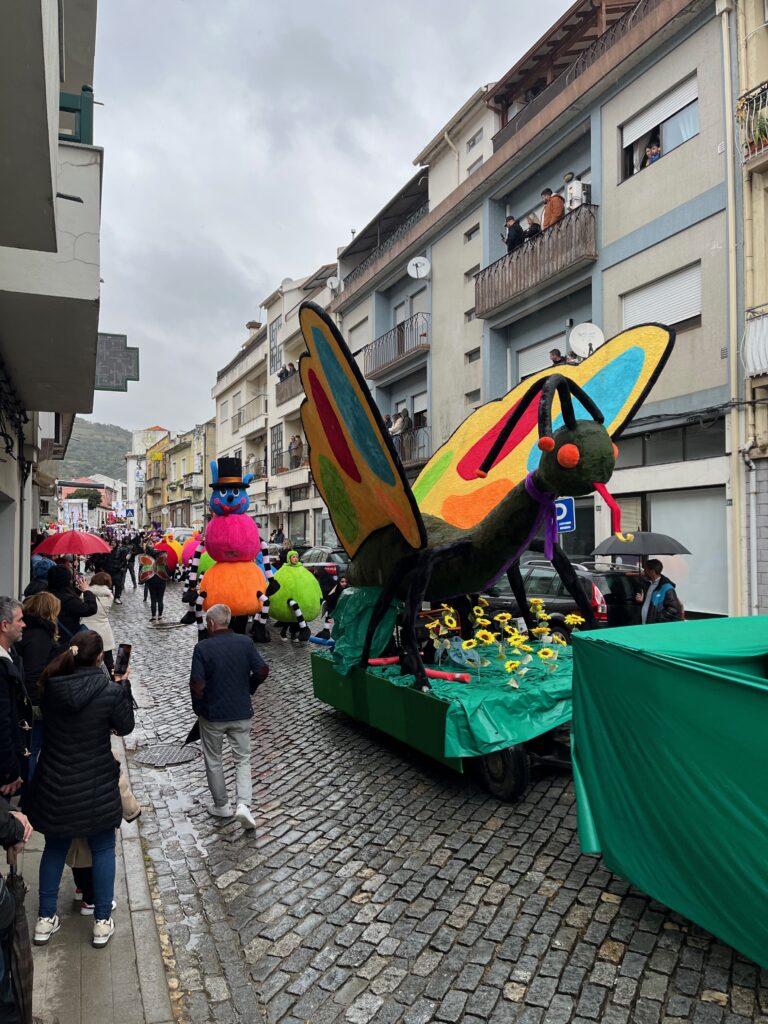
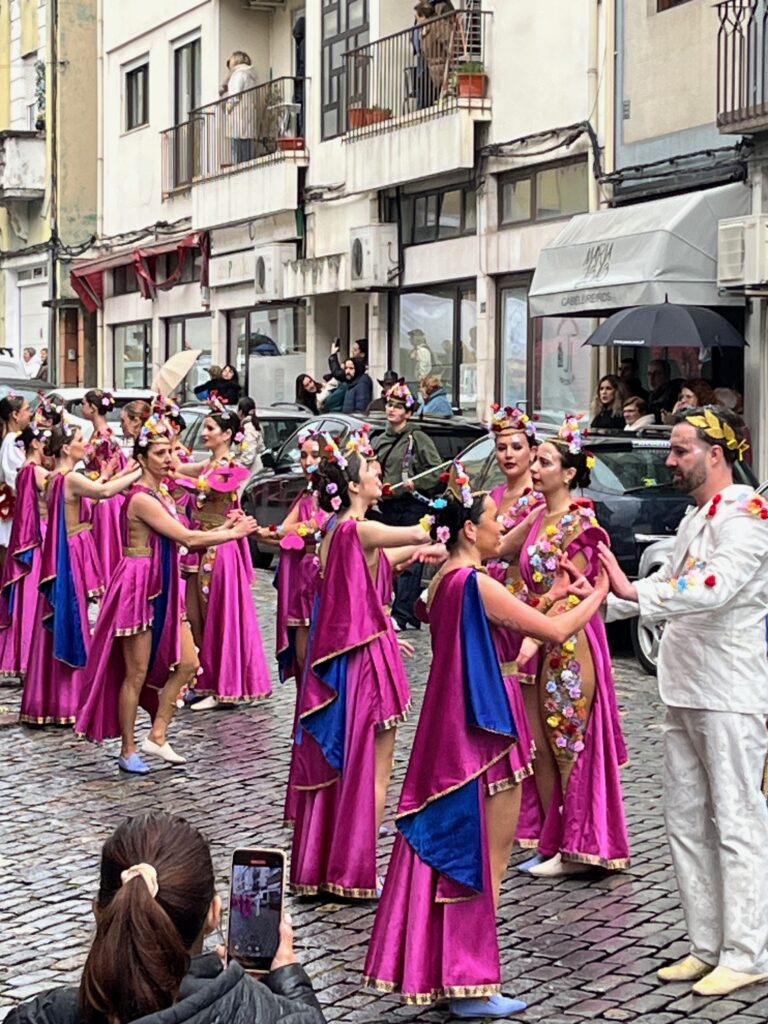
After a few days in the Douro Valley, we decided to head back to Porto to spend a few more days exploring the museums, churches, and wine cellars it had to offer. After cleaning up the house, including several hours of washing and drying sheets and towels, we headed west back to Porto. This time we stayed at the Se Catedral Hotel Porto, part of the Hilton Tapestry Collection. The hotel was conveniently located across the street from the Porto Cathedral. From here we further explored Vila Nova de Gaia, the stained glass museum (Museu do Vitral), several churches in Porto, the Sandeman wine cellars, and a Fado singing concert. We also took an all-day guided tour to Braga and Guimarães, two nearby cities. Braga is known for known for its religious heritage and events, including the Bom Jesus do Monte complex which includes a neoclassical church atop an elaborate 17-flight stairway. Guimarães is known for its well-preserved medieval buildings like the hilltop, 10th-century Guimarães Castle. Select photos from this segment of the trip are provided below.
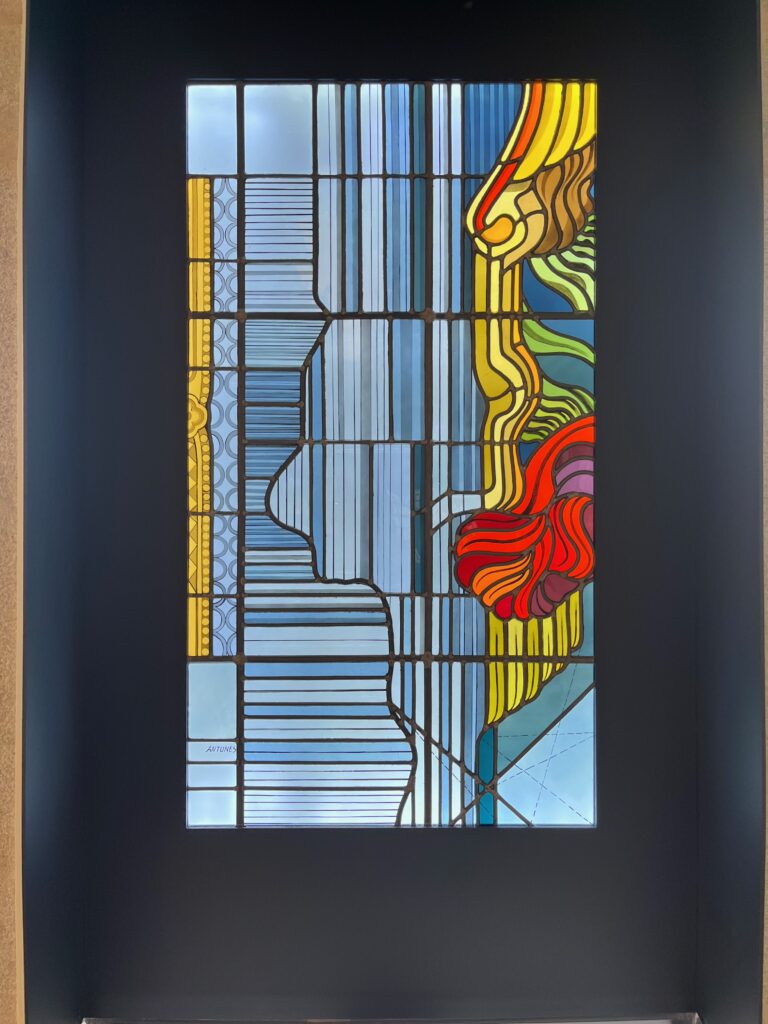
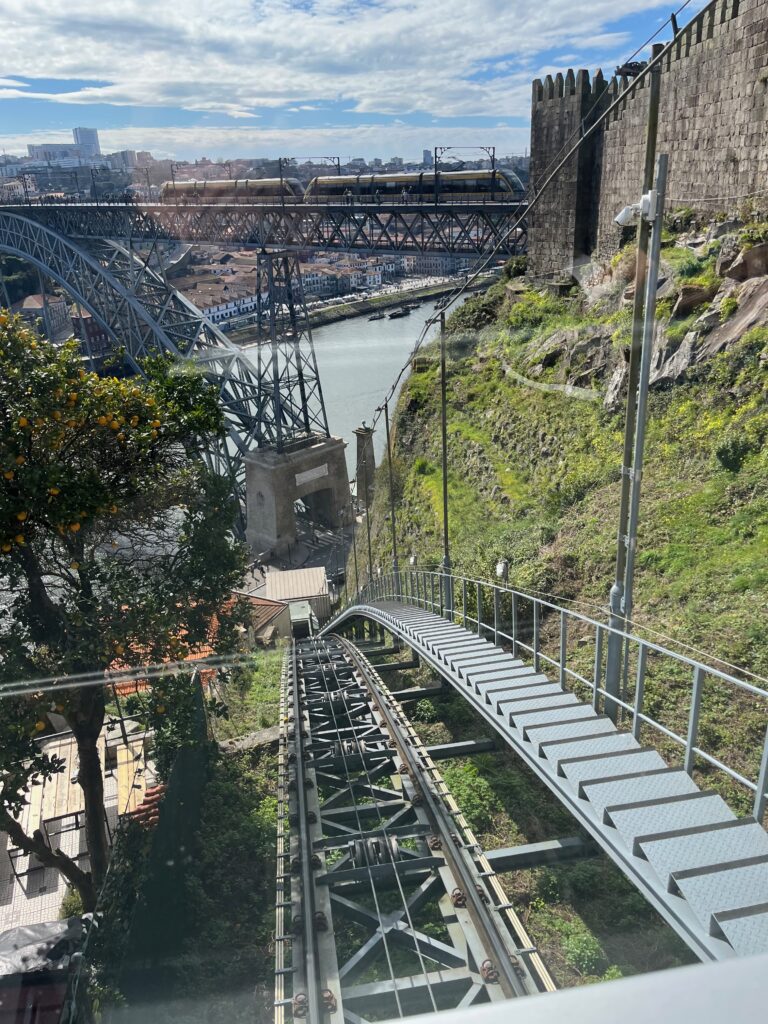
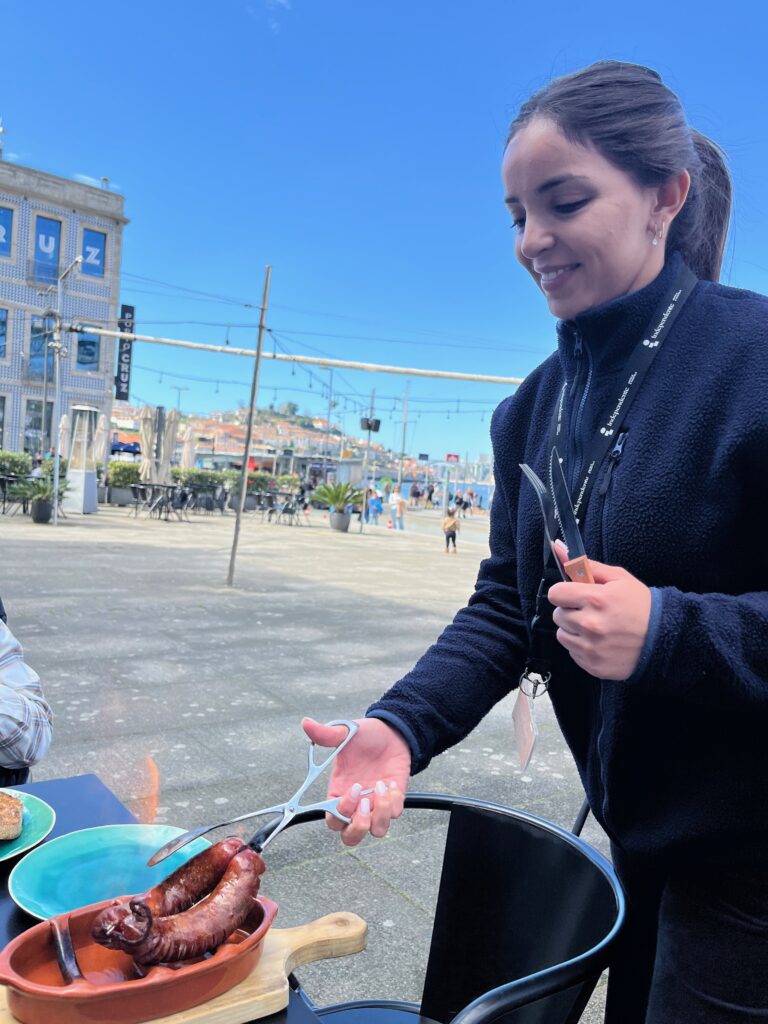
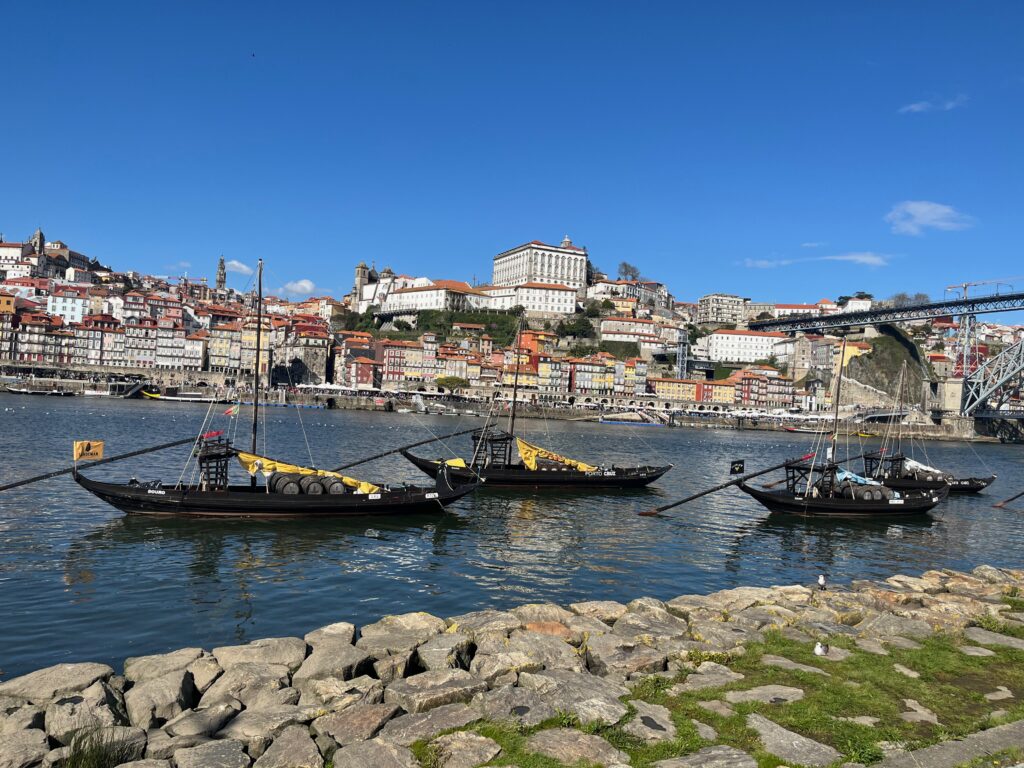
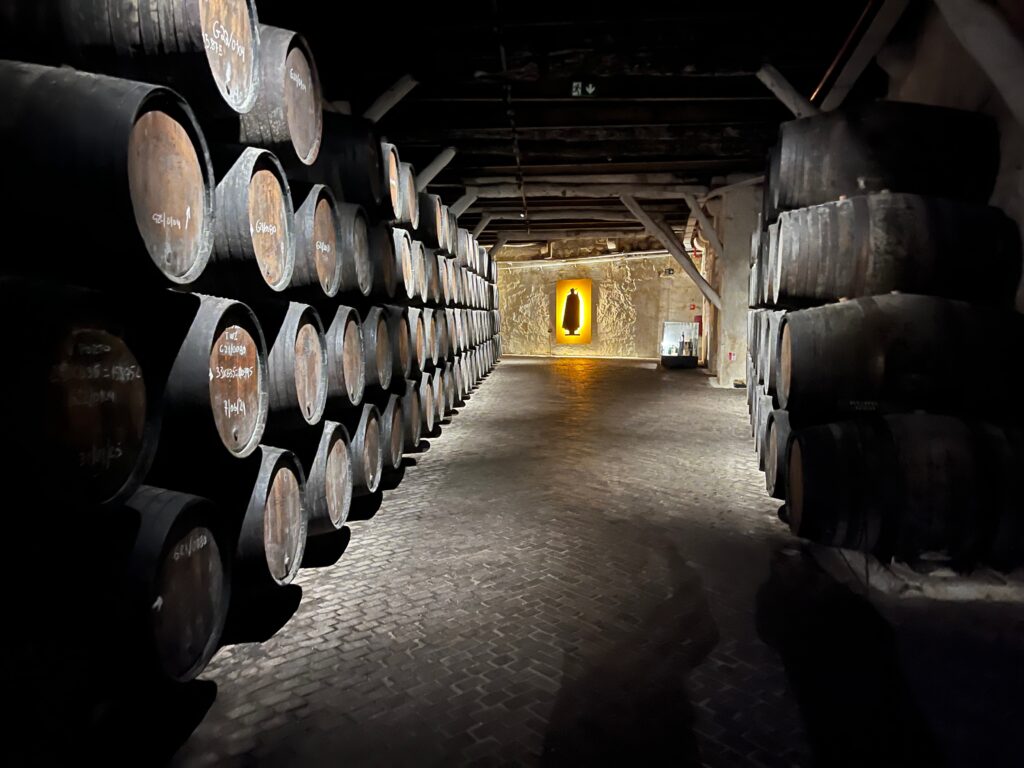
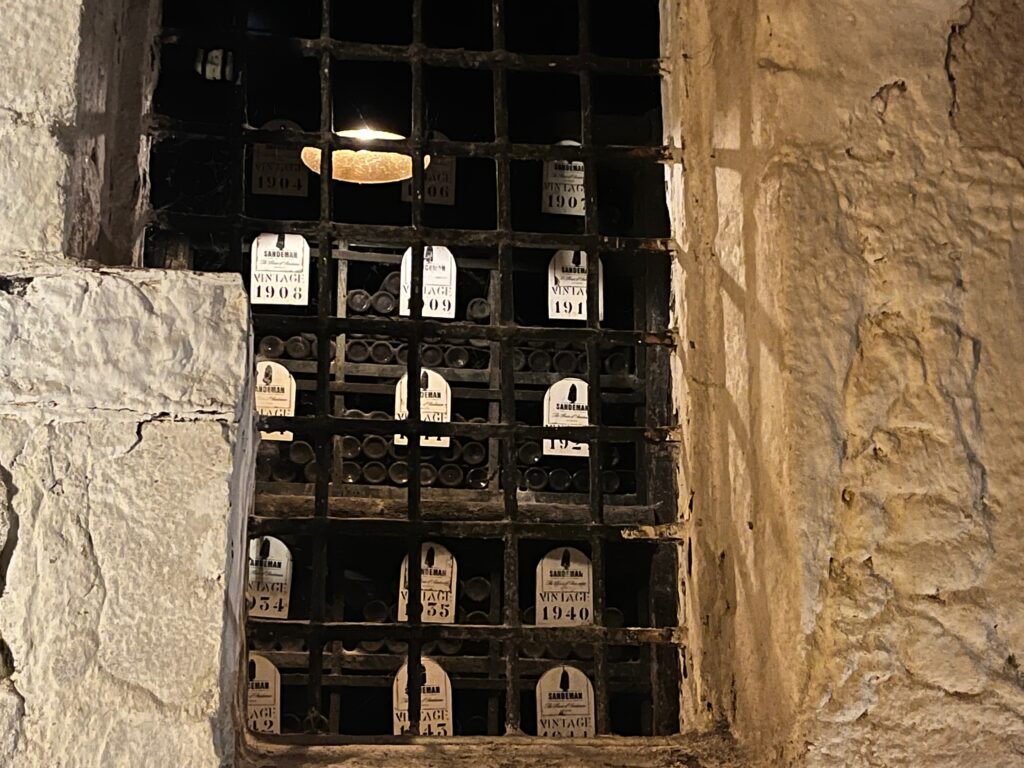
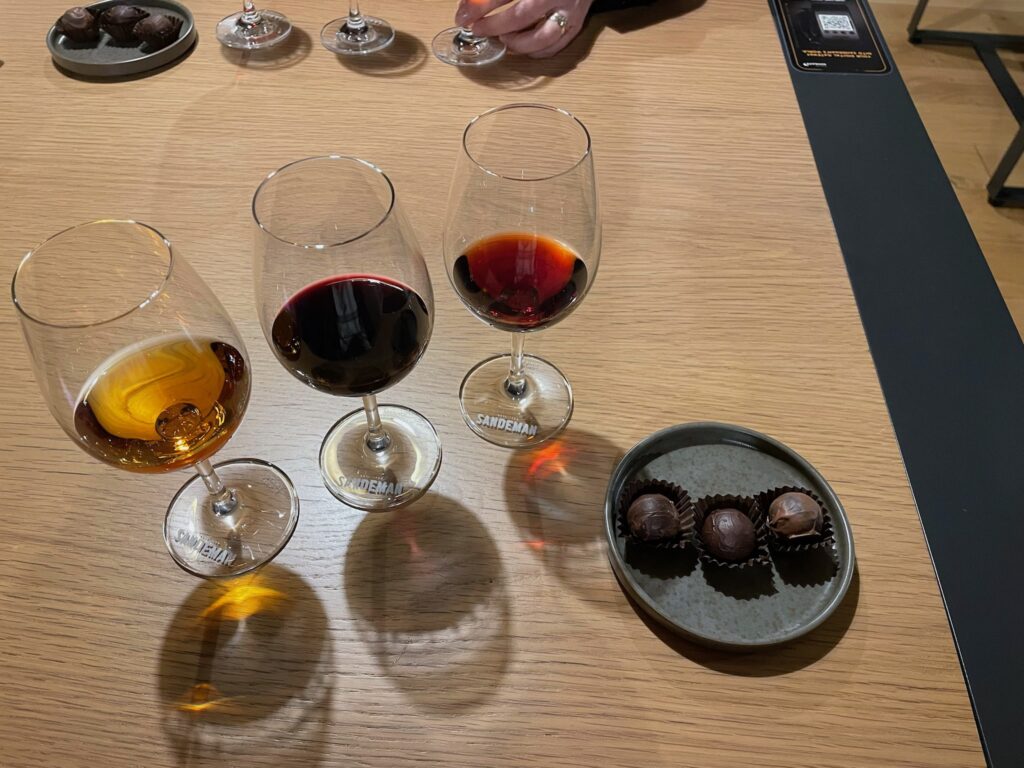
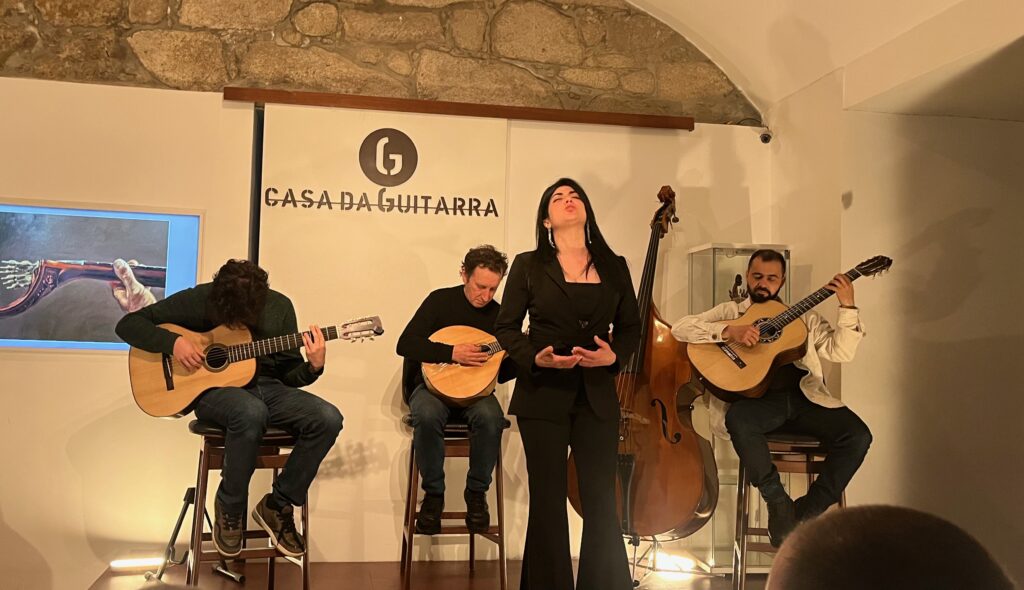
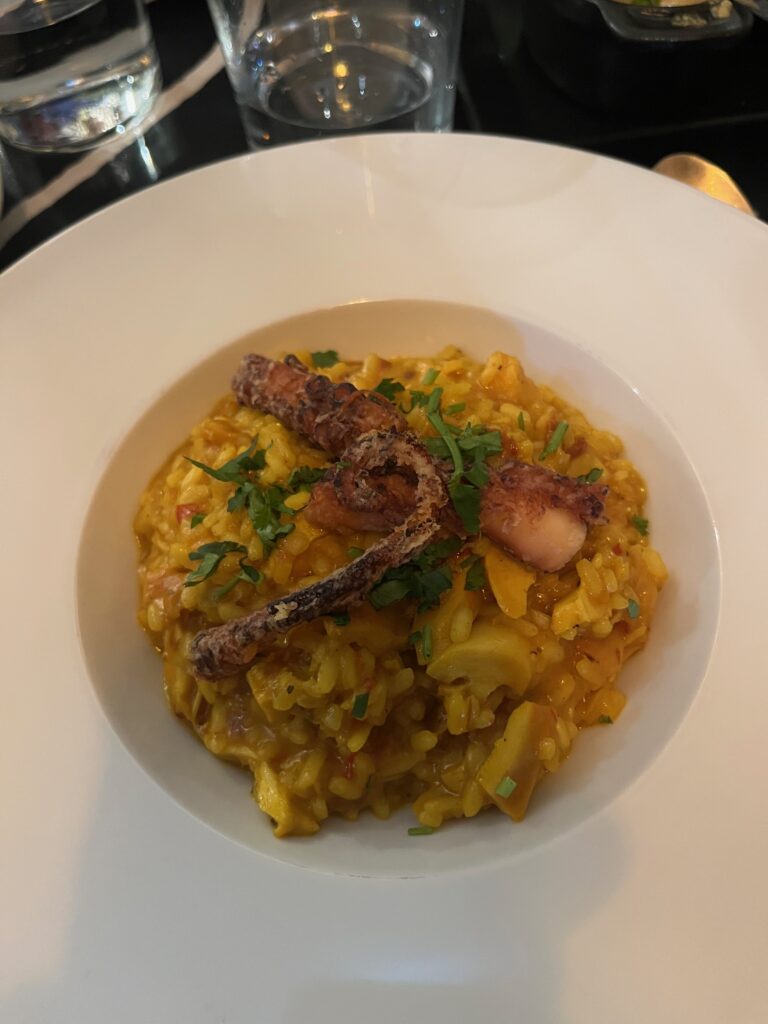
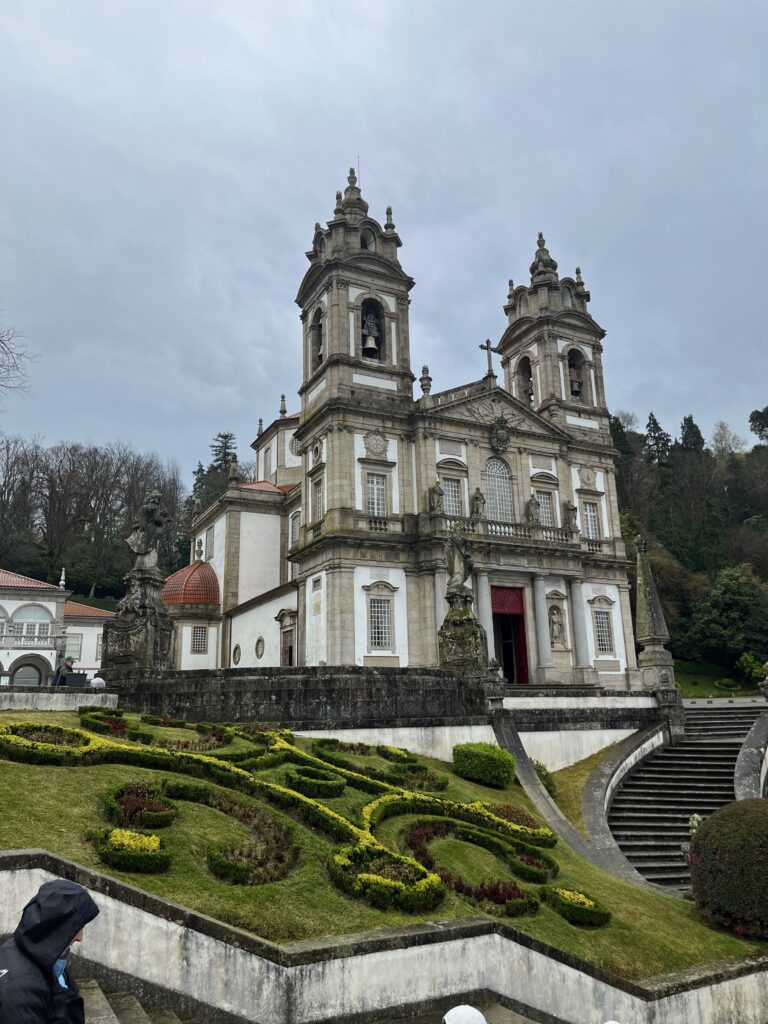
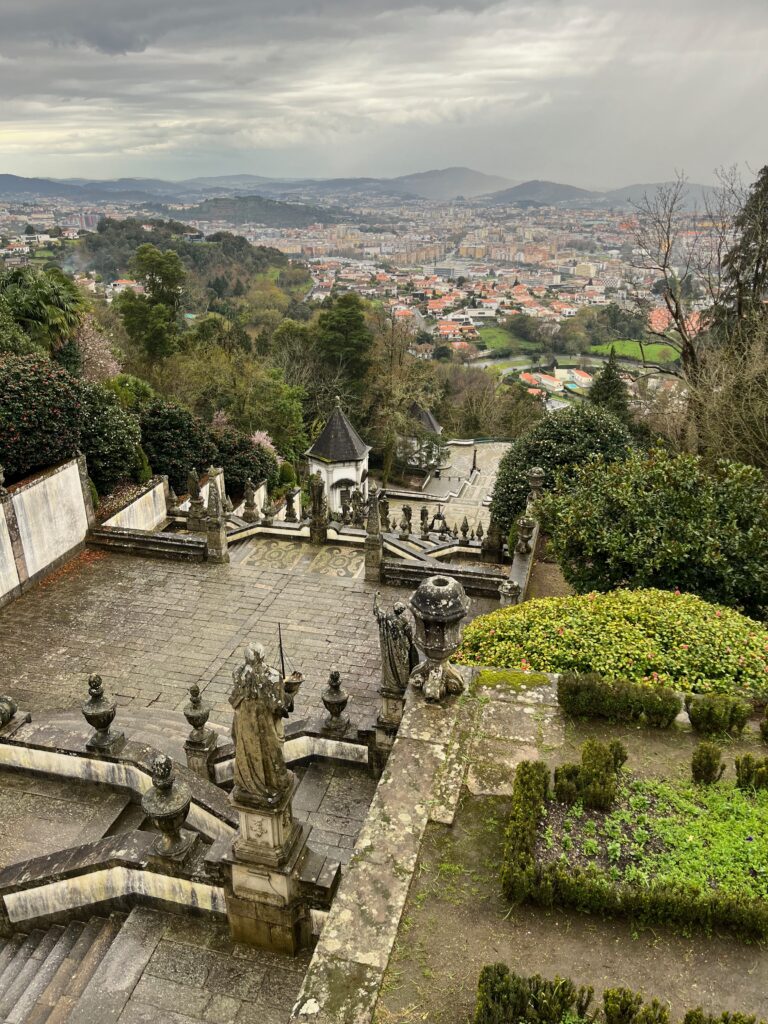
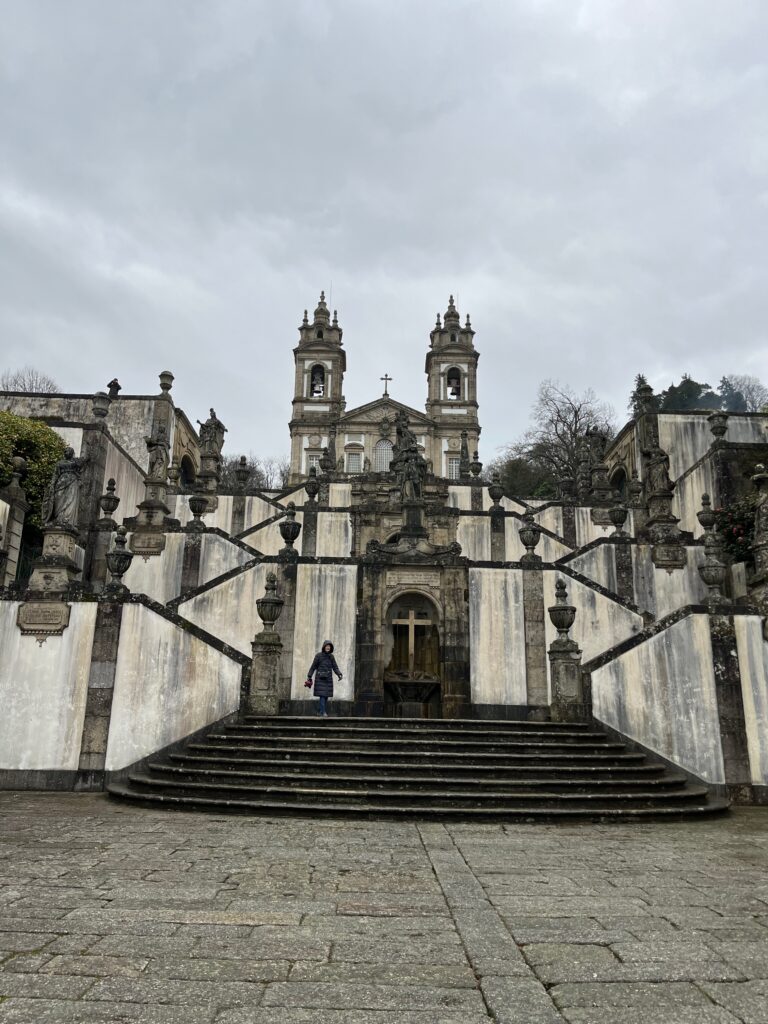
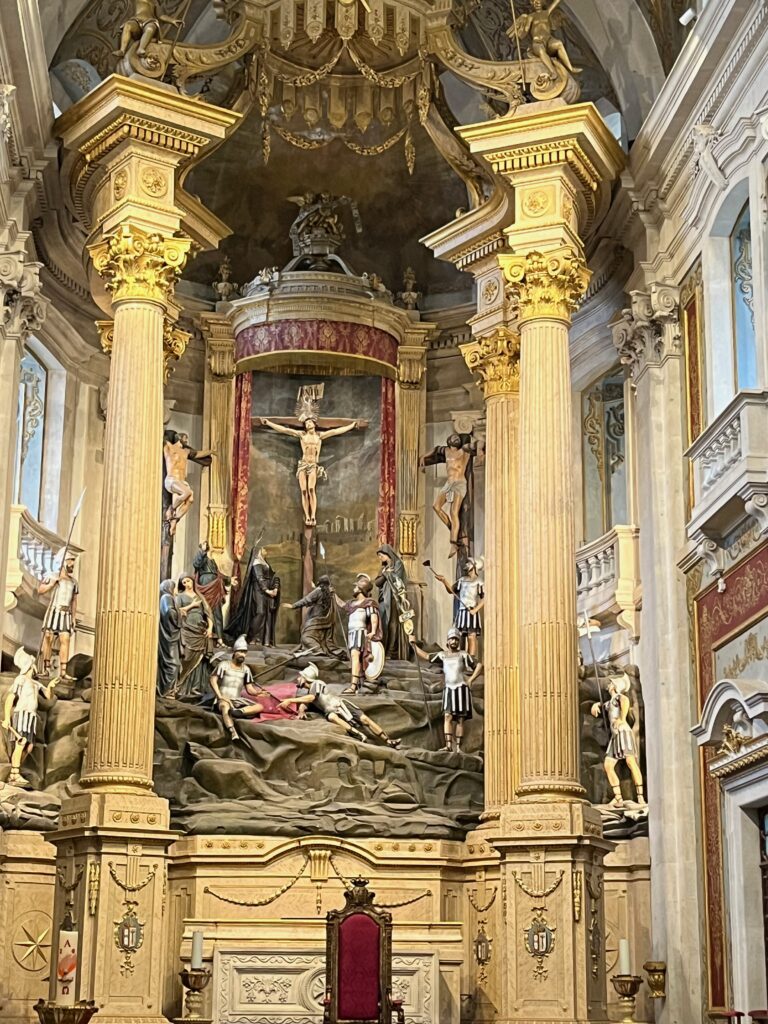
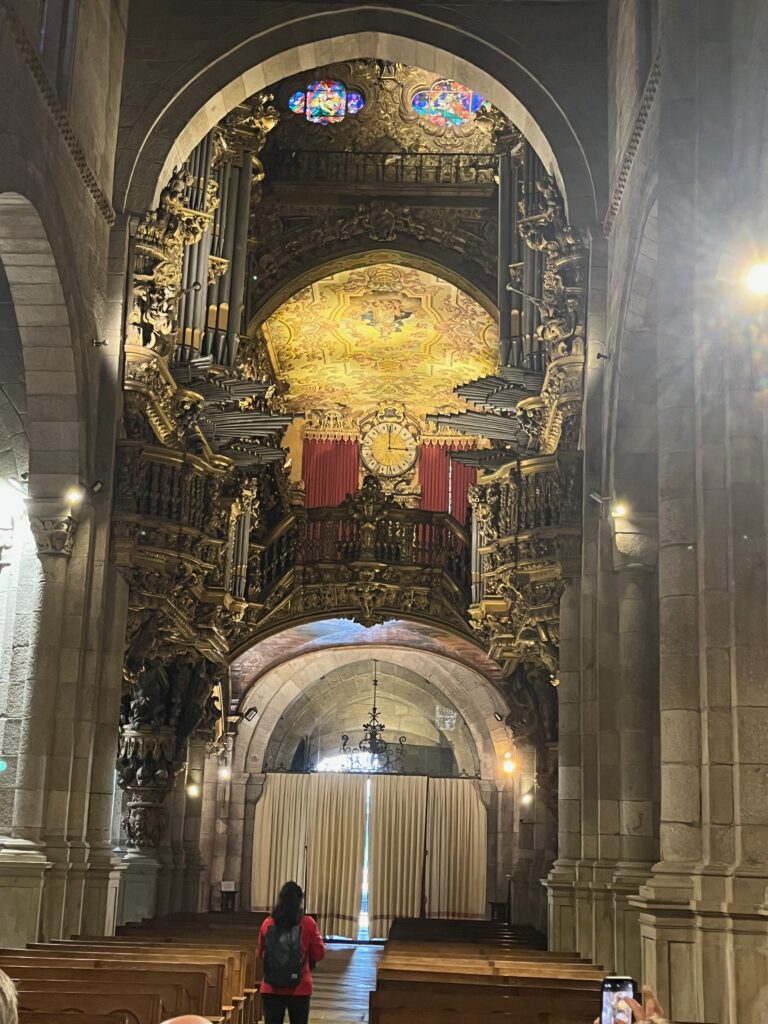
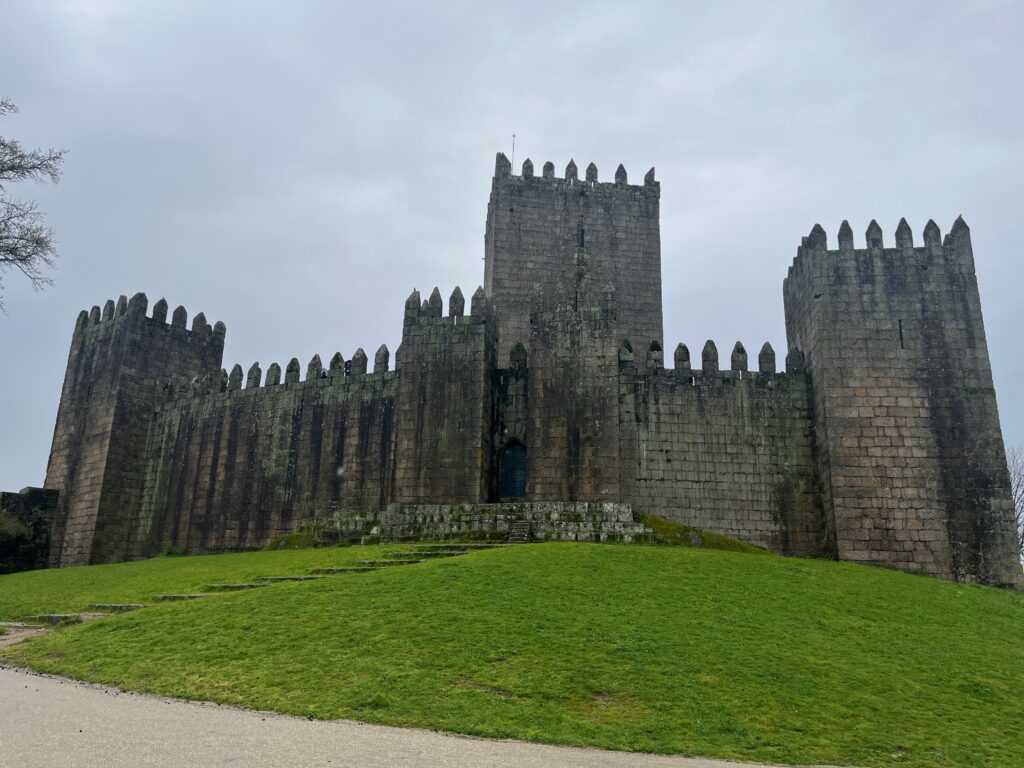
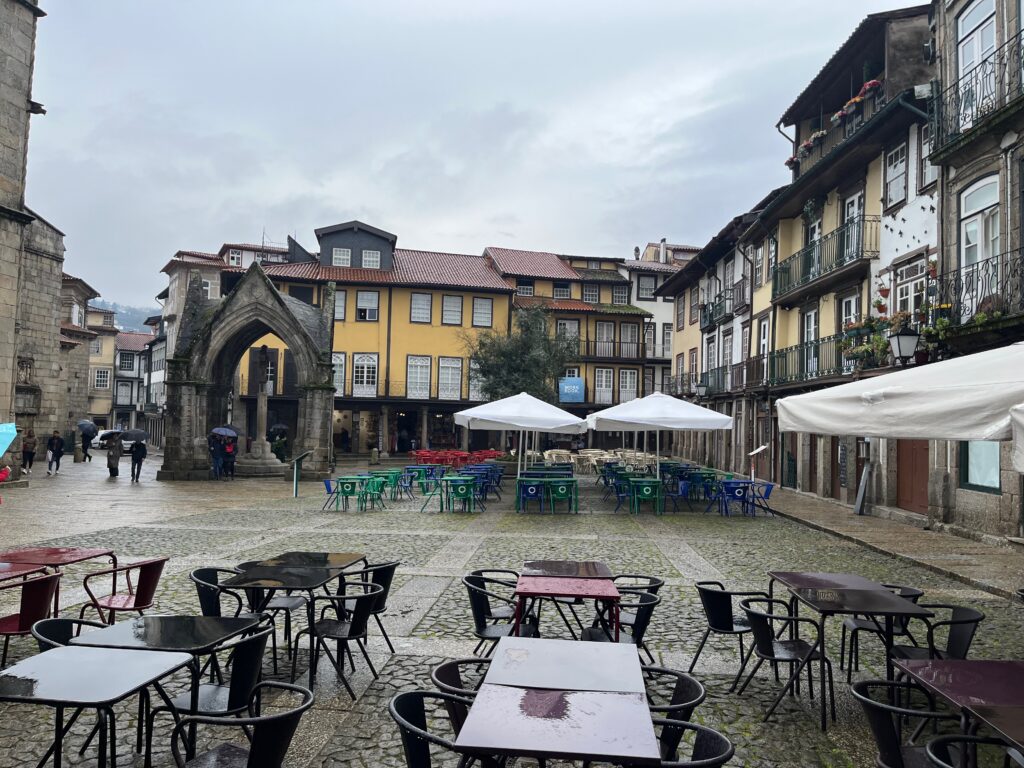
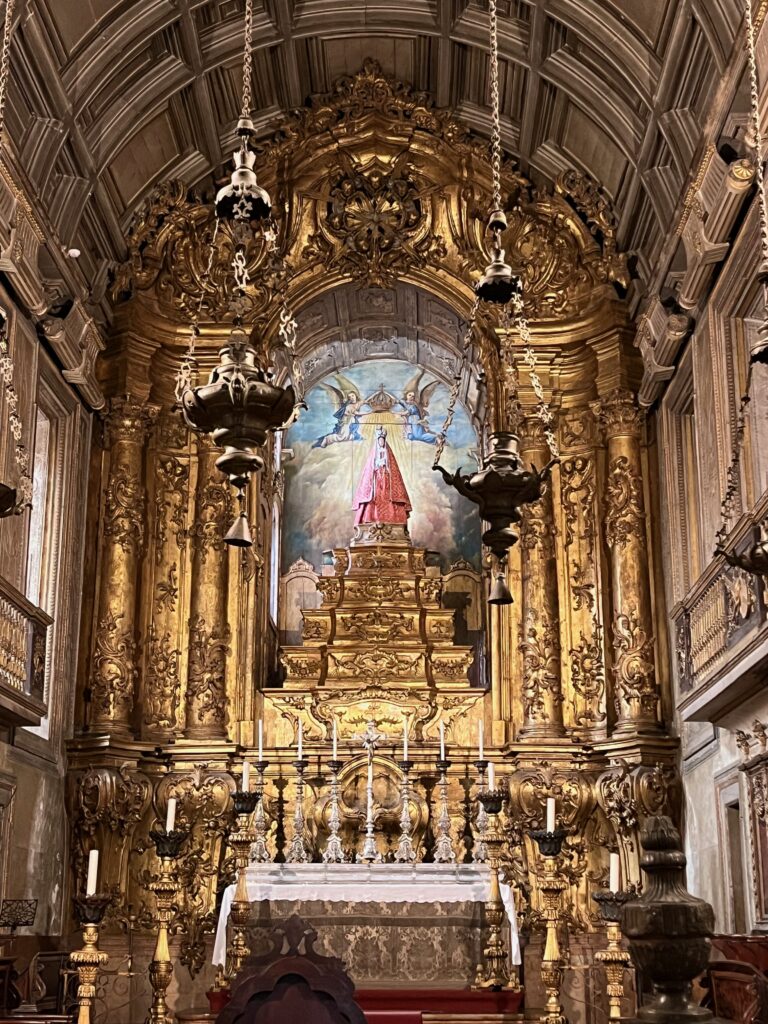
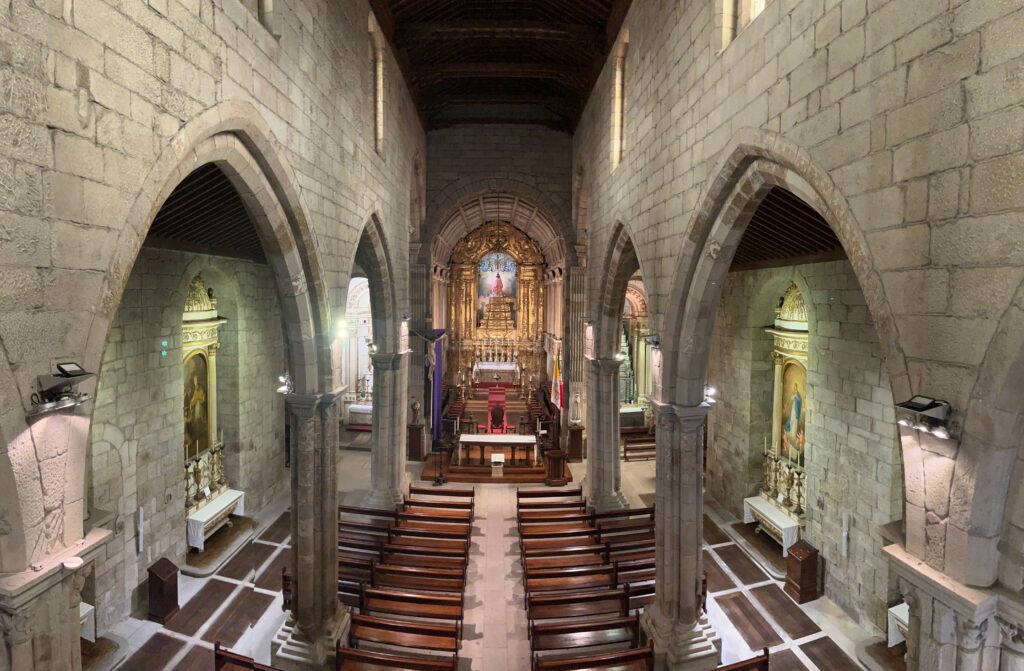
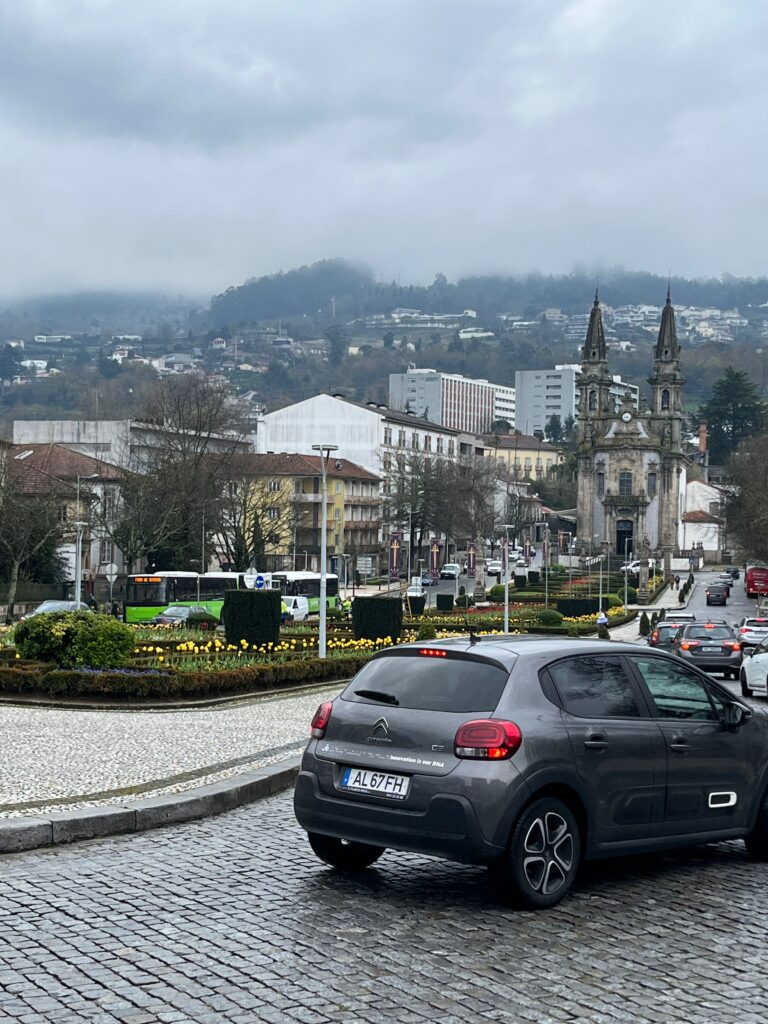
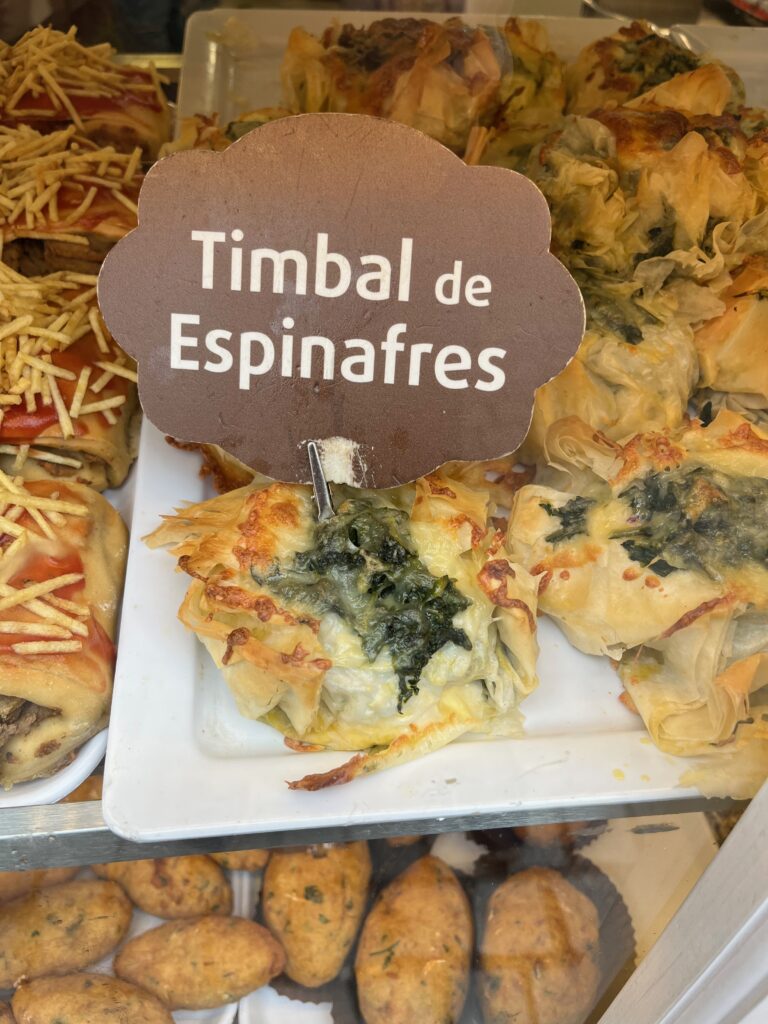
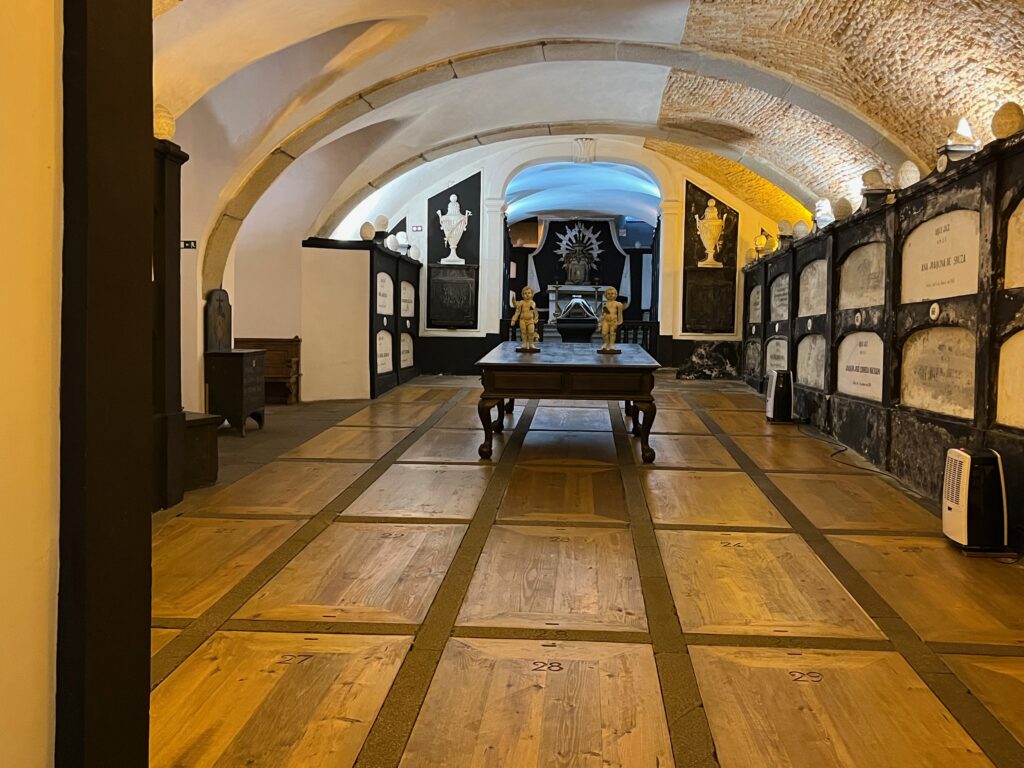
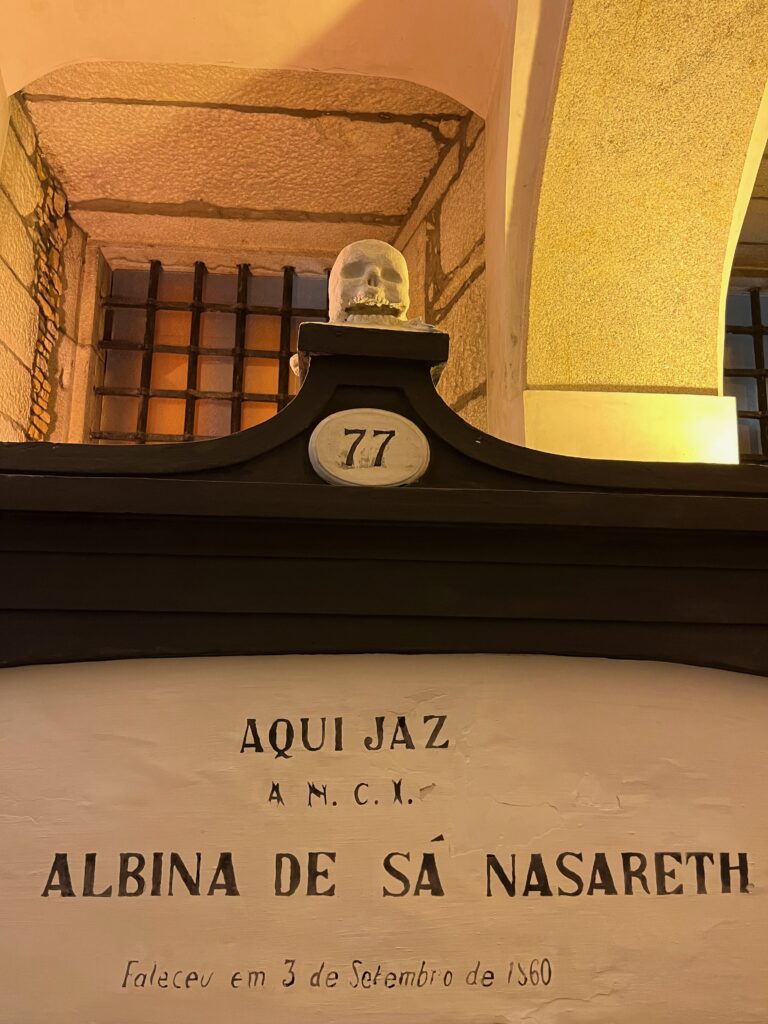
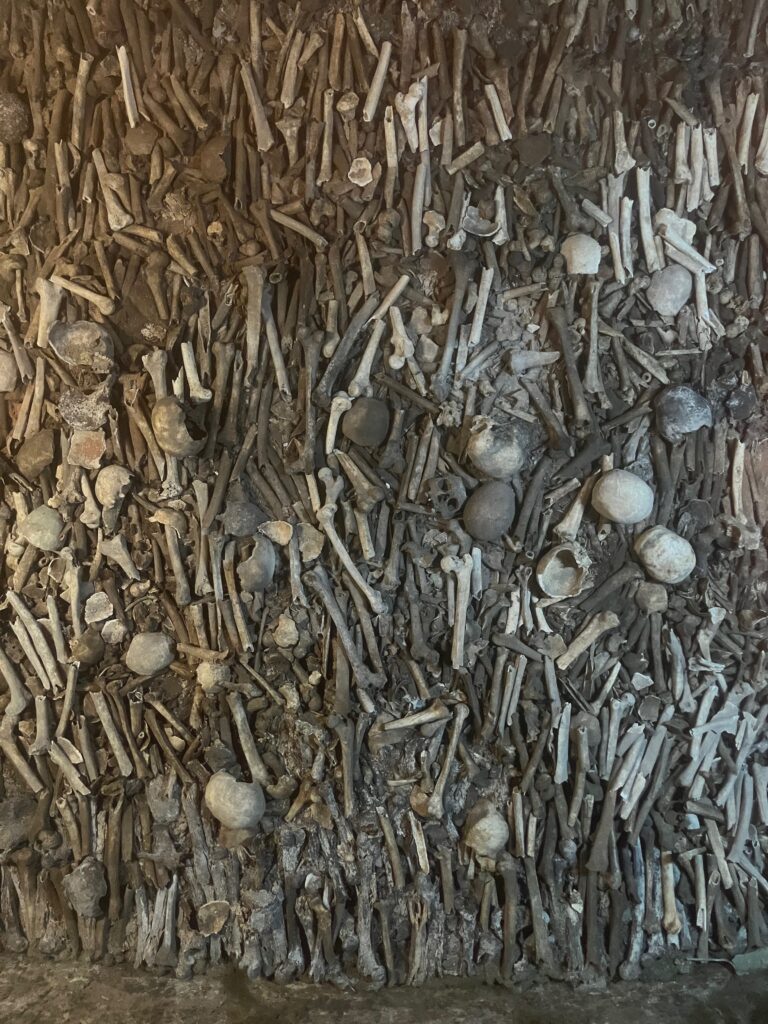
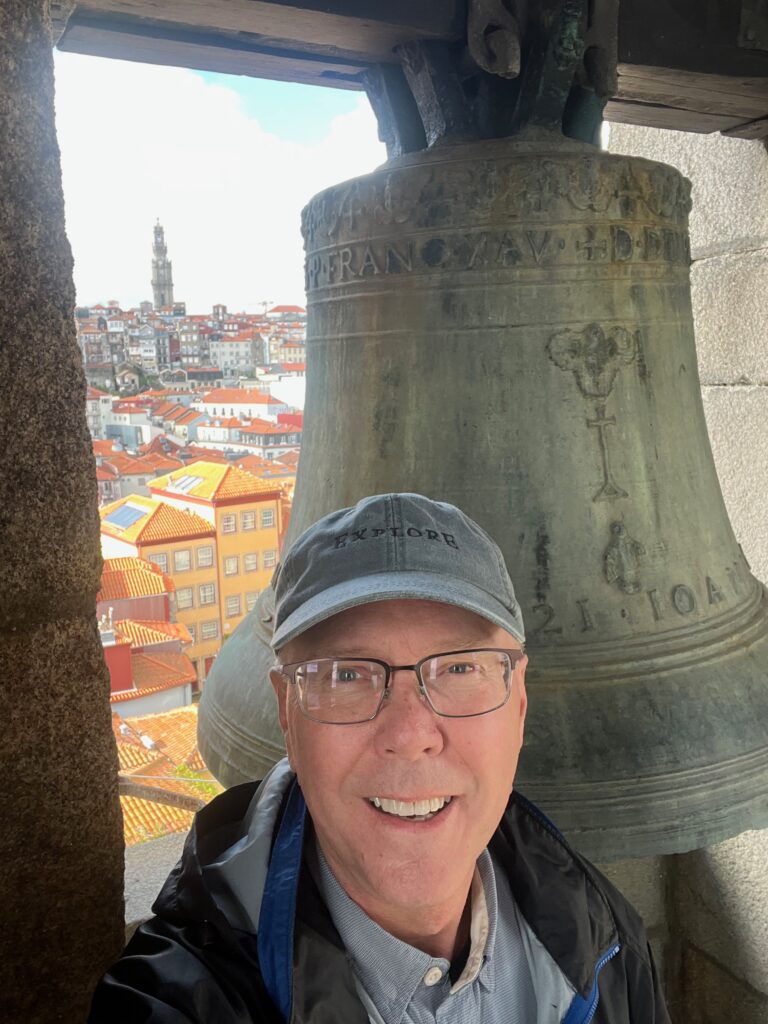
A couple of the locations above warrant a little more information, even in this abbreviated blog entry. In Braga, the Sanctuary of Bom Jesus do Monte is a UNESCO World Heritage Site. The UNESCO website states the following: “Located in the city of Braga, in the North of Portugal, the sanctuary of Bom Jesus do Monte is built facing west and has expansive views, at times of the ocean itself, overlooking the whole city of Braga, the Bracara Augusta founded in roman times of which it is historically inseparable. The sanctuary is a type of architectural and landscape ensemble rebuilt and enhanced throughout a period of over 600 years, mainly defined by a long and complex Viae Crucis expanding up the hill, leading pilgrims through chapels that house sculptural collections evoking the Passion of Christ, fountains, sculptures and formal gardens. It is inscribed in an enclosure of 26 ha, totally accessible to the public. It belongs to the Confraternity of Bom Jesus do Monte, the institution that continuously overlooks the place for almost 400 years.”
In addition, the Castle of Guimarães was a surprise “find” on our journey. As stated in Wikipedia, “[t]he Castle of Guimarães (Portuguese: Castelo de Guimarães) is the principal medieval castle in the municipality Guimarães, in the northern region of Portugal. It was built under the orders of Mumadona Dias in the 10th century to defend the monastery from attacks by Moors and Norsemen. The castle is a military fortification grounded primarily in the late Romanesque period, and elaborated during the early Gothic epoch of Portuguese architecture. Its area is delineated by walls forming a pentagram, similar to a shield, that includes eight rectangular towers, military square and central keep. Originating in the foundations of a Roman structure, from the writings of Alfredo Guimarães, it was later elaborated on the French model, in its current the form of a shield, with reduced central yard and difficult accesses. It includes several Gothic characteristics, owing to its remodelling at the end of the 13th century, when the keep and residences were constructed (possibly over pre-existing structures).”
After a wonderful dinner at Restaurante O Fernando (at which we were able to eat only due to the graciousness of the manager who fit us in at the fully-booked restaurant, we stayed the night at Solar Antigo Porto Aeroporto, a small hotel within walking distance of the airport. The next morning our travel companions left us for their journey home, while we proceeded to Sweden.
Sweden
We once again visited Sweden (our 5th time) to see our youngest daughter. This time, however, we had a bonus in that her significant other flew up from Southern England to join us for the weekend! We stayed at the Radisson Blu Waterfront, one of our favorite hotels due to its excellent location near Central Station. We began our visit with a dinner at Asian Post Office. The next morning we enjoyed the traditional Swedish sweetroll, a Semla. We then visited our favorite Swedish department store, Åhléns. We never fail to find some clever device we “need” at home or take the opportunity to restock something for our travels. We then had a BON-KAITEN (“tray-rotation”) brunch at Izakaya, a Japanese-themed restaurant. In the BON-KAITEN brunch, as the name suggests, restaurant staff walk around and present different food dishes from which you can choose. Your bill at the end depends on the number and cost of the items you selected, the price of each determined by the color of the plate on which it was presented. After brunch we made our way to our daughter’s apartment so we could do some much needed laundry.
That evening we ordered pizza and joined a group of our daughter’s friends to watch the final episode of Melodifestivalen 2025, the Swedish music competition that determines who will go on to represent Sweden in the Eurovision Song Contest 2025 in Basel, Switzerland in May. We thoroughly enjoy getting together with our daughter and her friends, and this evening was no exception. Even though we can’t understand Swedish, the enjoyed the show and the exchange it created among the group!
The next day, Sunday, we again got together with our daughter and her significant other to tour more of Stockholm and to go through the Fotografiska Stockholm Museum. Despite the number of times we’ve visited Stockholm, we had never been to this museum. Fotografiska is a centre for contemporary photography in the Södermalm district of Stockholm, founded and opened on May 21, 2010. After seeing our daughter’s significant other off to return to England, we continued to explore Stockholm, including sites mentioned on the Atlas Obscura website (AO). As of this writing, I have located 58 of the AO sites in the countries of Sweden, Ecuador, Portugal, Denmark, Kazakhstan, Tajikistan, and Uzbekistan. Upon writing this I realized I have not logged any AO sites in the US. More to come…. Here are a few photos from this visit to Stockolm.
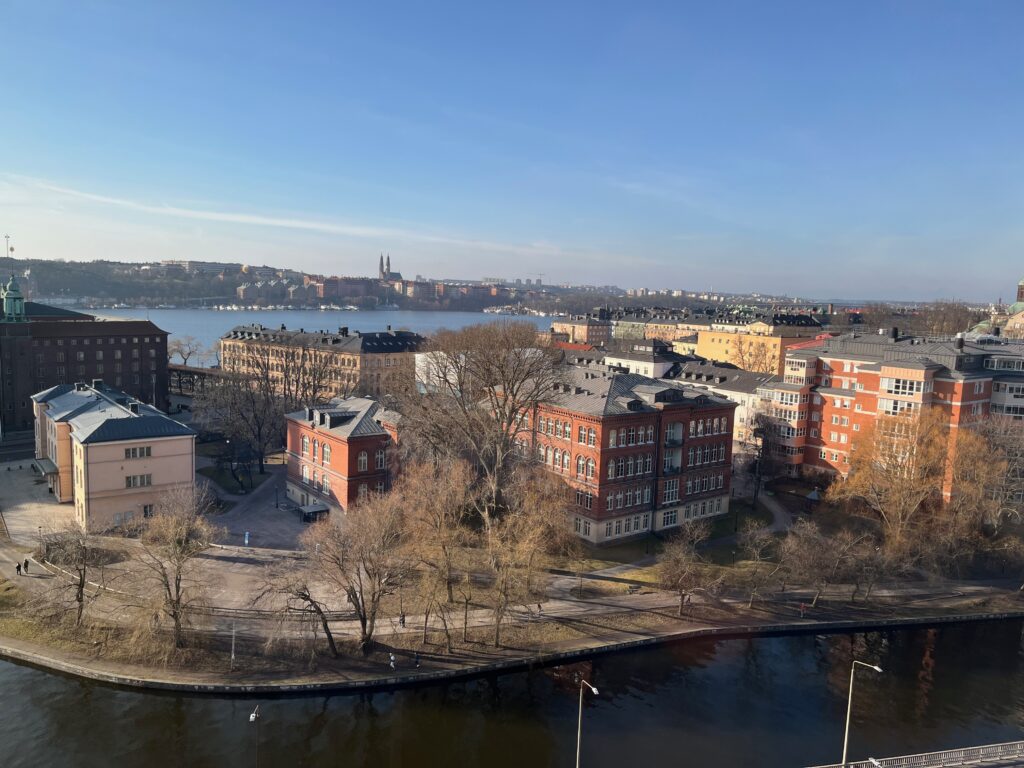
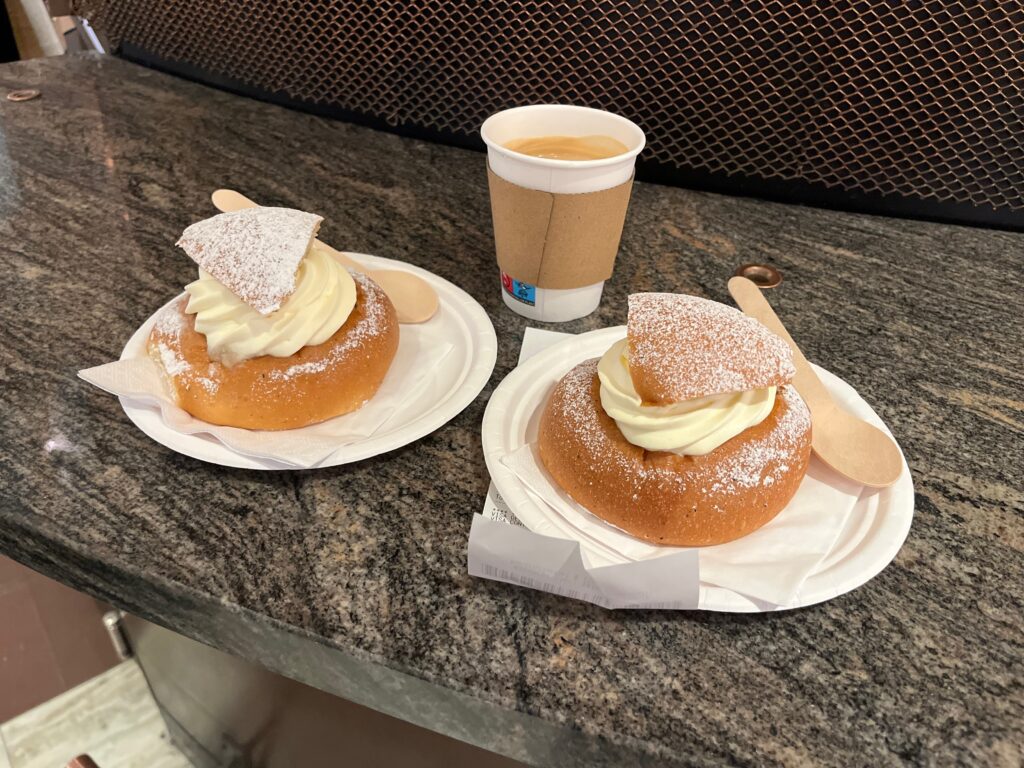
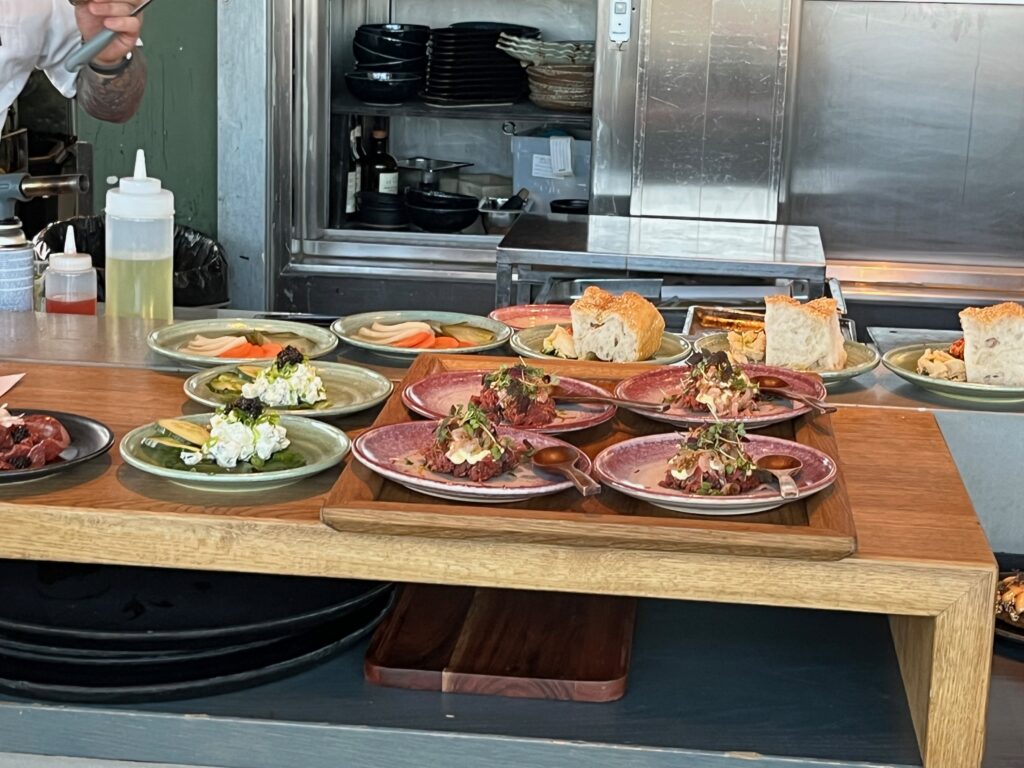
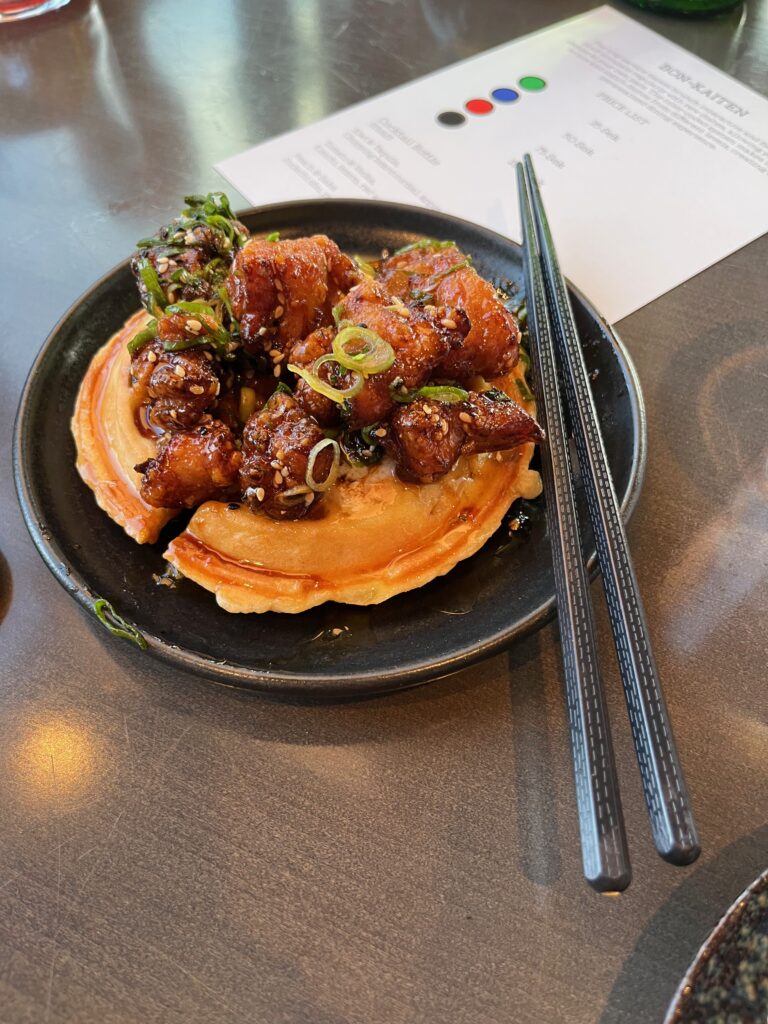
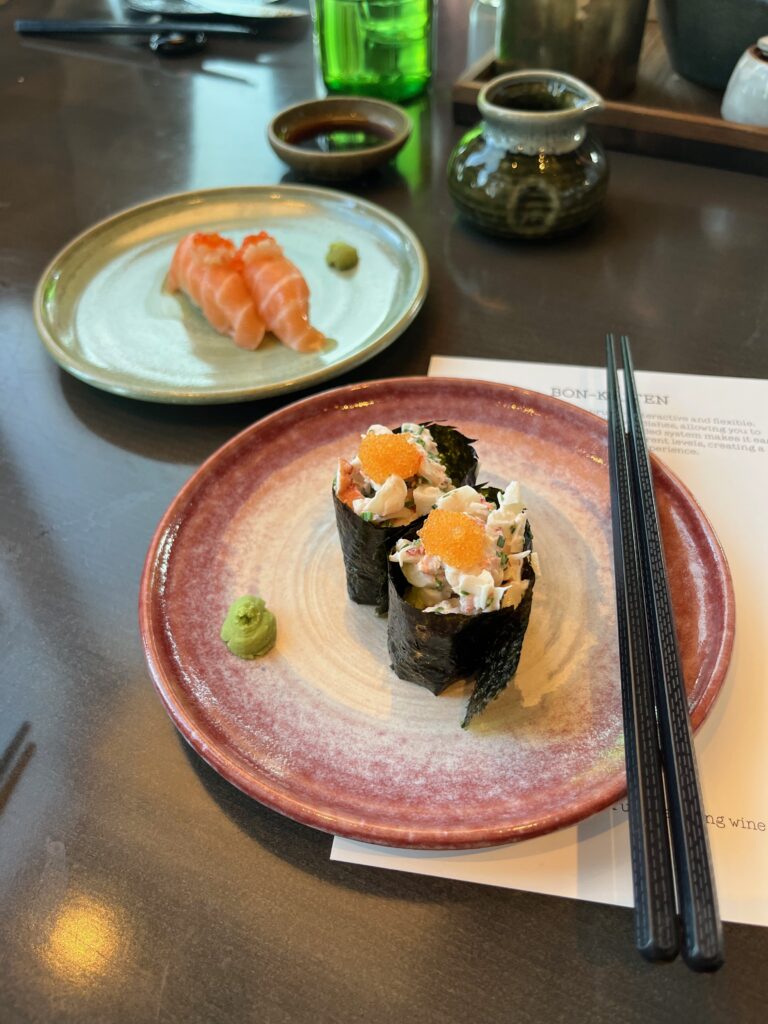
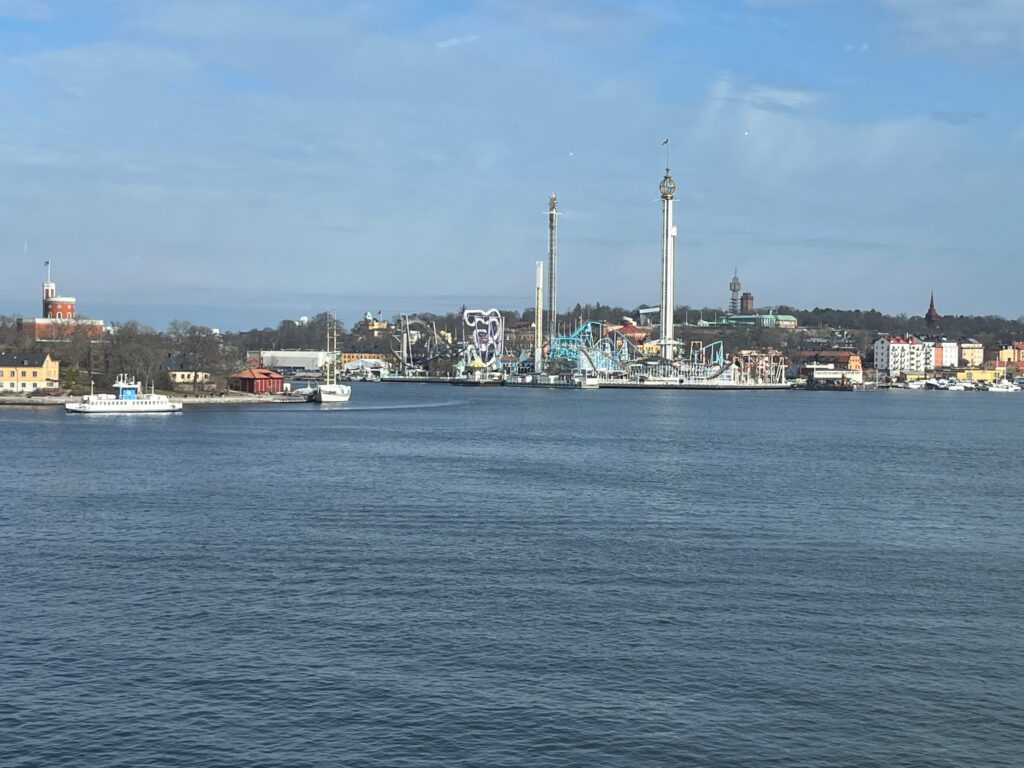
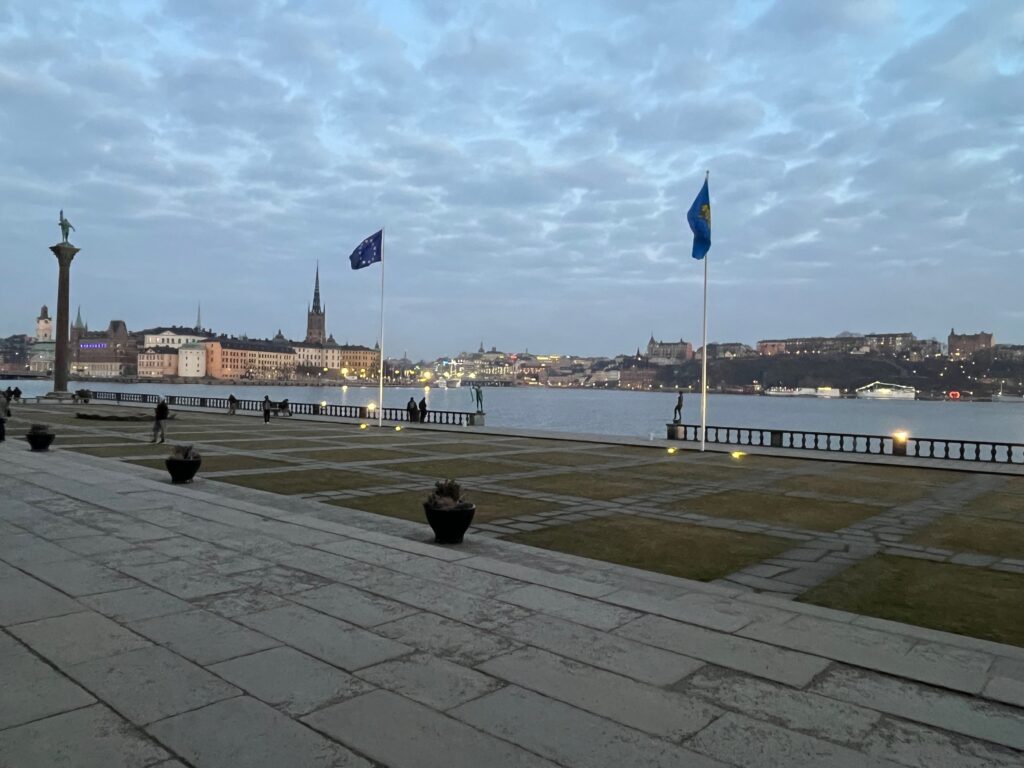
Denmark
After seeing our daughter off to return to her work commitments during the weekdays, we retired for the evening. In the morning, we wandered up to the Arlanda Airport to fly to Aalborg, Denmark. The purpose of our trip was three-fold: (1) explore the area where my paternal ancestors lived and, hopefully, make some genealogy discoveries; (2) visit the Danish exchange student we hosted ~15 years ago, as well as his family; and (3) find some Dambo Trolls and Atlas Obscura curiosities.
We began our Danish journey by driving one hour from the Aalborg airport to the seaside town of Skagen. Skagen is the northernmost town in Denmark, on the east coast of the Skagen Odde peninsula in the far north of Jutland. The Port of Skagen is Denmark’s main fishing port and it also has a thriving tourist industry, attracting 2 million people annually. Because of the time of year, the town was not very busy. But, we can imagine it’s quite popular in the summertime!
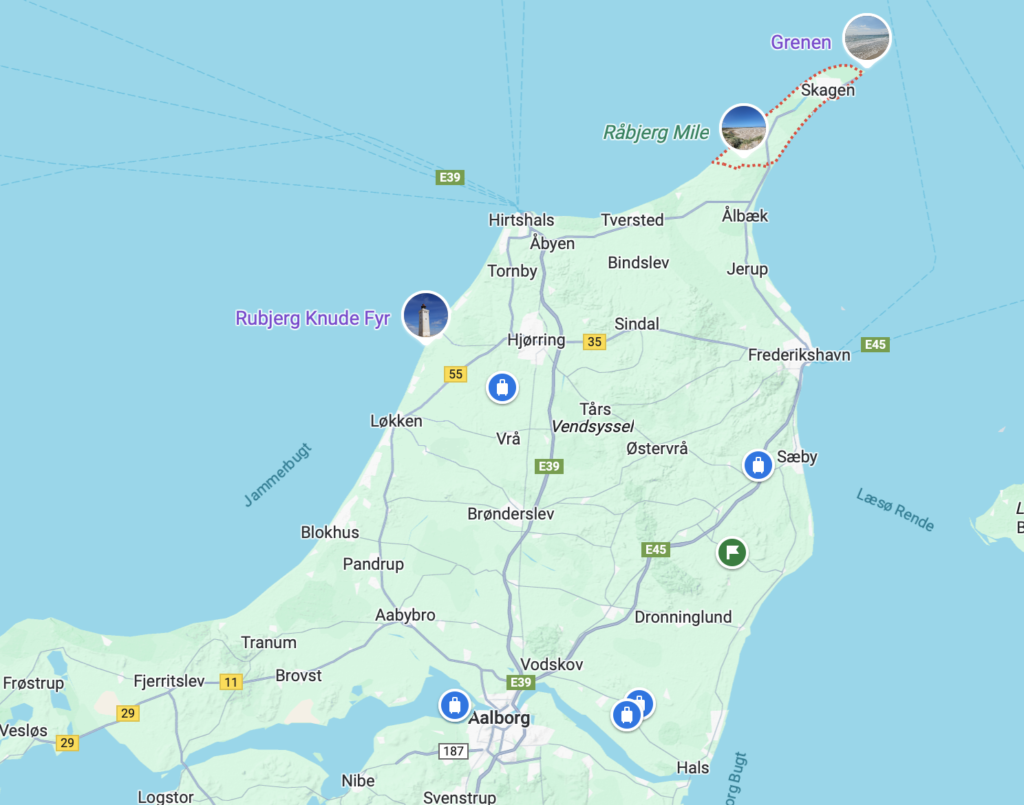
We stayed at the Skagen Harbour Hotel, a quaint waterfront hotel. The hotel provided us an upgrade to a room with a patio, a wonderful overview of the local area, and recommendations for dinner and attractions to visit. As we thought through our itinerary and the short distance between our destinations, we quickly came to the realization we wanted to stay two nights at the hotel. Fortunately, the hotel was able to accommodate us! In hindsight, we definitely made the right decision. After we unpacked our bags, we walked down the street to eat at the Skagen Fiskerestaurant. The restaurant, located on the waterfront, was a great blend of fine dining and beachfront bar qualities. From the restaurant’s website: “The restaurant overlooks Skagen Harbor on the first row, authentic with sand on the floors, [and] freshly caught fish…. The restaurant has an attitude about food and the good fresh ingredients. As the name implies, fish is the key element of the menu, not to mention fresh seafood, which is almost caught by the waters just outside the restaurant’s door.” After dinner we returned to the hotel to get ready for the days ahead.
The next day we drove to the towns in which my ancestors were born, baptized, and married, and from which they emigrated. The towns included Albaek, Praestbro, Gandrup, and East Hassing. The driving in northern Denmark is easy, particuarly when compared to northern Portugal. The roads are generally straight, flat, and well-marked. The residents generally adhere to the speed limits (30 mph in town and 50 mph in the country unless marked otherwise) and don’t tailgate. The people were very friendly. In fact, we stumbled upon a small archive museum in the town of Gandrup. We were warmly greeted and offered extensive help when we mentioned the backstory of my family in the area and the “mysteries” we were trying to solve. One of the volunteers offered to continue reviewing church records after we left in order help us find what we were looking for. And, she was good to her word. A day or so later she sent an email with the location and date of my great-grandmother’s death and funeral at a local church in 1953. While we had been told she had returned to Denmark after my great-grandfather’s death, we now had proof! All in all, the day was very productive and we thoroughly enjoyed driving through the area and meeting the local residents.
We returned to Skagen for a little sightseeing and dinner. We first drove to the parking lot near the tip of the island. The area is very sandy and is the home of World War II bunkers, a bunker museum, and the Grenen. The Grenen is one of Denmark’s most spectacular natural experiences, where you can stand at the northernmost tip of Jutland and see the waves from the Skagerrak and Kattegat seas collide. The area consists of sand and gravel deposited by strong sea currents, and over the past 100 years, the coastline has grown by one kilometer. The vast beach area is constantly changing and often forms lagoons that attract wading birds and playing children, but swimming is strictly prohibited due to dangerous currents. To reach the Grenen, we had to leave our car in the parking lot and walk for ~45 minutes on the sand. It was, however, well worth the effort. After our walk we returned to Skagen for dinner at Jakob’s Cafe and Bar. The food and service were wonderful!
Here are a few pictures from our first day in Denmark.
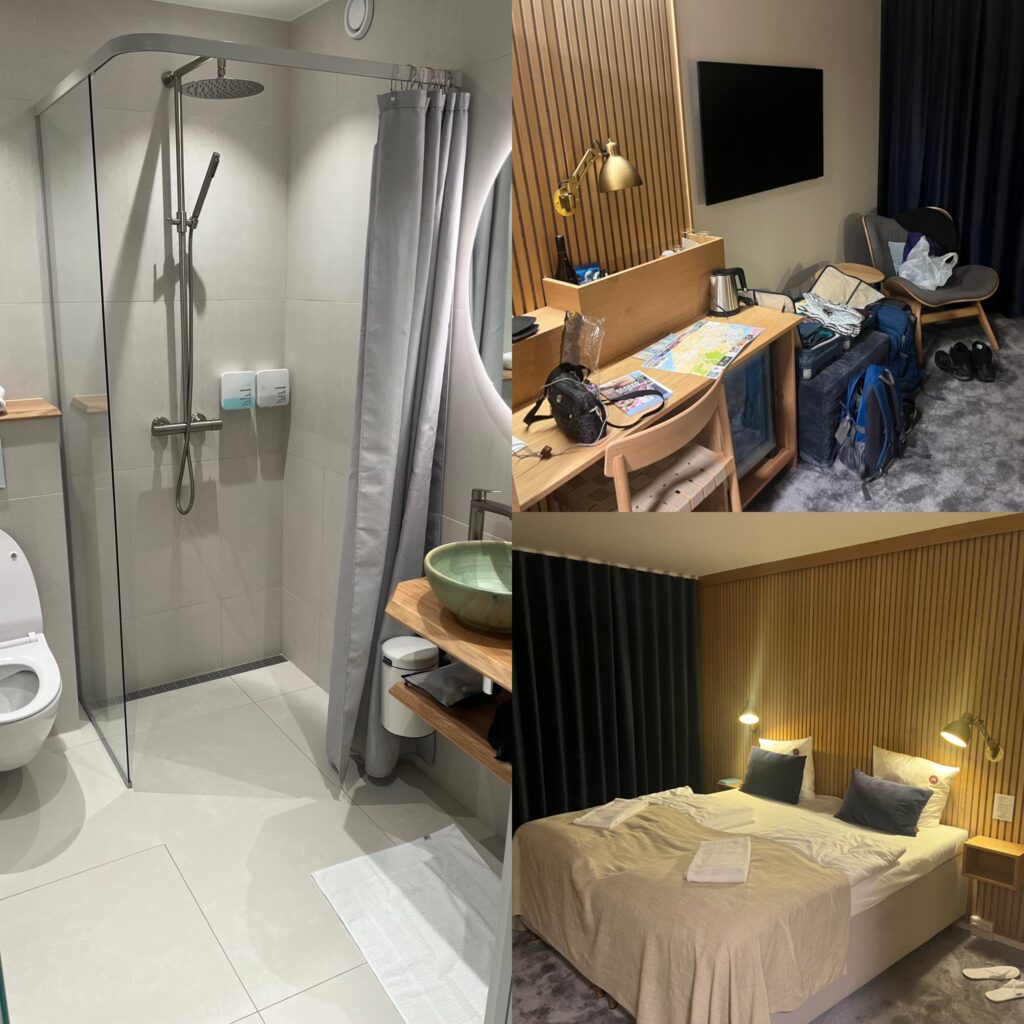
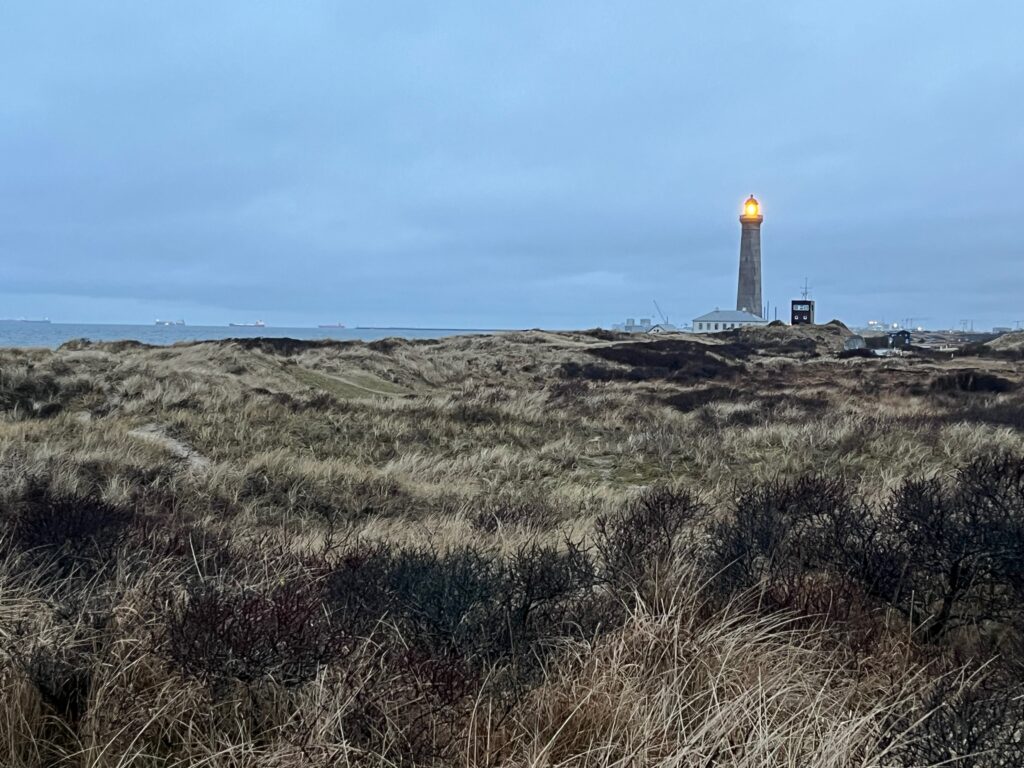

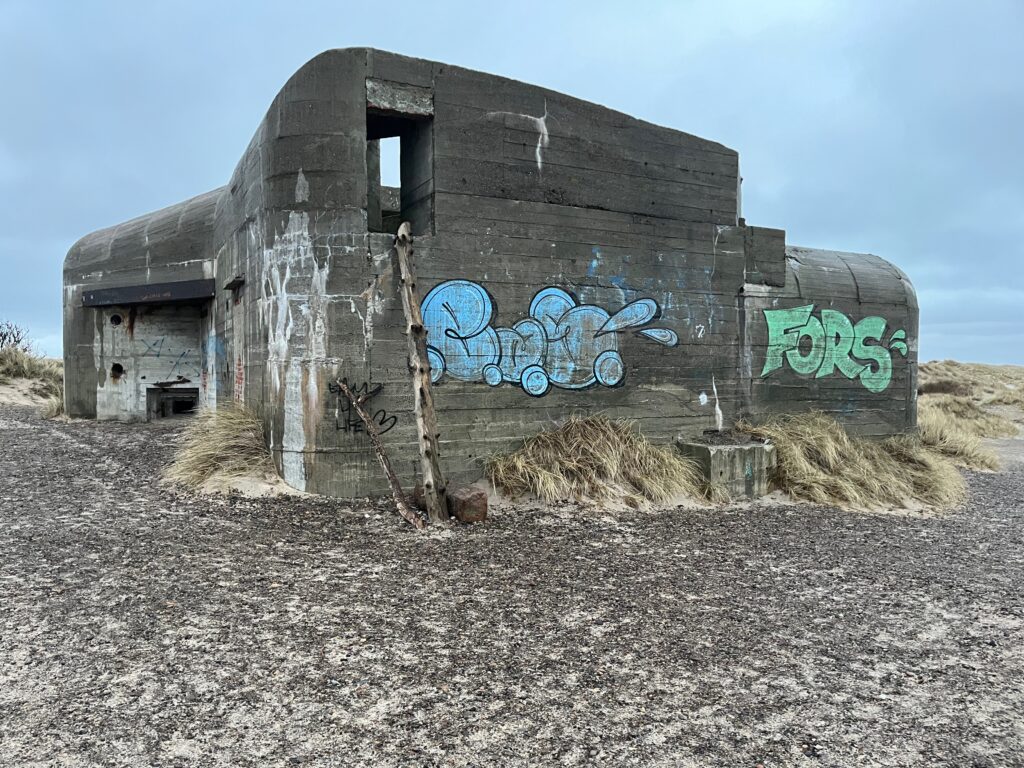
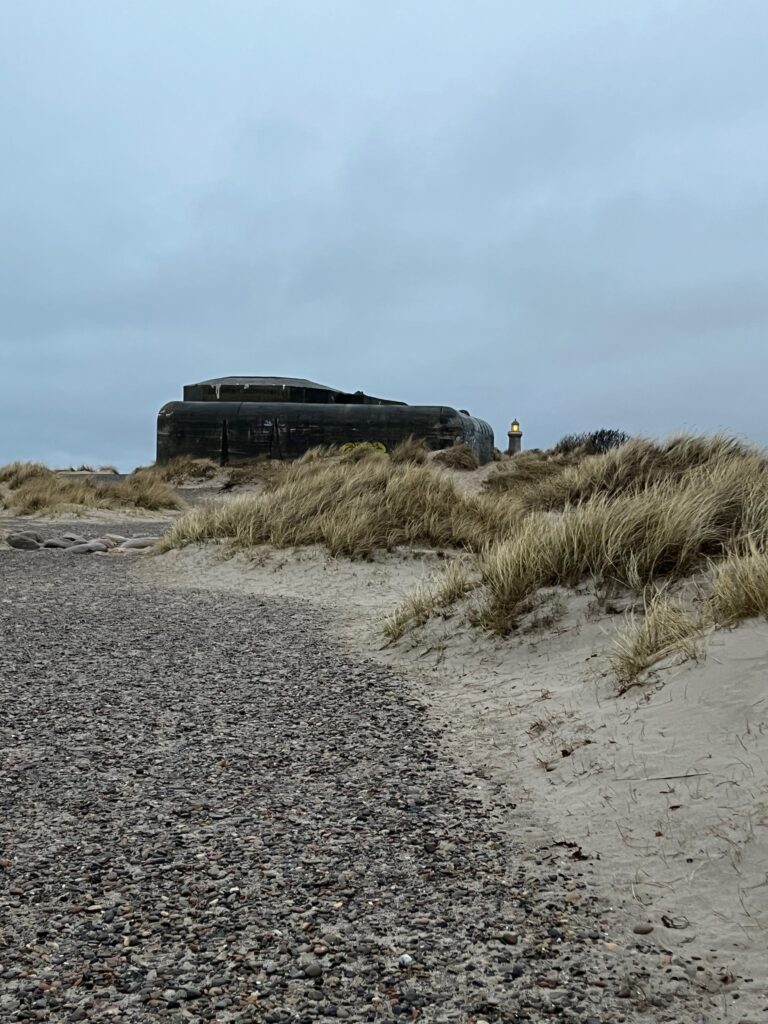
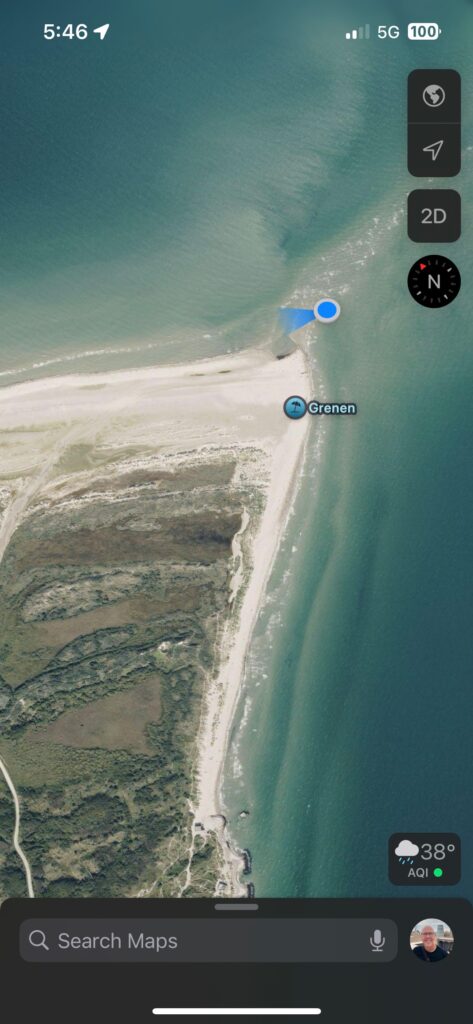
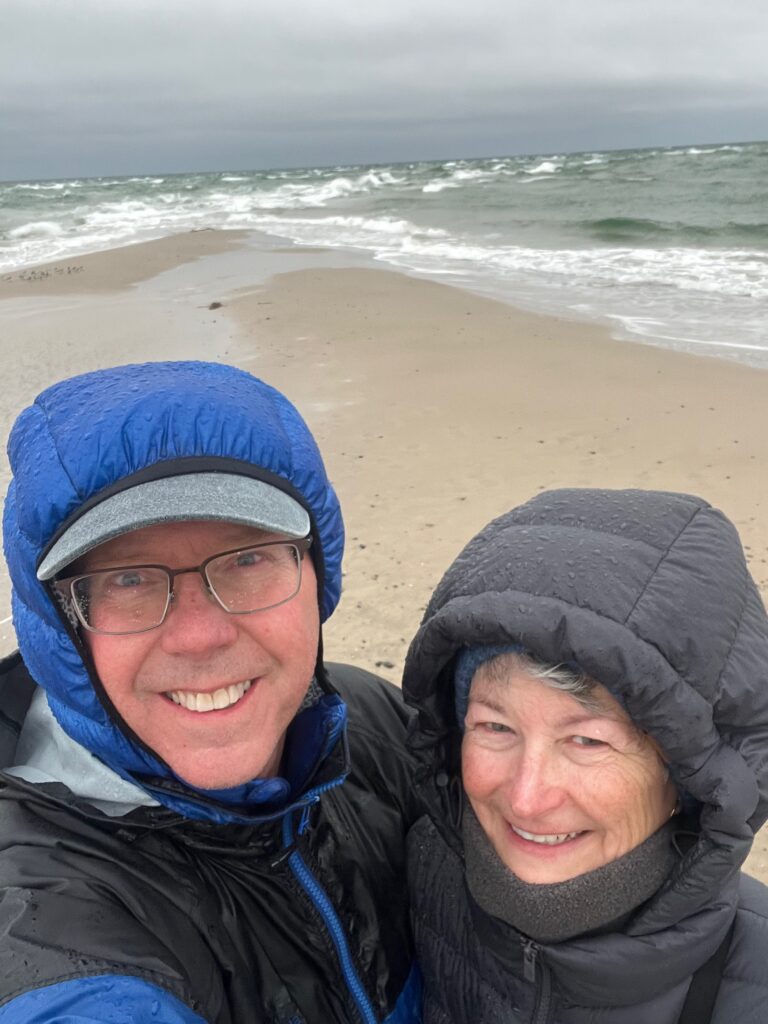
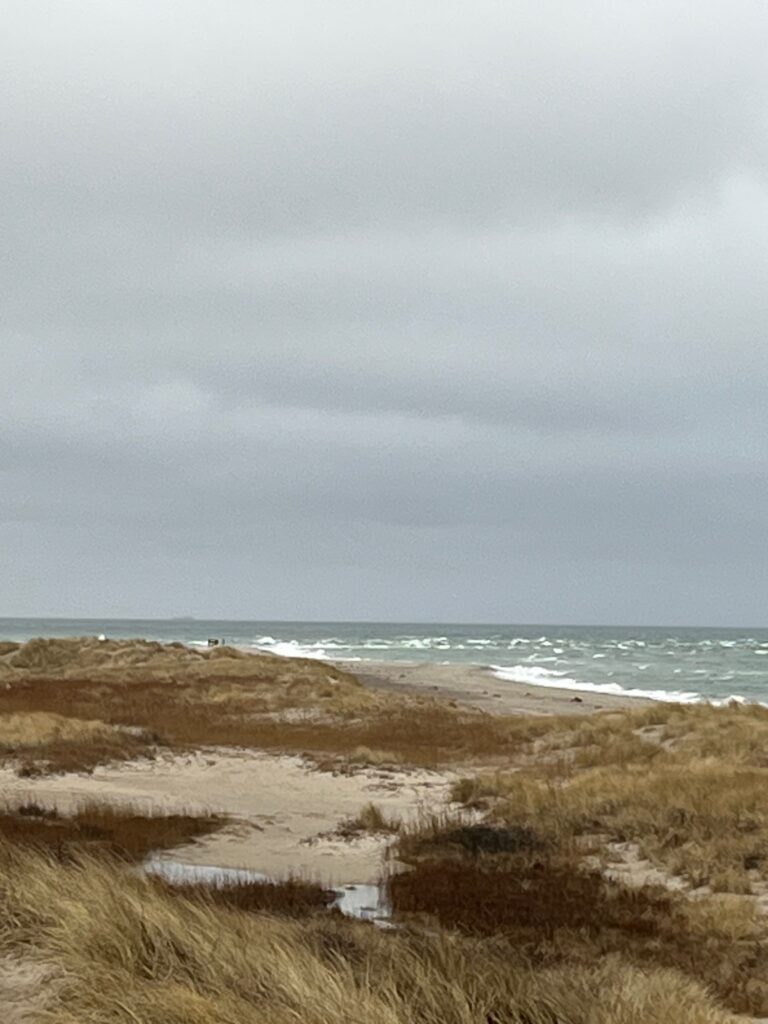
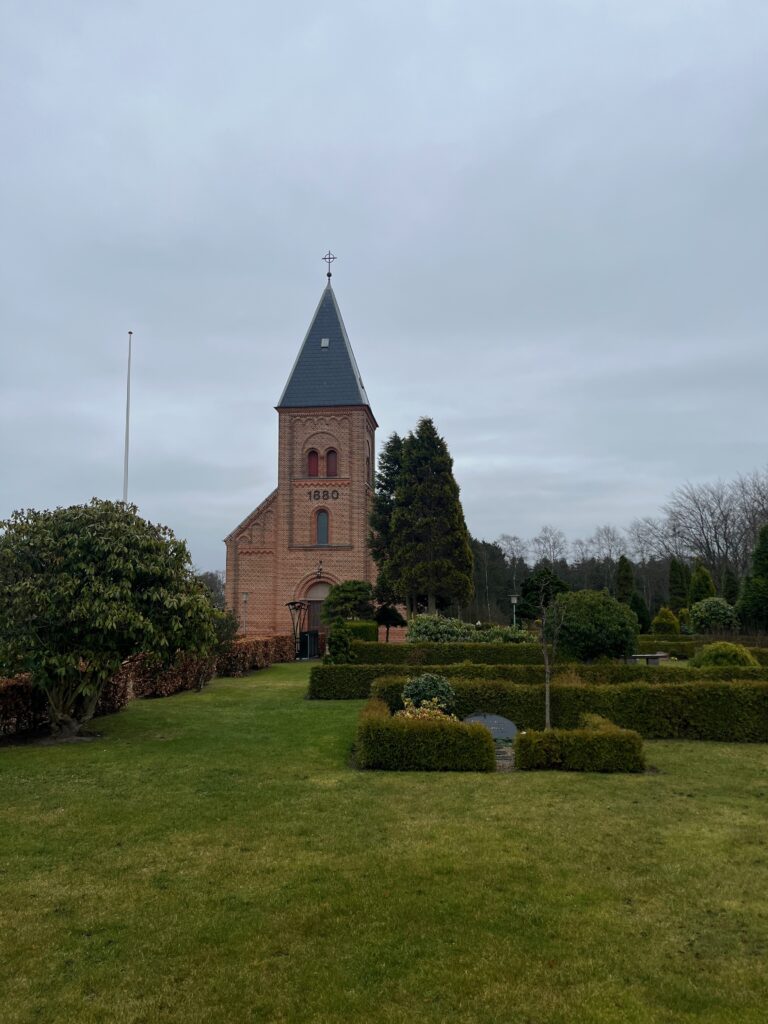
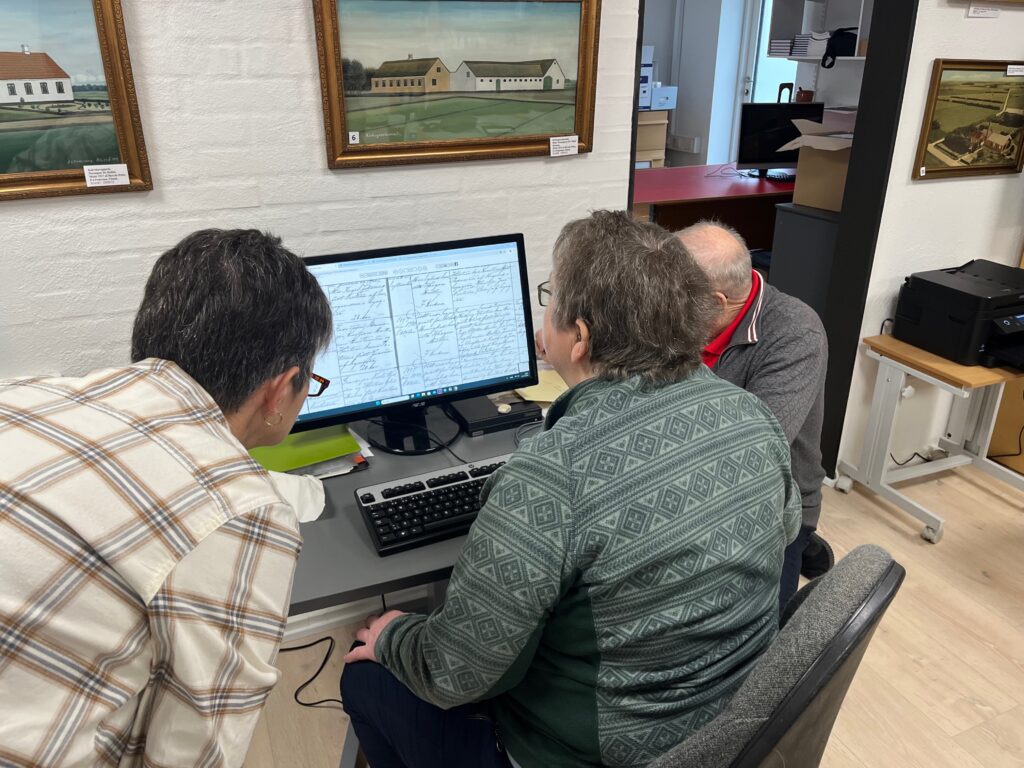
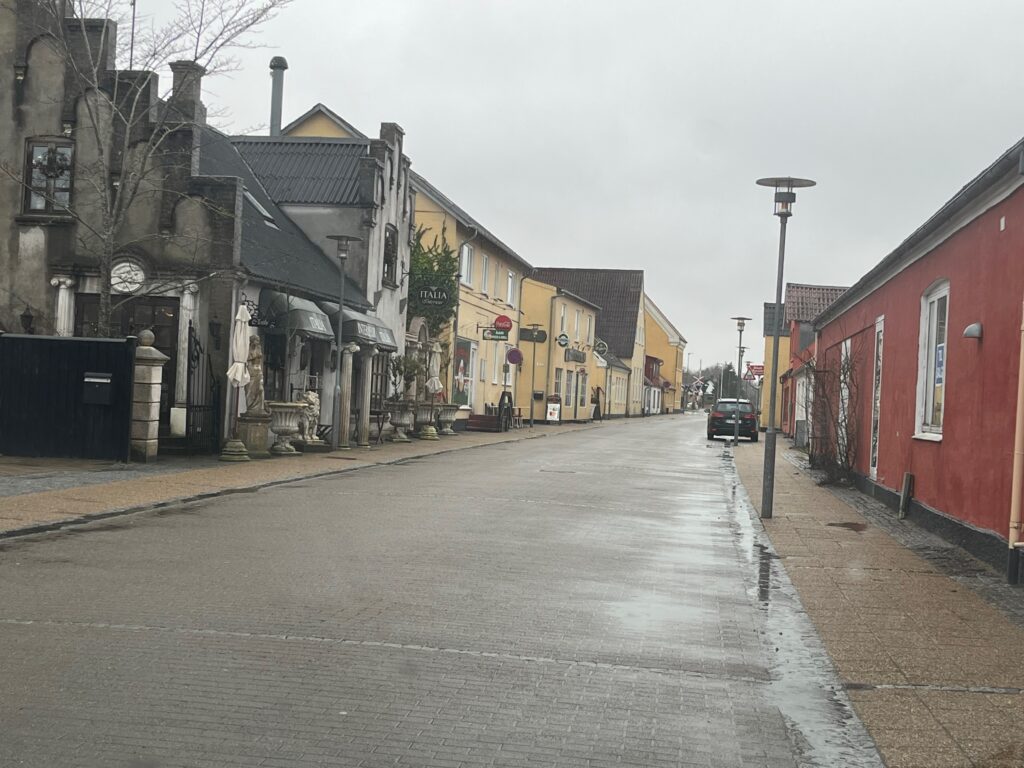
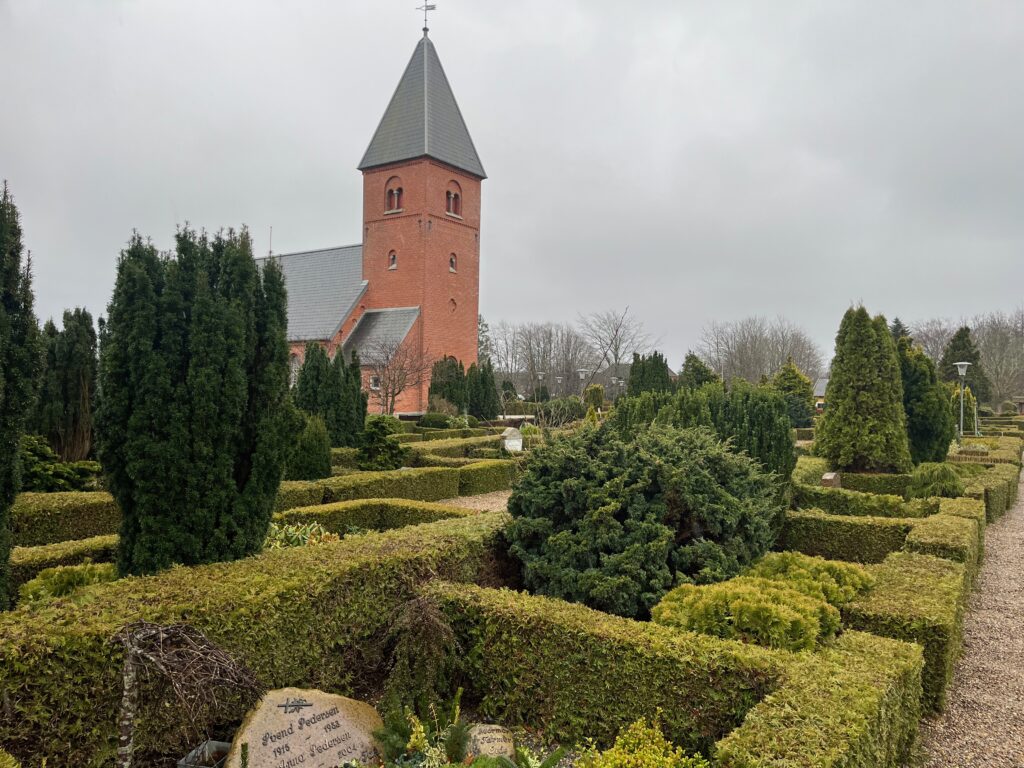
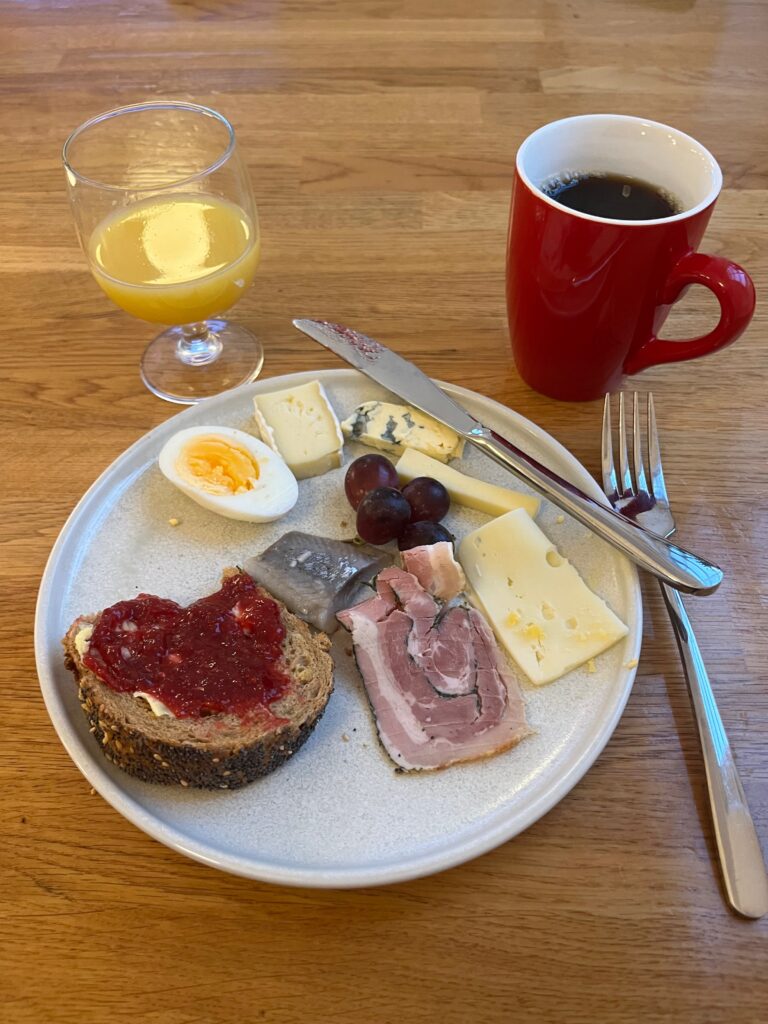
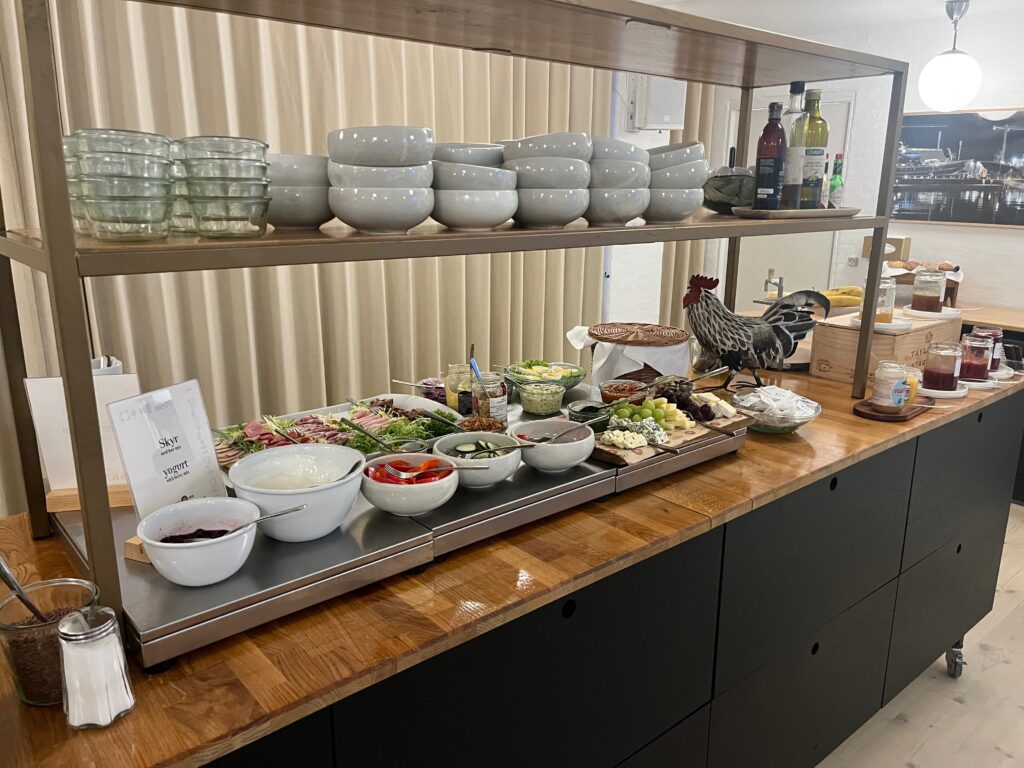
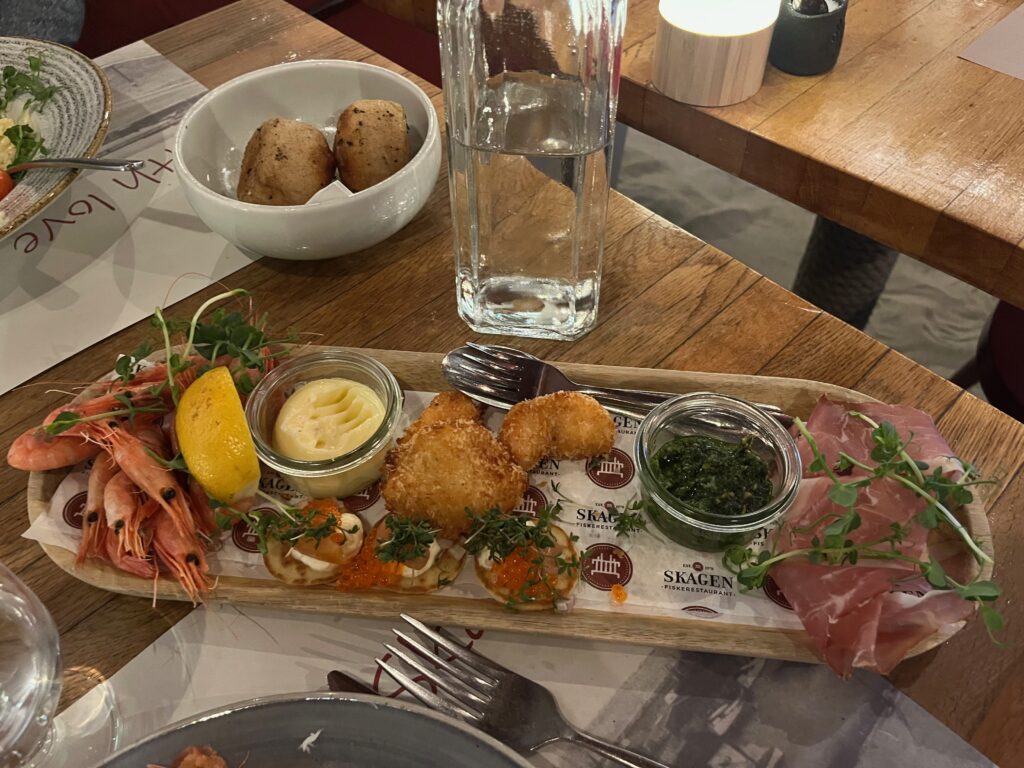
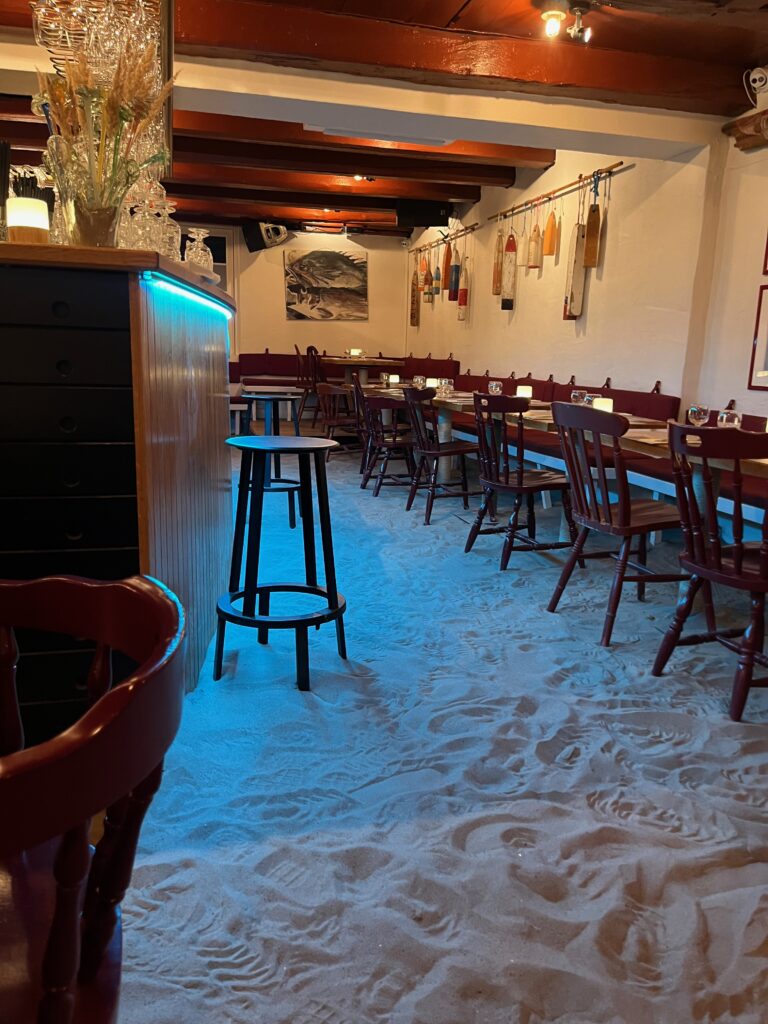
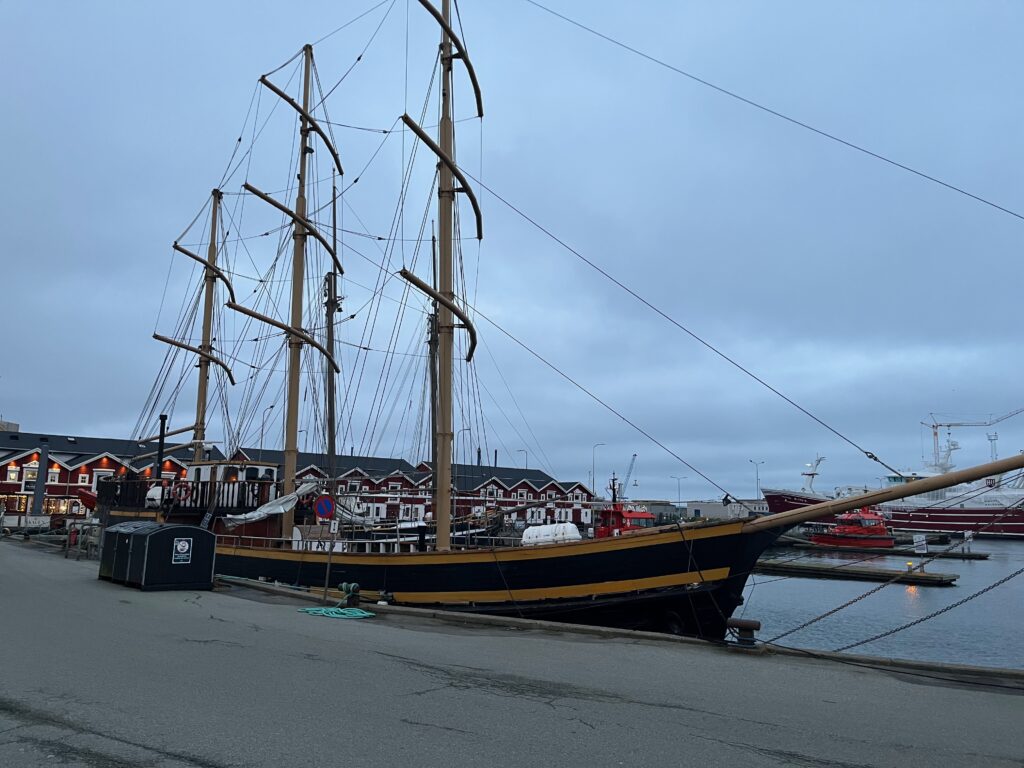
The next day we left the hotel early to drive to Horsens to visit our former exchange student and his family. The weather was particularly nasty as it was raining and snowing. That said, we made good time and enjoyed the three hour drive despite the weather. We met Alex’s family and enjoyed a lunch of traditional Danish sandwiches. We then went for a walk around the town to find a couple of Dambo trolls and to see the family’s newly acquired sailboat. After a bit of walking we stopped at a local restaurant for coffee and dessert before returning to our car and driving north to Viborg. In Viborg we stayed at the Golf Hotel, which had room for us despite our lack of a reservation. The traditional hotel lies between two lakes within the city of Viborg.
The next morning we first enjoyed a traditional European buffet breakfast. We then drove into the old city to find the archive museum. We did, in fact, find the museum and enlisted the help of a couple of its employees to assist in our genealogical research. After getting some tips on how to best utilize church records for such research, we returned to our car with the objective of driving north to the church in which my great-grandmother was baptized. After passing through Aalborg, however, we first decided to stop at an Atlas Obscura site: Lindholm Høje. The Viking Museum Lindholm Høje provides the following description on its website: “For more than 600 years – up until around the year 1000 AD – people were buried at Lindholm Høje. At each of the around 700 cremation graves from the Iron and Viking Ages, the dead body was burnt on location, and the graves were marked by stone circles. These stone circles are still visible in the landscape in one of Denmark’s best preserved ancient monuments. The story about the people who lived and died here is told inside the museum, which also houses an exhibition about ancient times in the Limfjorden area.” The story of the discovery of the graves is very interesting, as is the history of the region as a major shipyard of the Vikings.
After we completed our tour of Lindholm Høje we returned to the car to continue our journey to Sejlstrup Kirkegard. While on the way, we detoured again to visit the west coast of the Jutland peninsula (Isn’t spontaneity wonderful). We were surprised on how difficult it was to reach the seashore because of the significant sand dunes that line the coast. We eventually found a parking lot from which we could see the ocean. Satisfied we’d finally located water, we made our way to the church. Upon our arrival, we walked through the cemetery and took a few pictures of the church through the window. We then drove back to the Aalborg airport to return our rental car and check in to the Aalborg Airport Hotel. The next morning we walked to the airport for our return flights to Stockholm. Our photos from days 2 and 3 in Denmark are below.
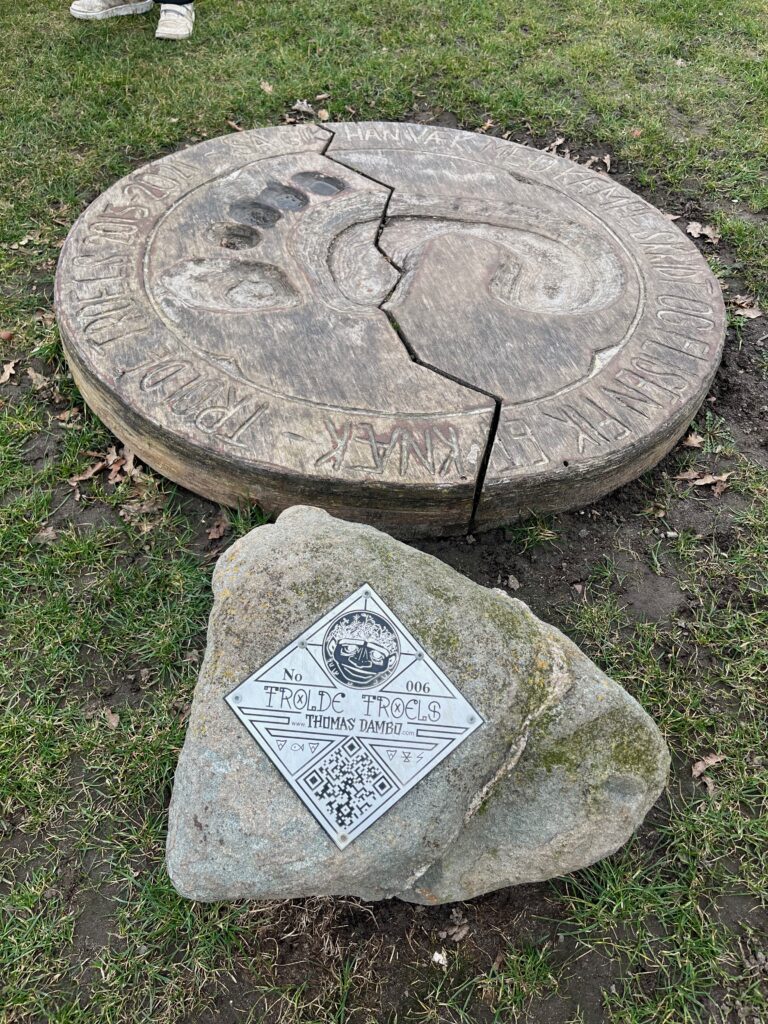
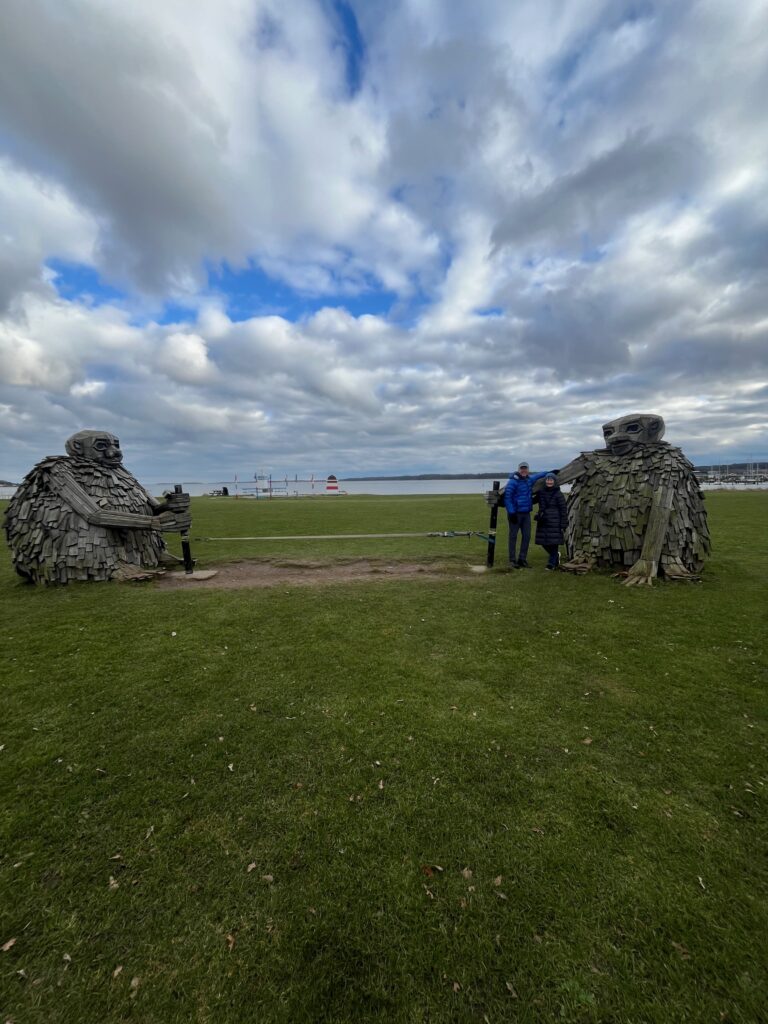
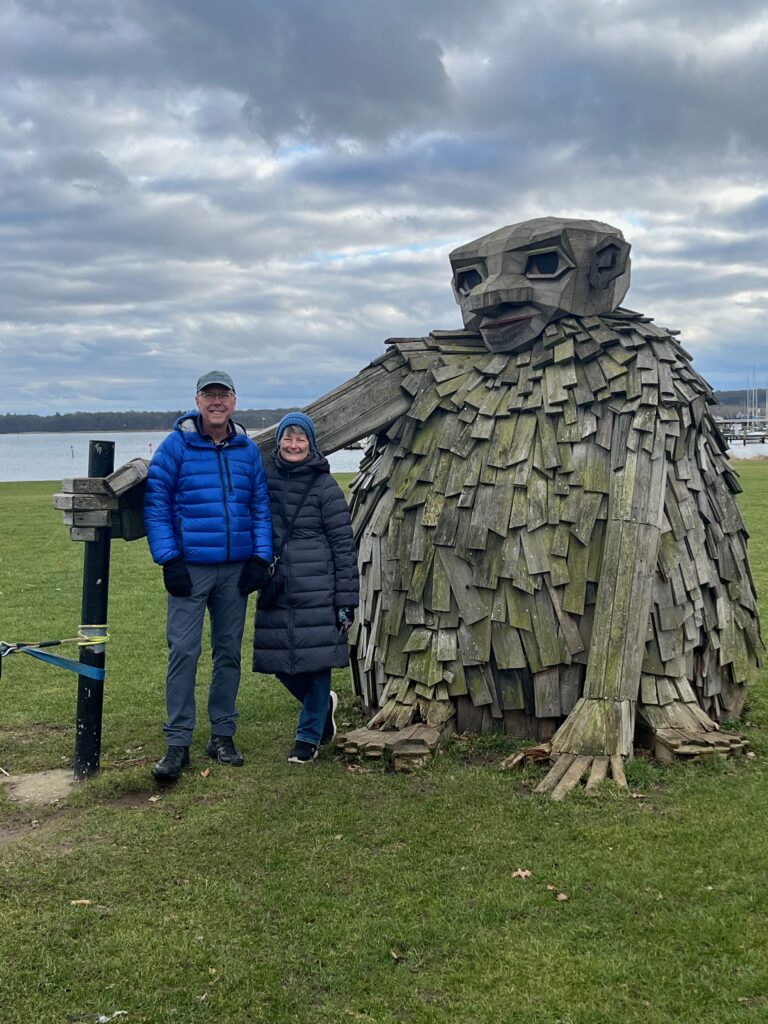
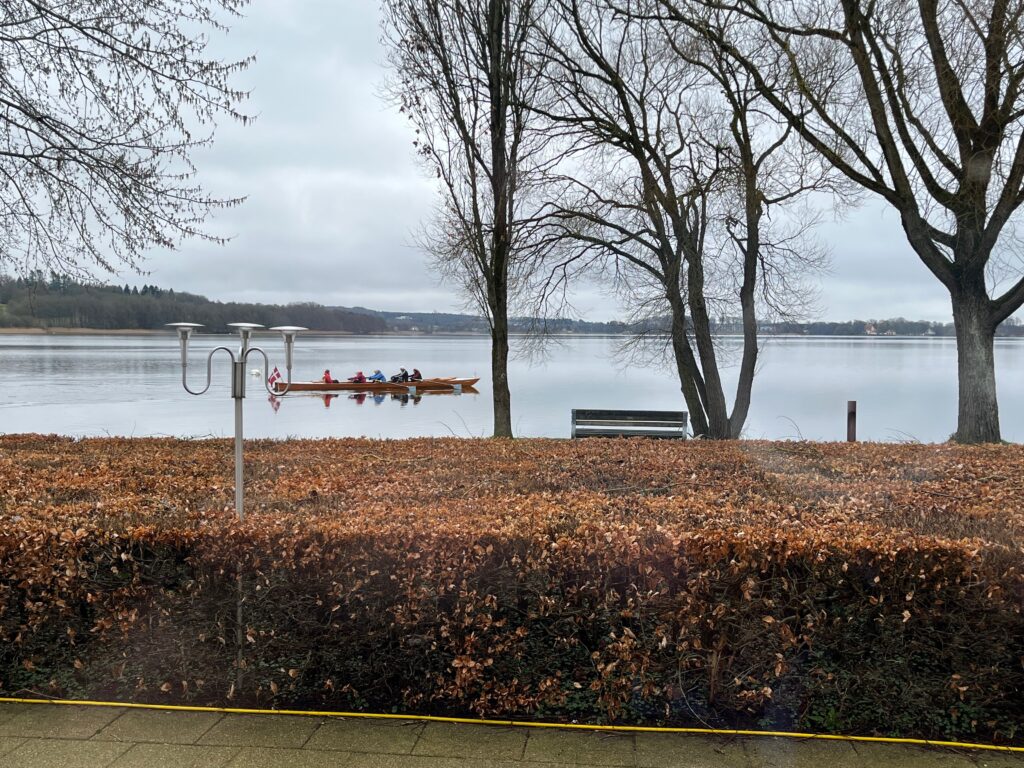
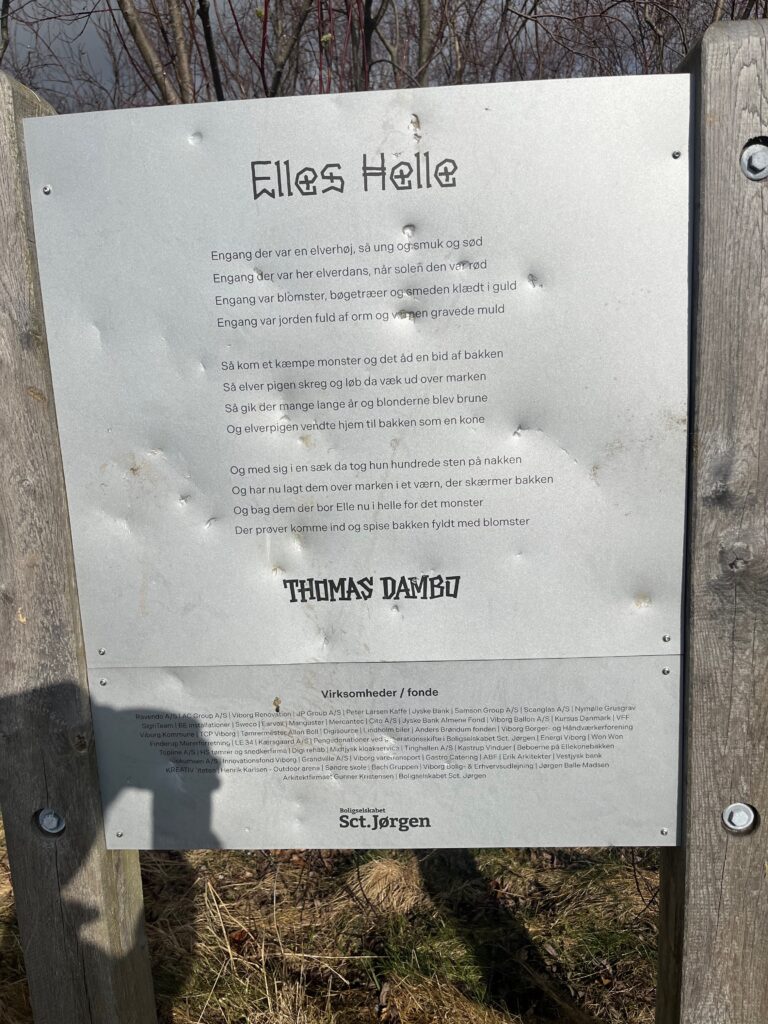
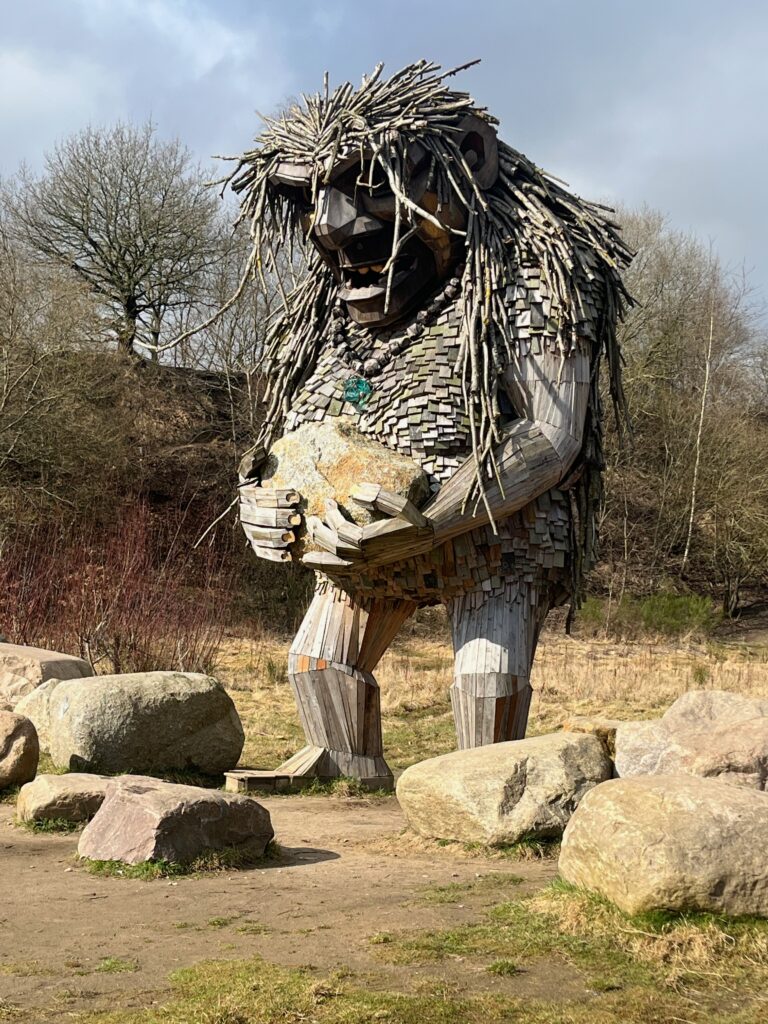
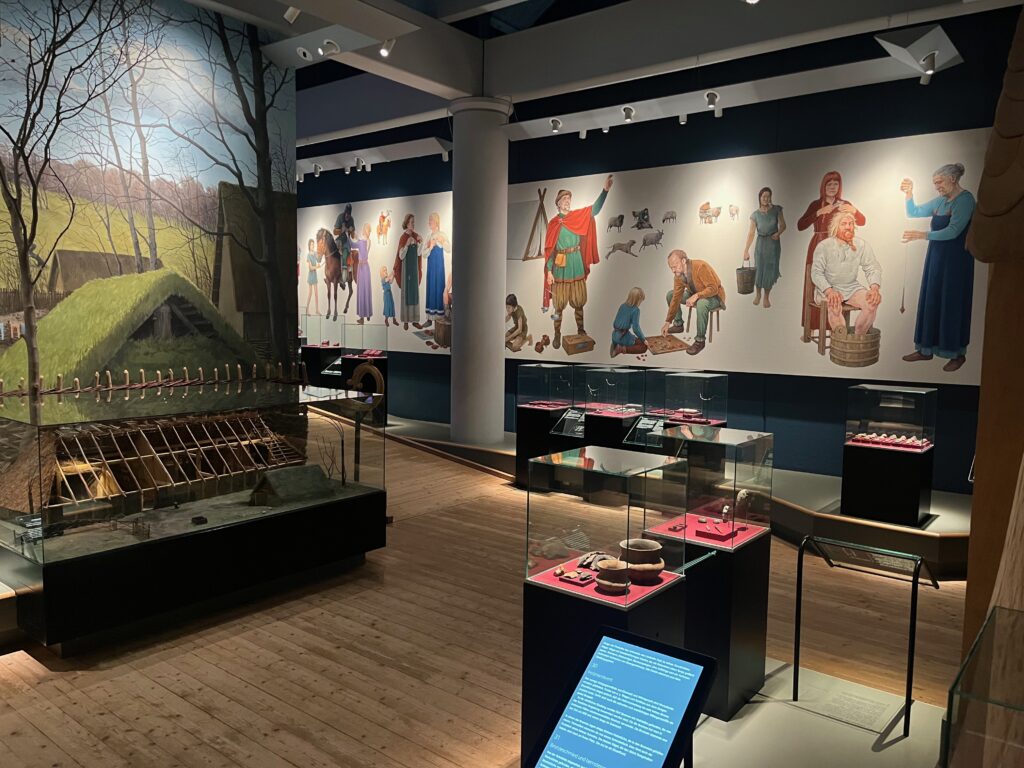
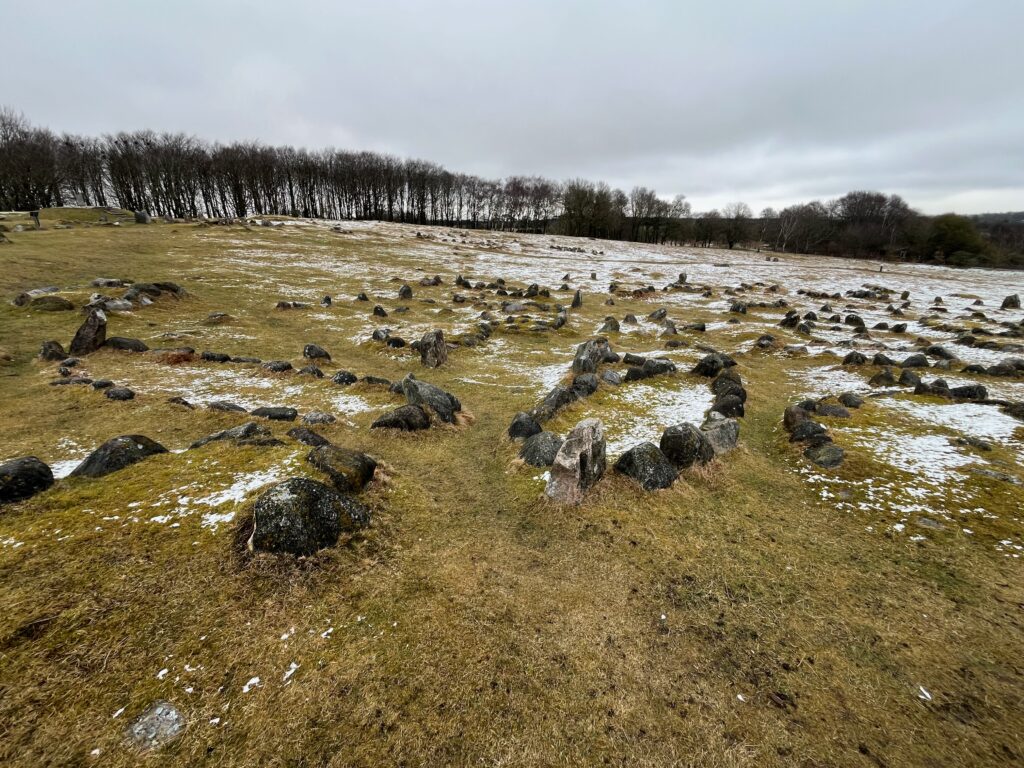
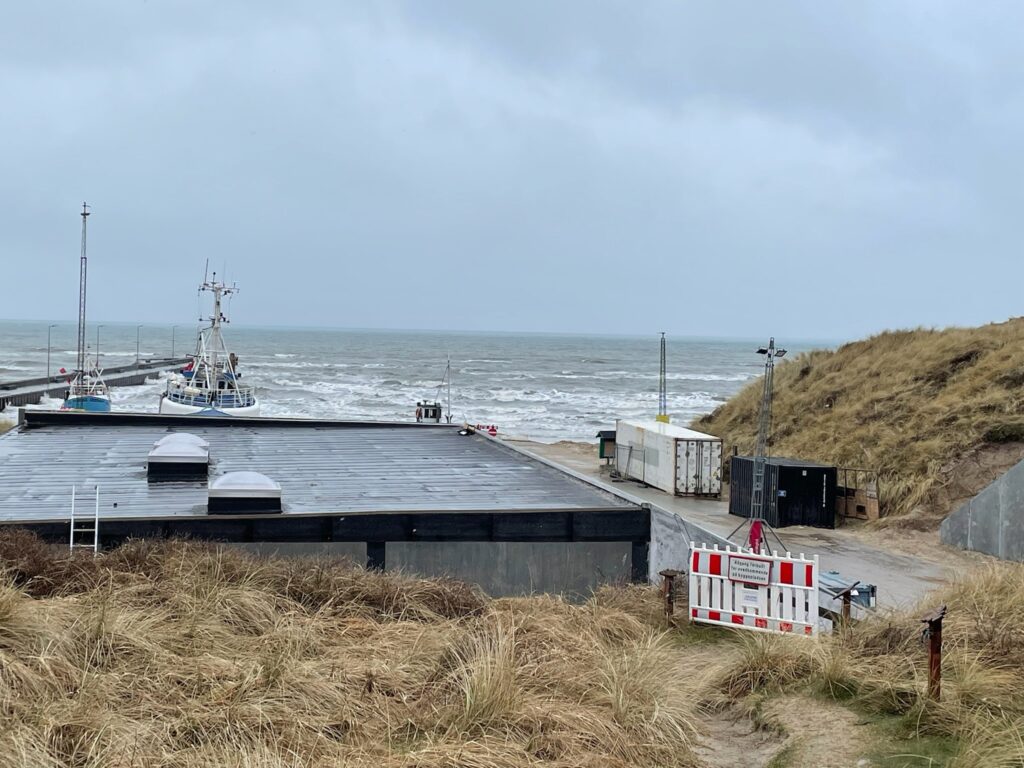
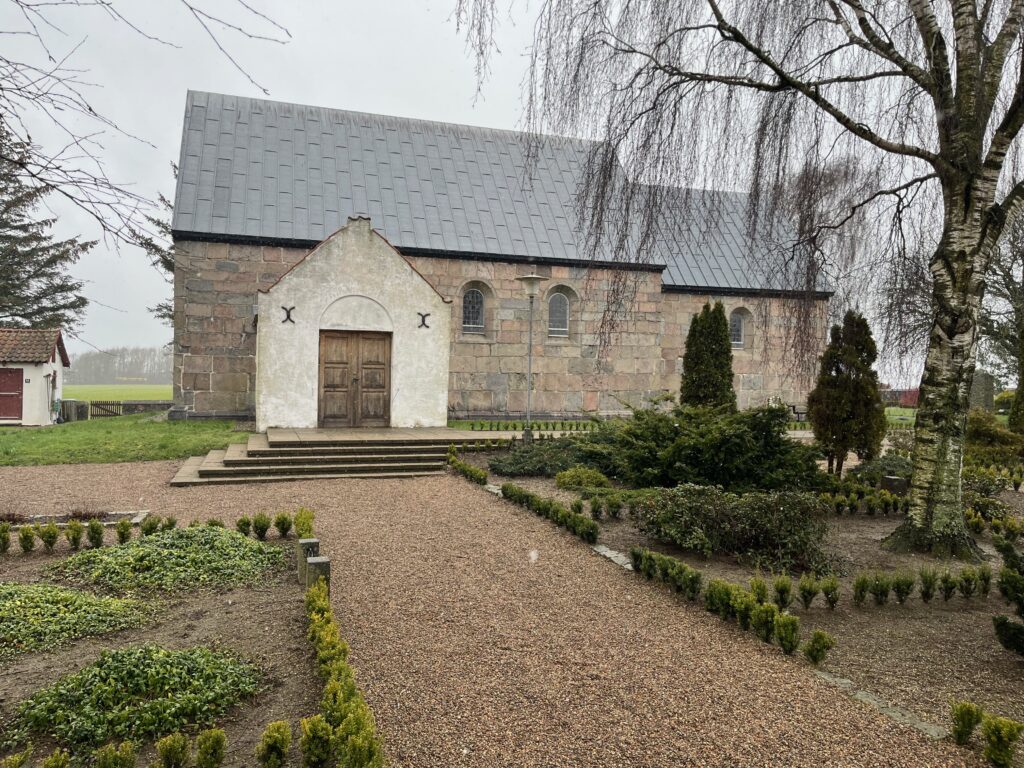
Sweden (again)
We flew back to Stockholm on Friday so we could spend the weekend again with our youngest daughter. This weekend we decided to stay at a hotel she had been interested in trying: the Scandic Downtown Camper. SDC’s website describes the hotel as follows: “Welcome to our inspirational lifestyle hotel with an atmosphere that promotes affinity, creativity, curiosity and the joy of discovery. As a hotel guest, you can enjoy our daily activities at no extra cost, ranging from yoga to expeditions and inspirational lectures. At Downtown Camper, nature meets metropolis, and Stockholm locals meet visitors. Here, luxury means generosity, togetherness, inspiration and experiences.” The hotel certainly had a very upbeat vibe about it. There was activity everywhere!
After our daughter joined us, we walked down by Gamla Stan to the Restaurant Reiss. The traditional Swedish food was very good, and was followed by live jazz music in the adjacent bar. The next morning we walked to À la Lo, a vegan Cafe & Cantina. I ordered the brunch plate, which consisted of scrambled tofu, baked tomato & mushrooms, avocado, vegan sausage, toasted levain bread, and sauces on the side. It was excellent! I could literally eat it every morning. We next walked around a little while, found a couple of Atlas Obscura items, and made our way to the National Museum. The National Museum has extensive art and sculpture exhibits, including this Atlas Obscura find. We then made our way to our dinner restaurant for the evening. For dinner this night we chose a restaurant we had gone to on our second visit to Stockholm: Östgötakällaren. The restaurant’s website describes the setting as follows: “[Y]ou will find a lovely unique dining room and a cozy bar with a huge variety of beers. Östgötakällaren is located in the middle of Sofo and the food and concept here have stood the test of time since opening in 1986. The neighborhood pub atmosphere is cordial and here you can drink good beer and eat good home cooking from Scandinavia and Central Europe. On the menu you will find classics such as Wienerschnitzel, cobbler’s box, butcher’s plate and our famous pork knuckle. Here you will get lovely proportions of sauerkraut and dumplings that are best washed down with frothy sips of good beer.” The restaurant was certainly busy the night we were there! For my meal, I had the Hearty Venison Stew with Wild Mushrooms and Mashed Potatoes. It was delicious. We then walked back to Downtown Camper for dessert.
The next morning we got up and first went to Mr. Cake, where I ordered a red velvet croissant! A unique pastry in my favorite flavor! After breakfast, we headed to the island of Kastellholmen, where we toured the Swedish Center for Architecture and Design.
the museum is free, and housed some very interesting exhibits. The museum is adjacent to the Modern Museum, which we chose to defer to a future trip. The island also contains a small castle, Kastellet, which was built between 1846 and 1848. On the way back to our hotel, we stopped at the “St. Clara Church,” located near central station. We then picked up our bags and headed to the Arlanda Express to make our way to the airport for an early morning flight. At the train station we said a tearful goodbye to our daughter and began our journey home. Here are some photos from our 2nd weekend in Stockholm.
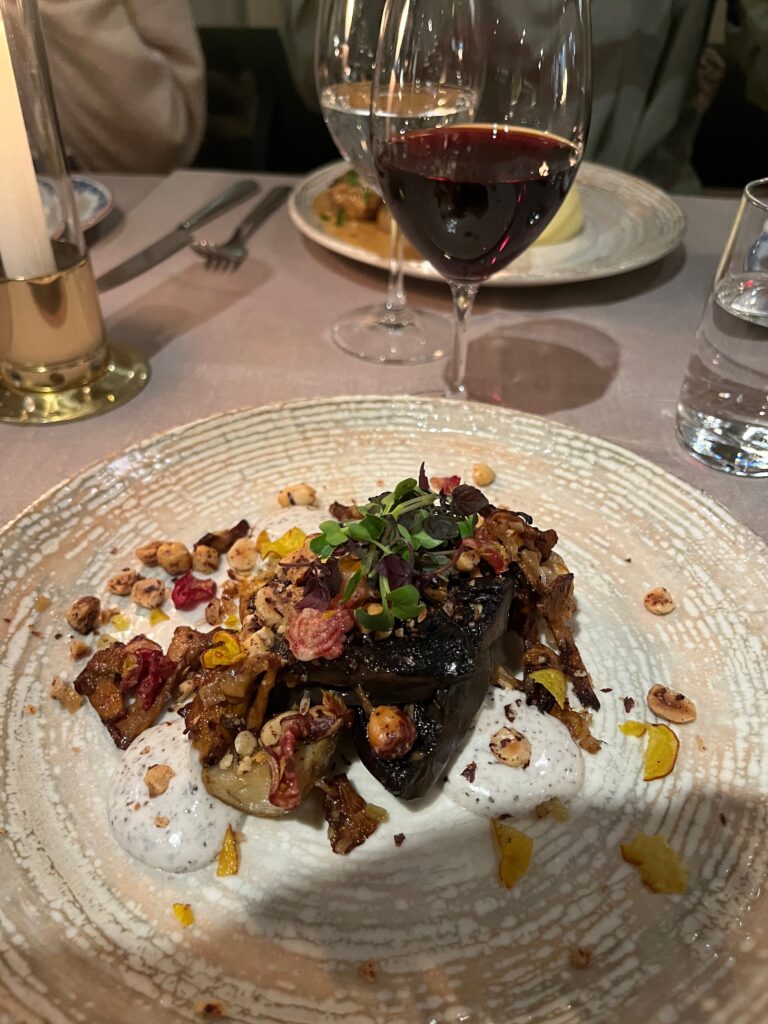
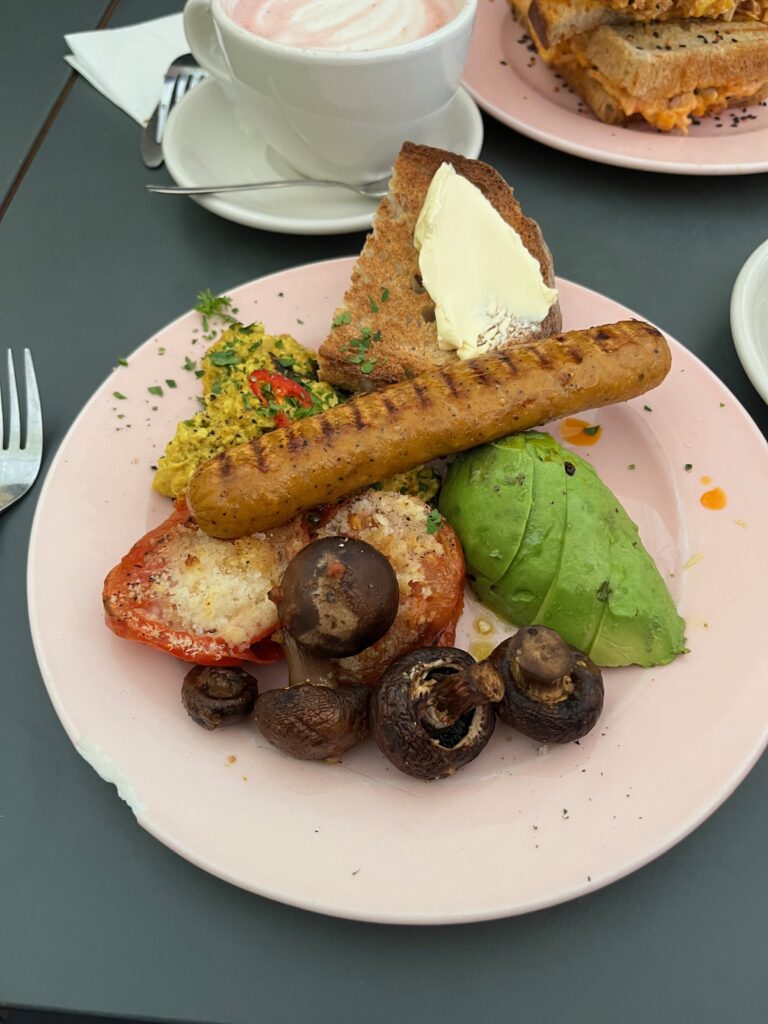
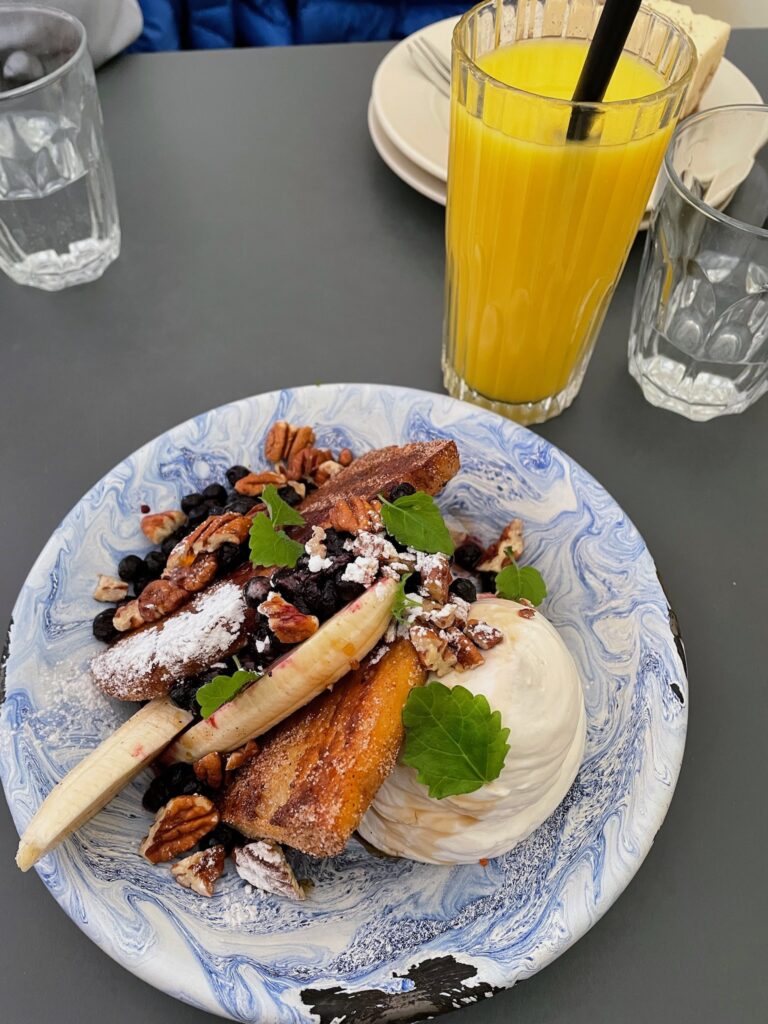
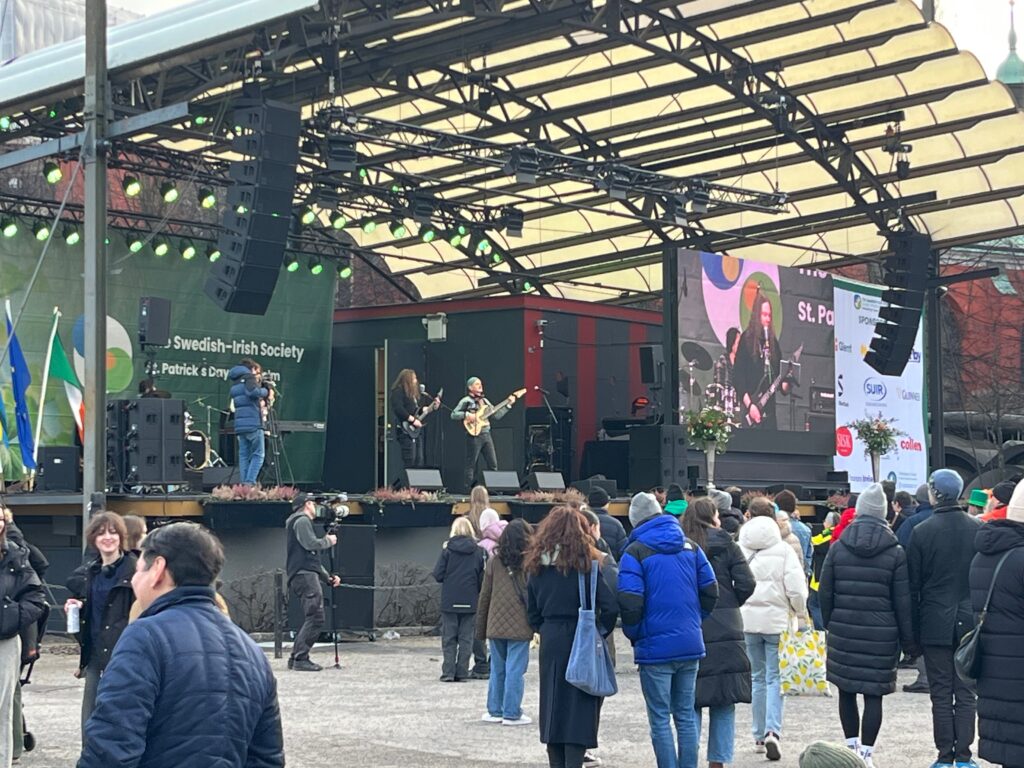
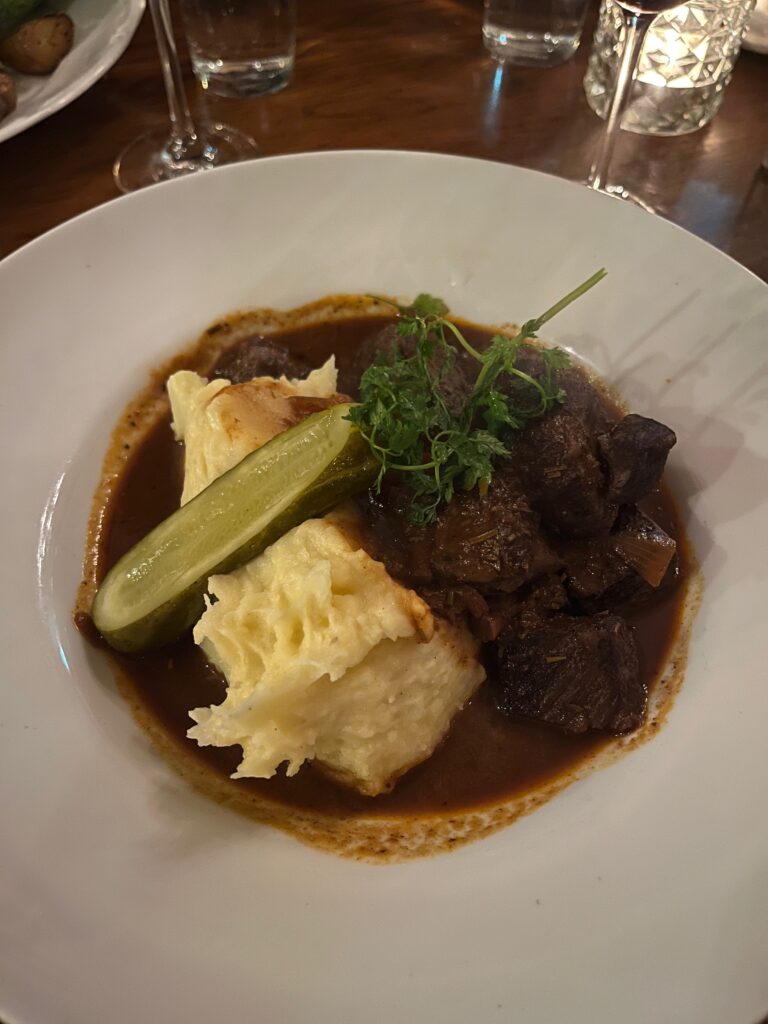
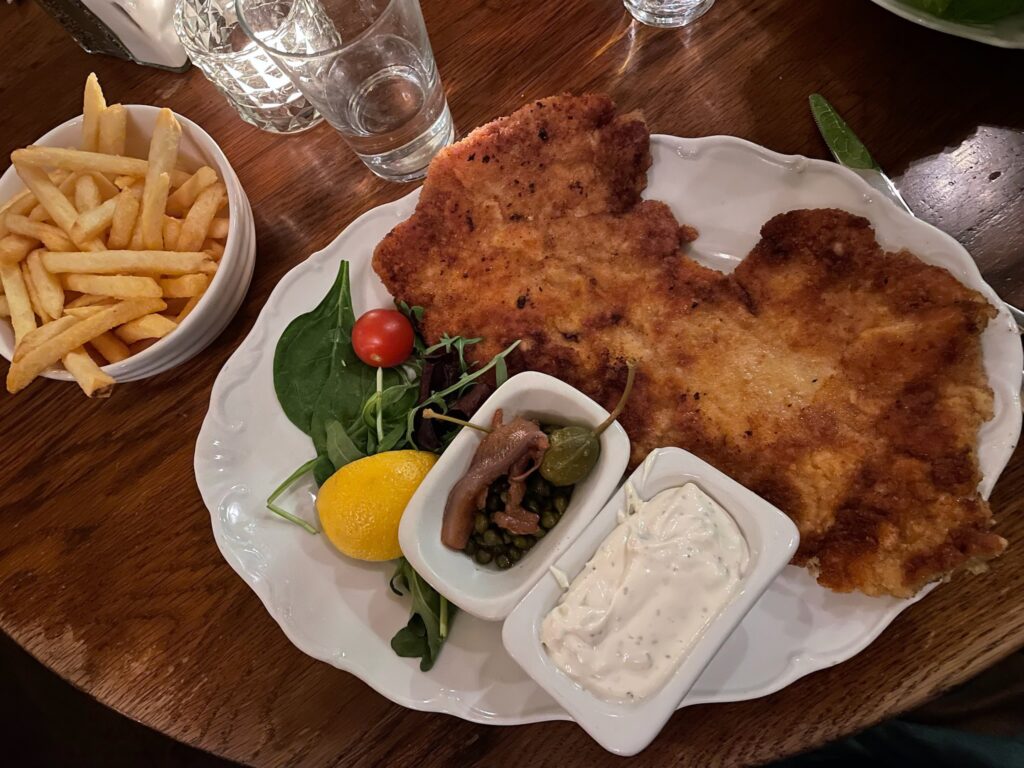
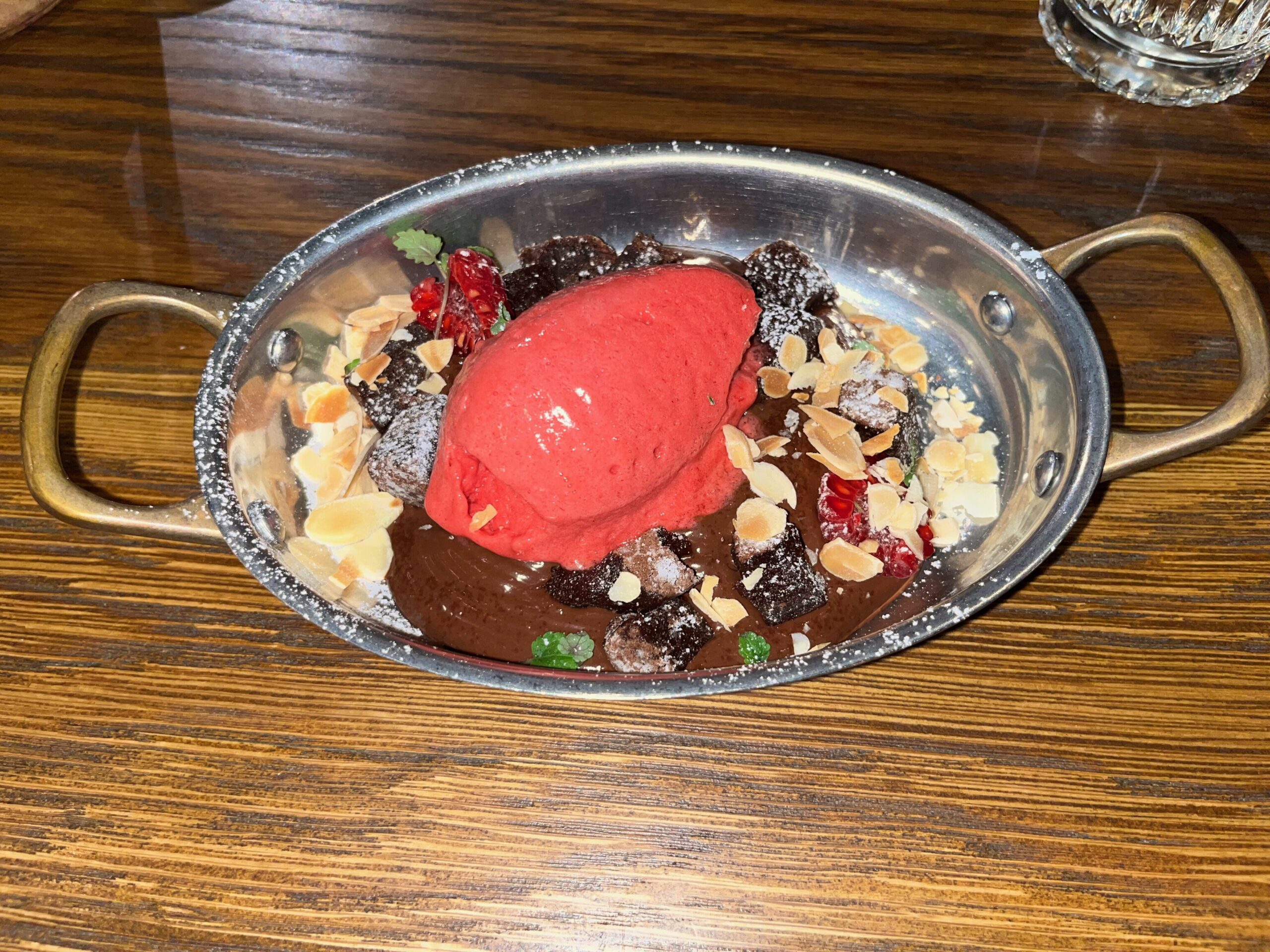
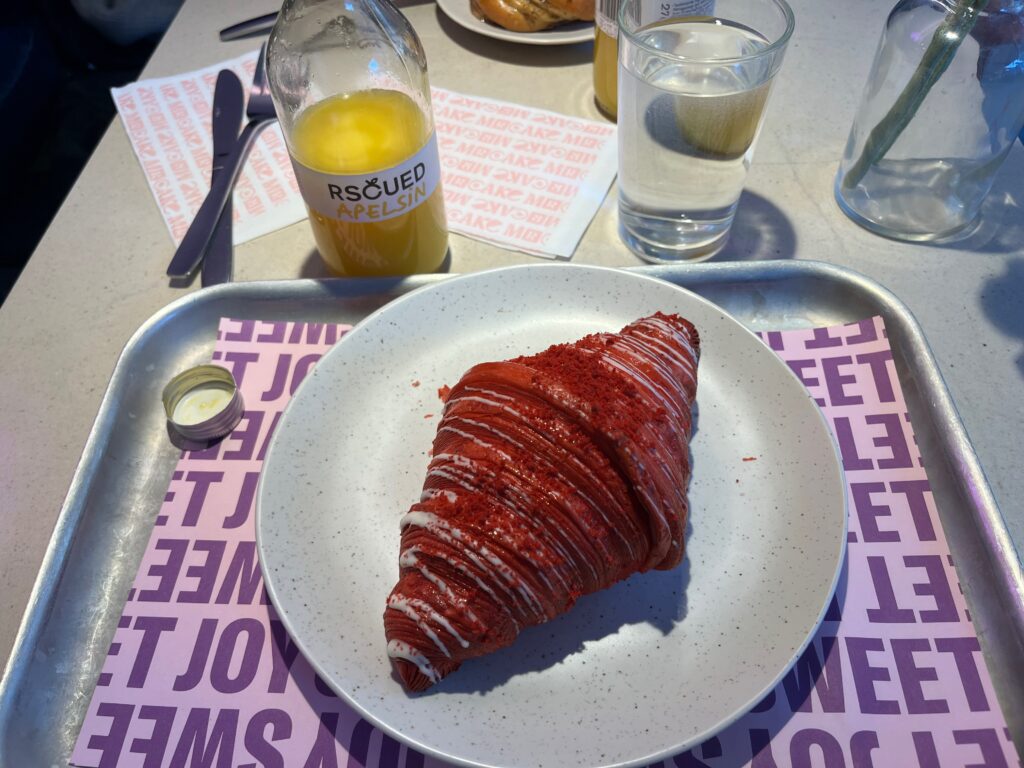
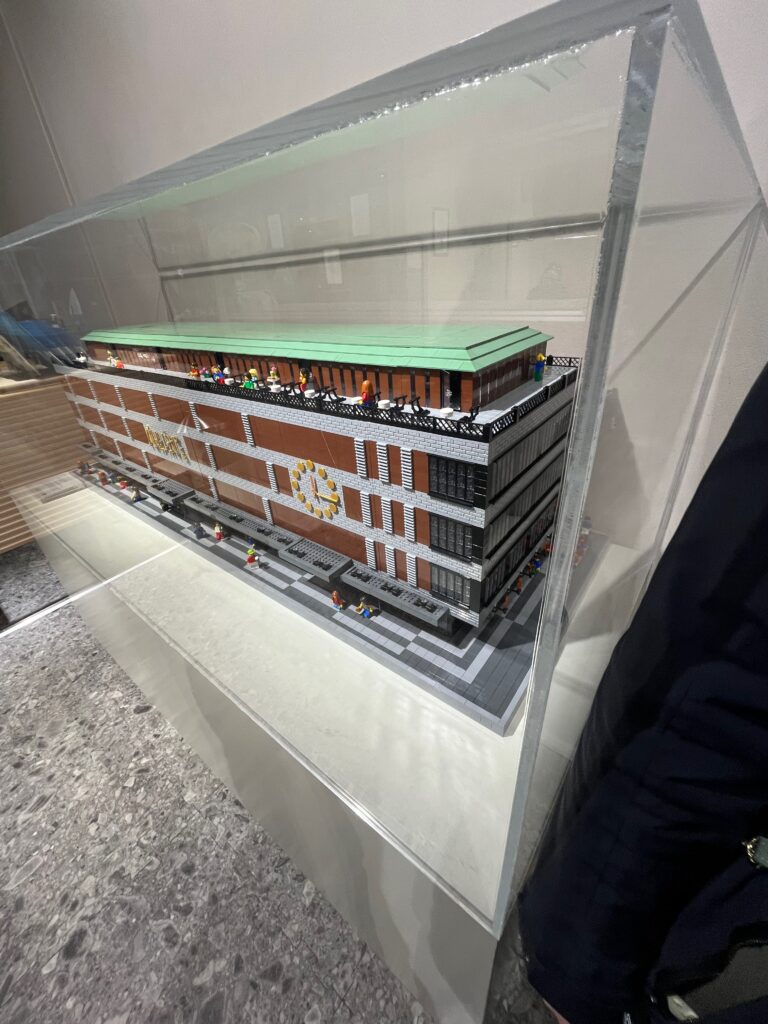
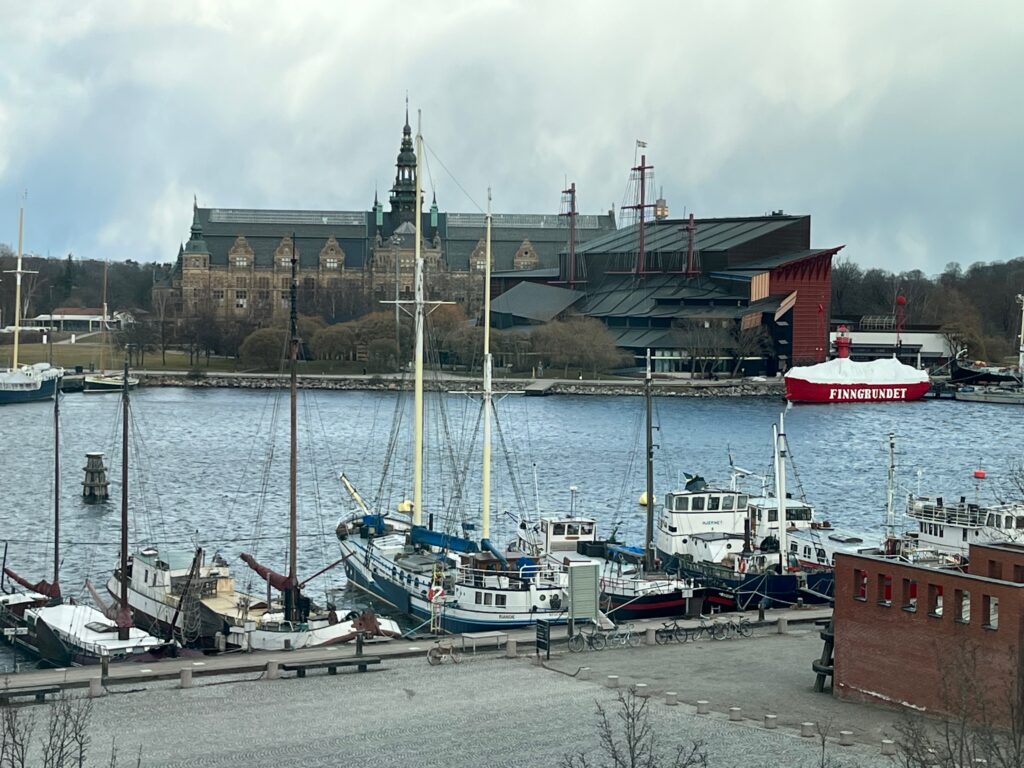
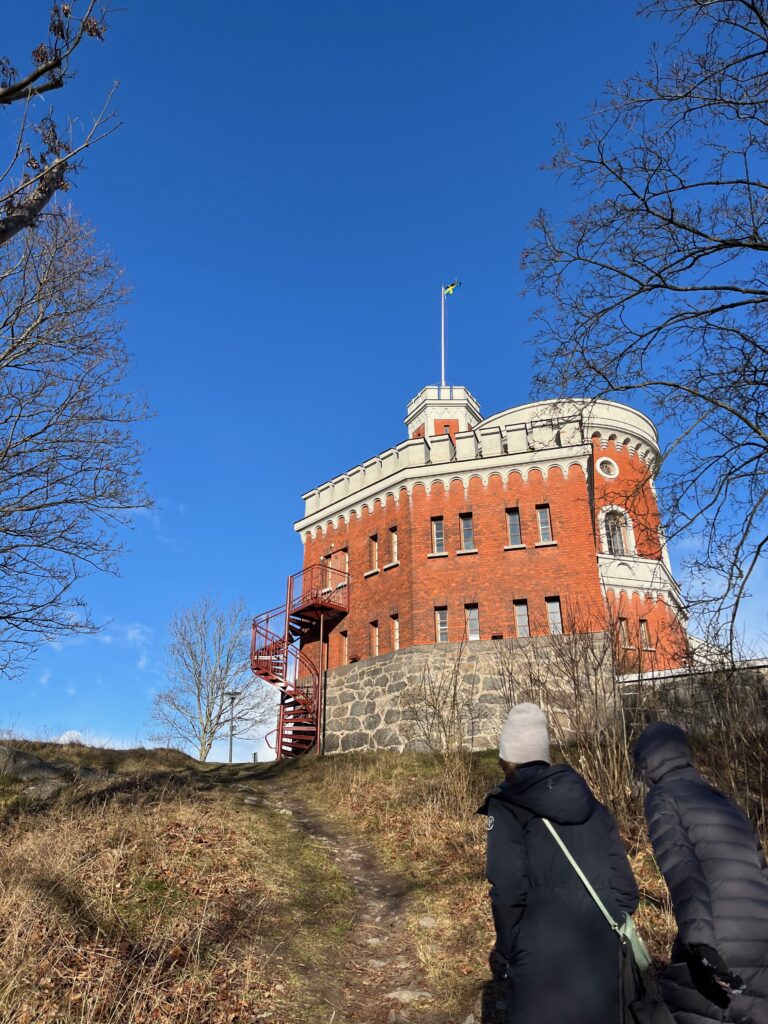
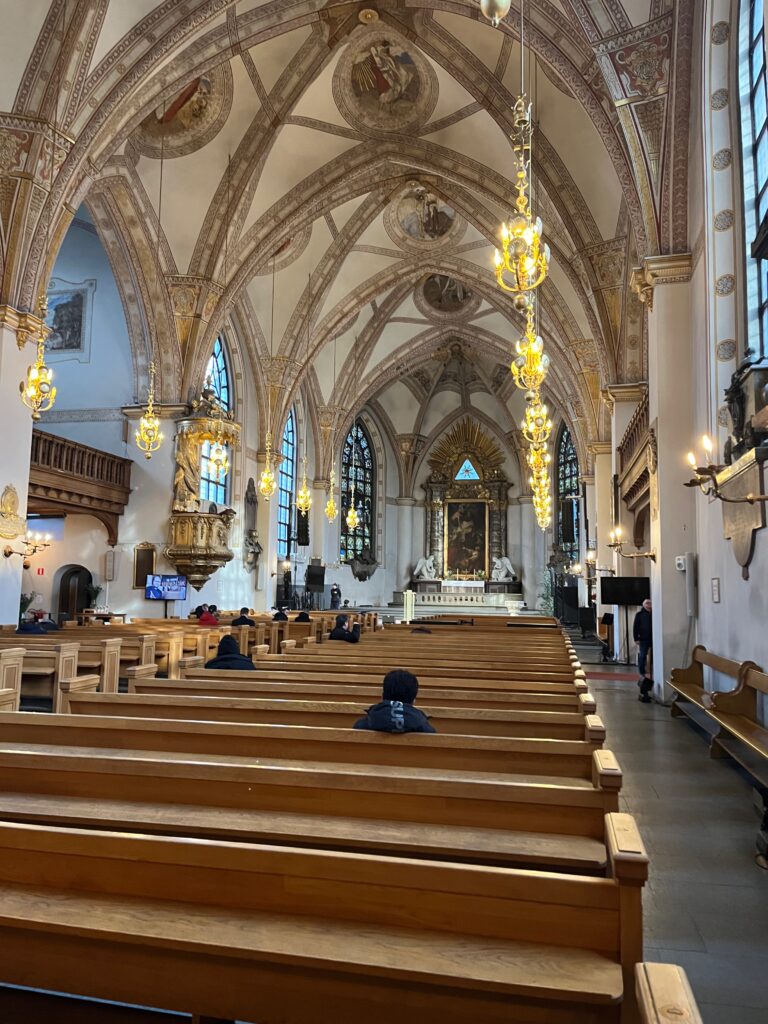
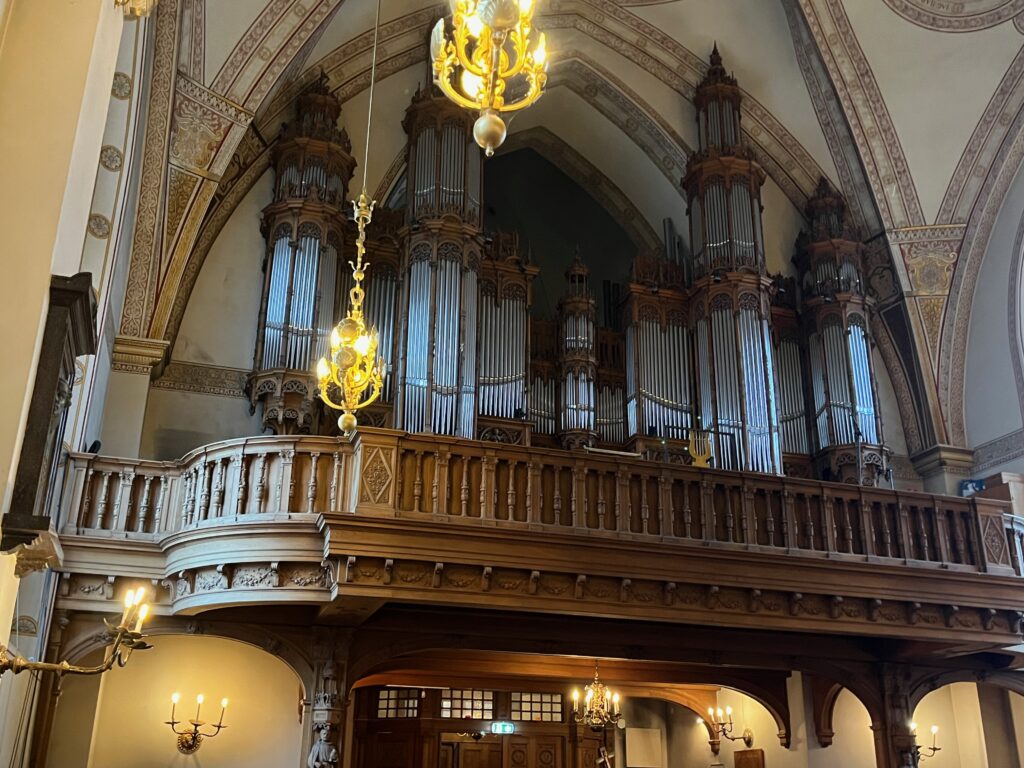
As always, we had a wonderful time in each of the locations we stayed. Our time with family and friends was priceless, and the people we met were kind, patient, and always willing to help. We look forward to getting back to Stockholm again. It has, in many ways, become our second home. We also look forward to traveling to northern Denmark when the weather is more hospitable. While we’re very accustomed to traveling in shoulder season weather, it occasionally limits the activities in which you can engage.
Thank you my loyal readers for again working your way through one of my travel blogs. As always, I appreciate your feedback and comments.